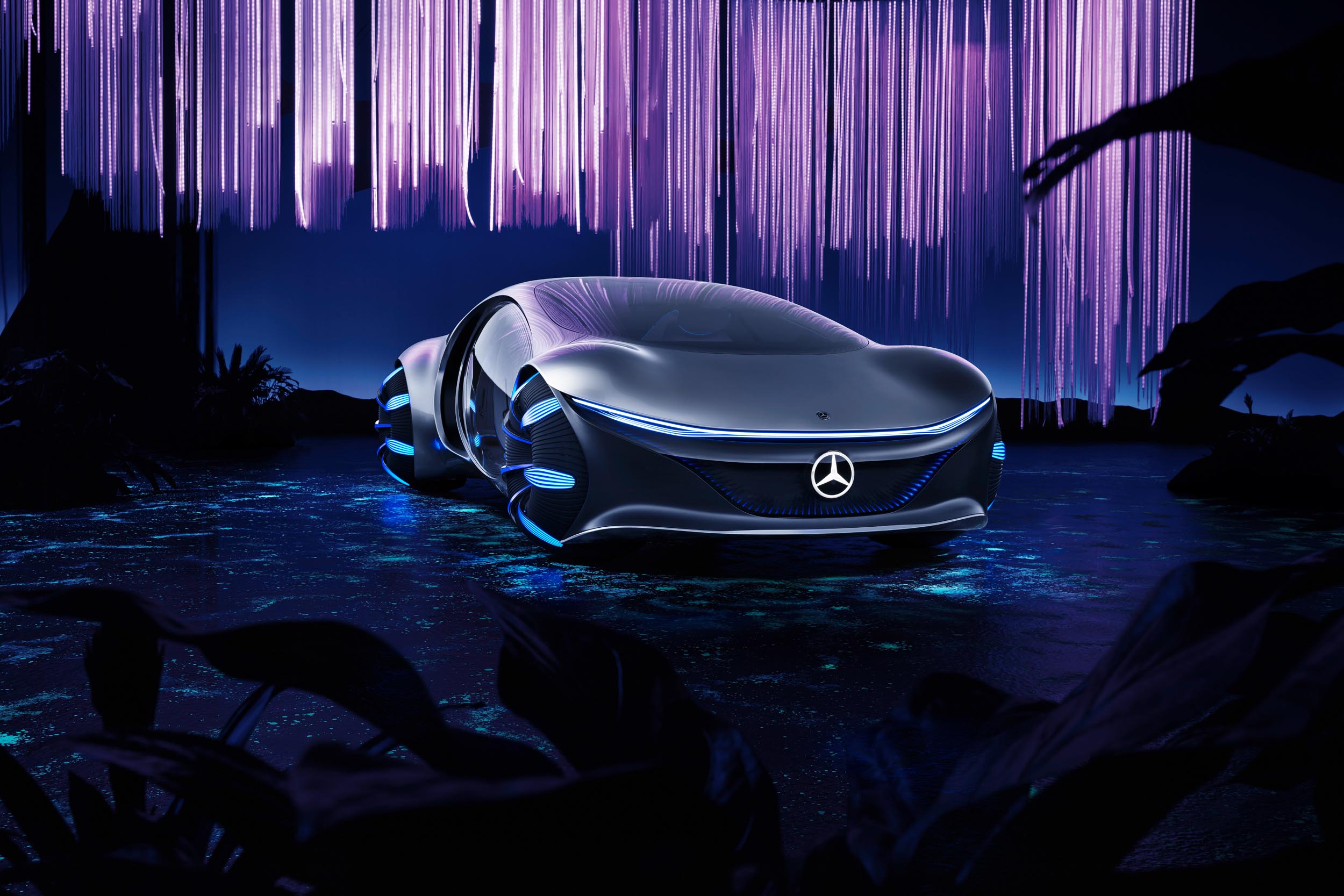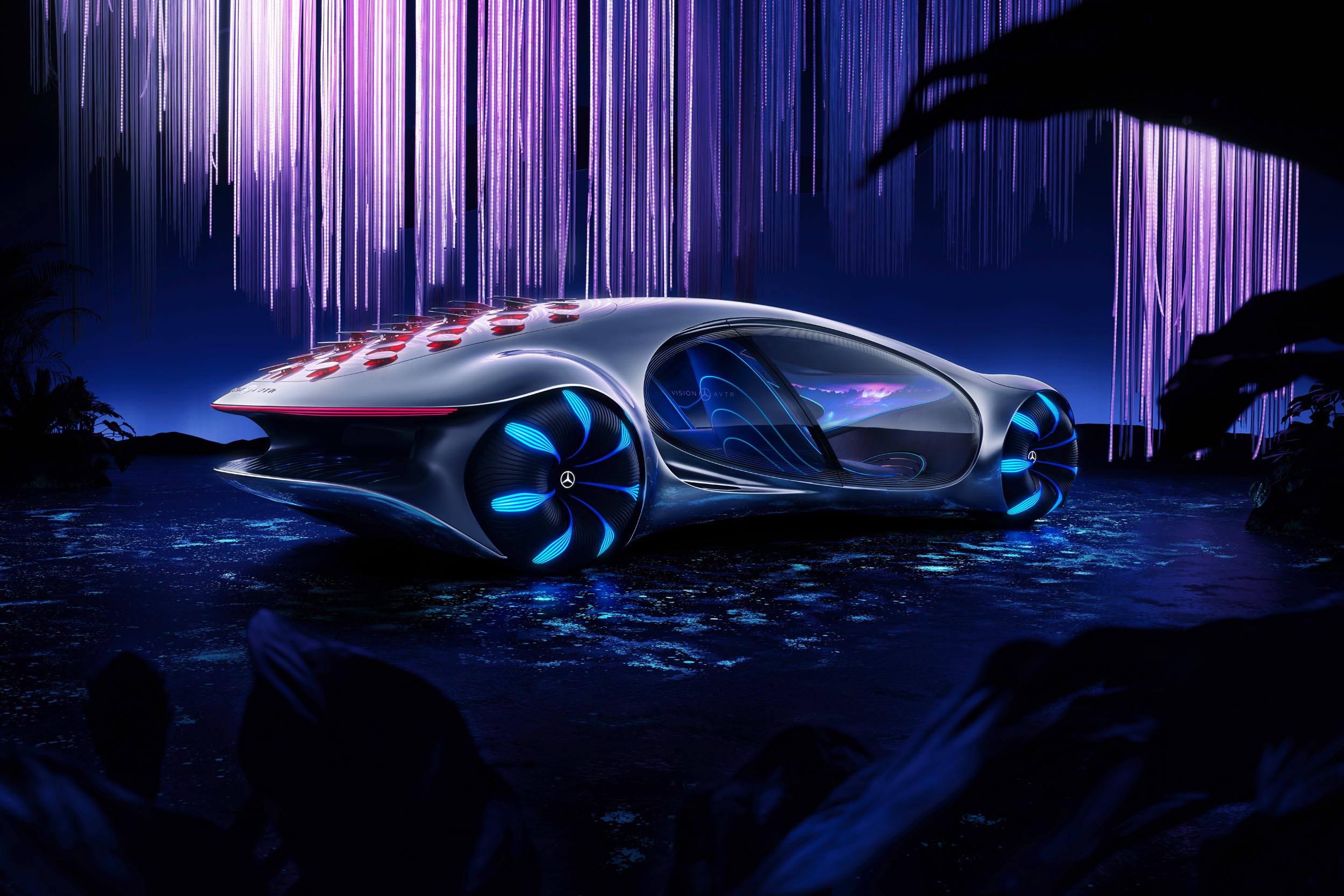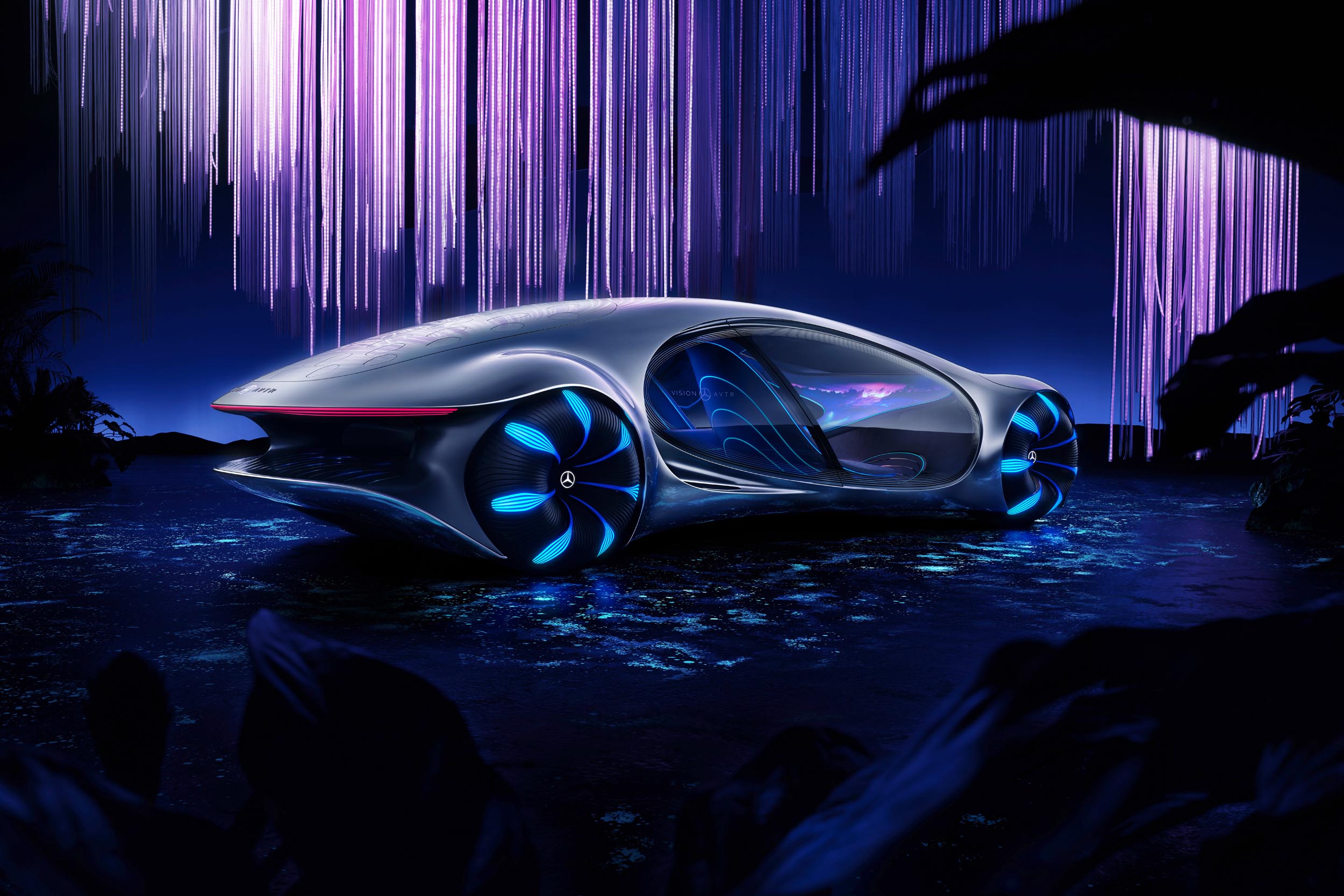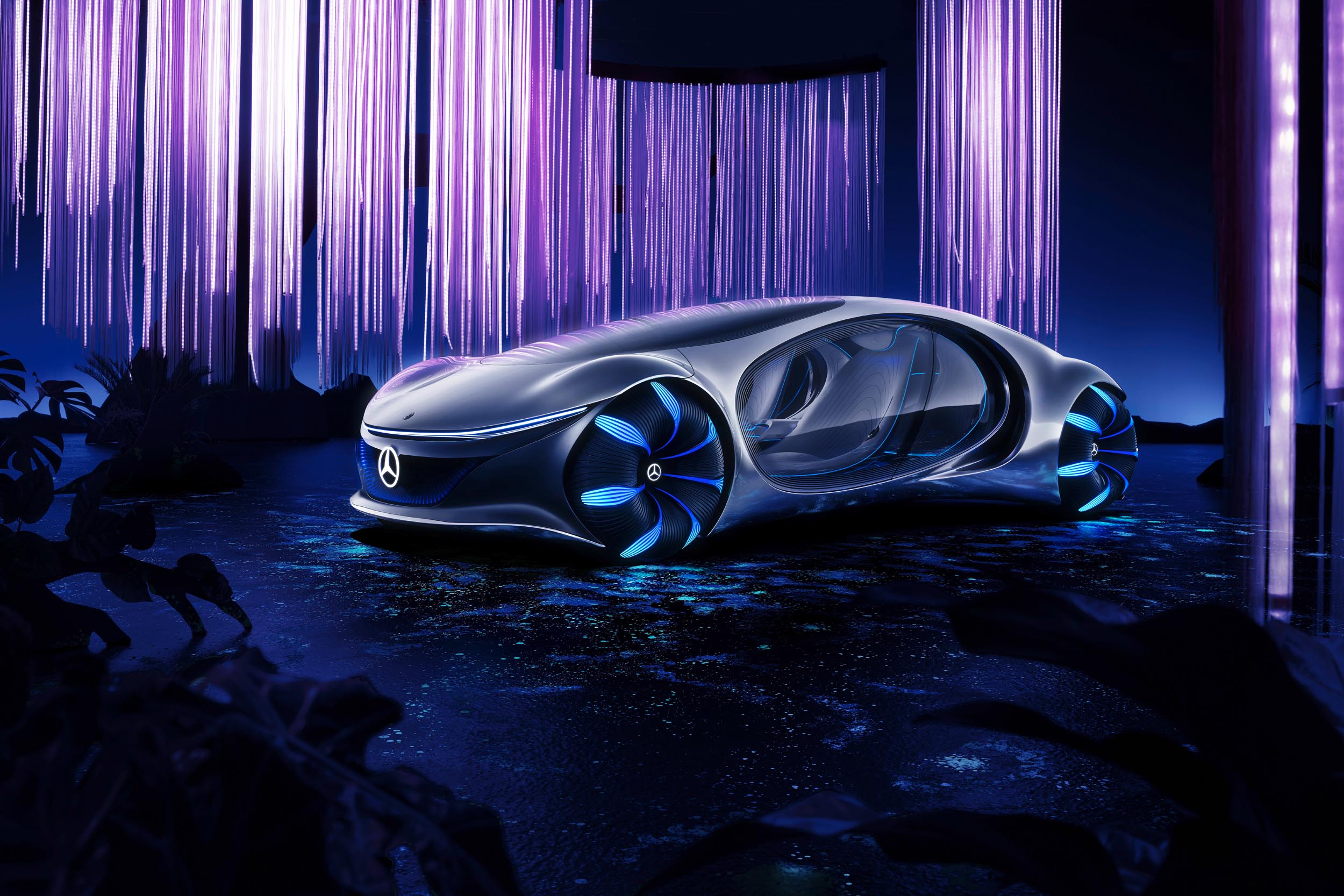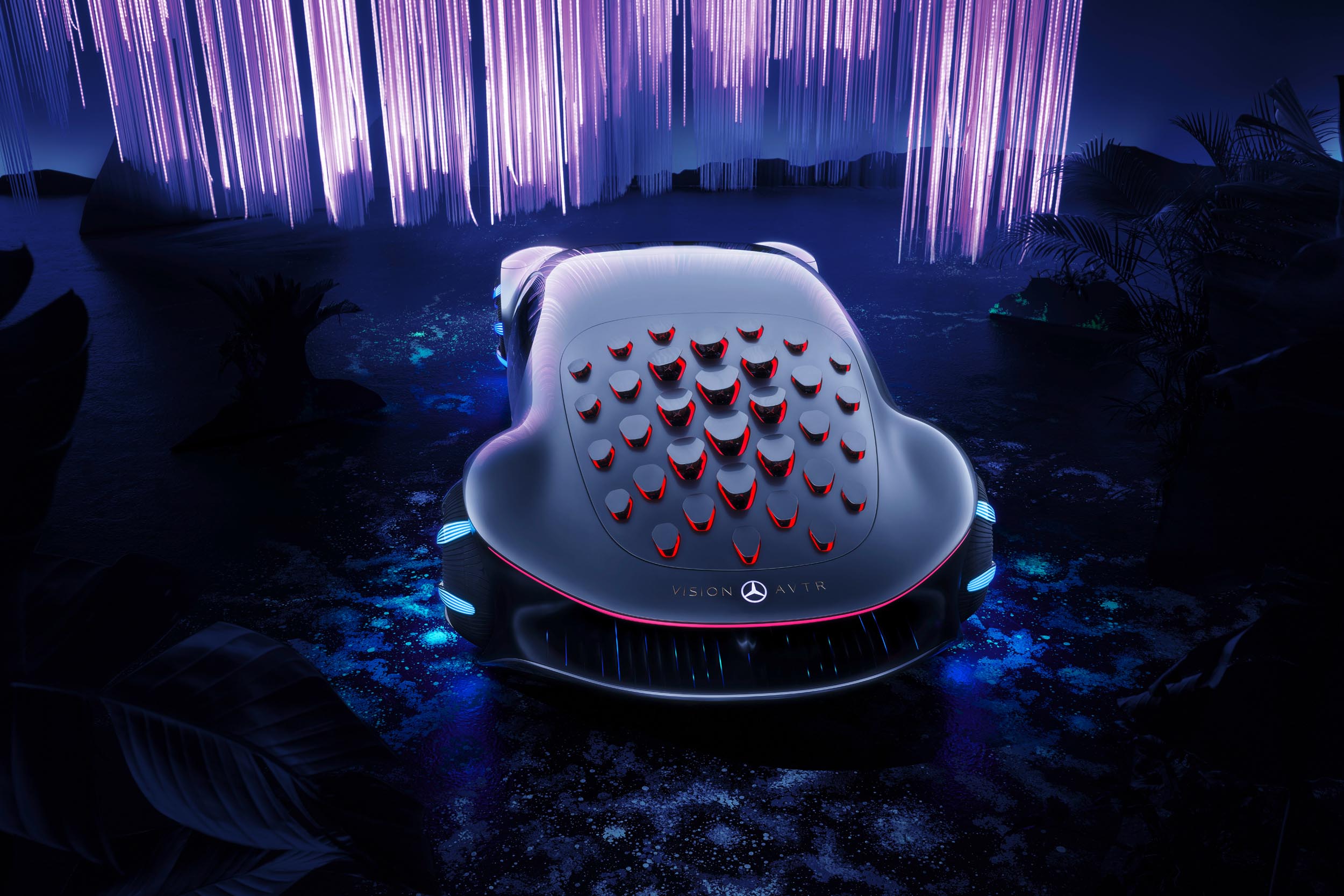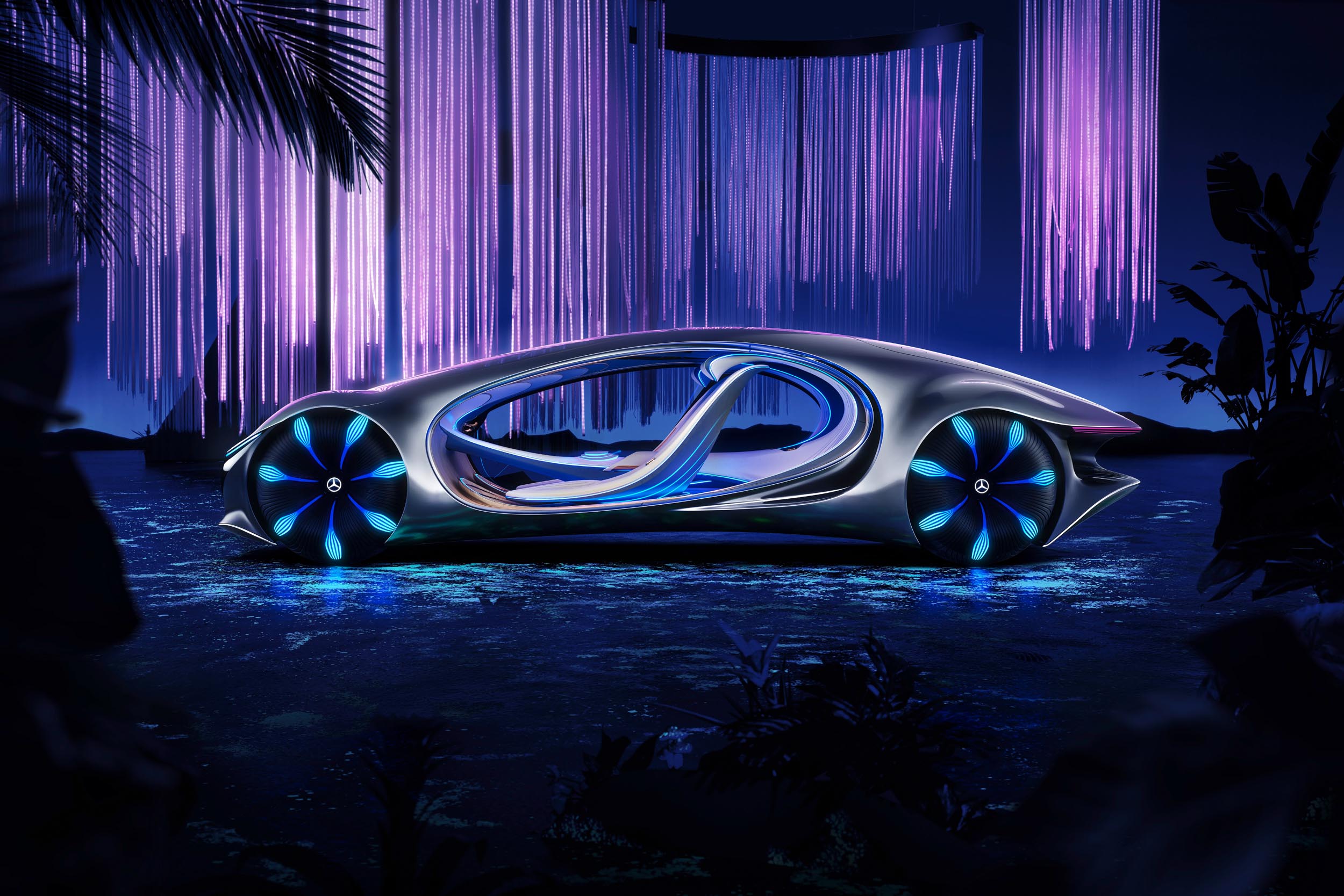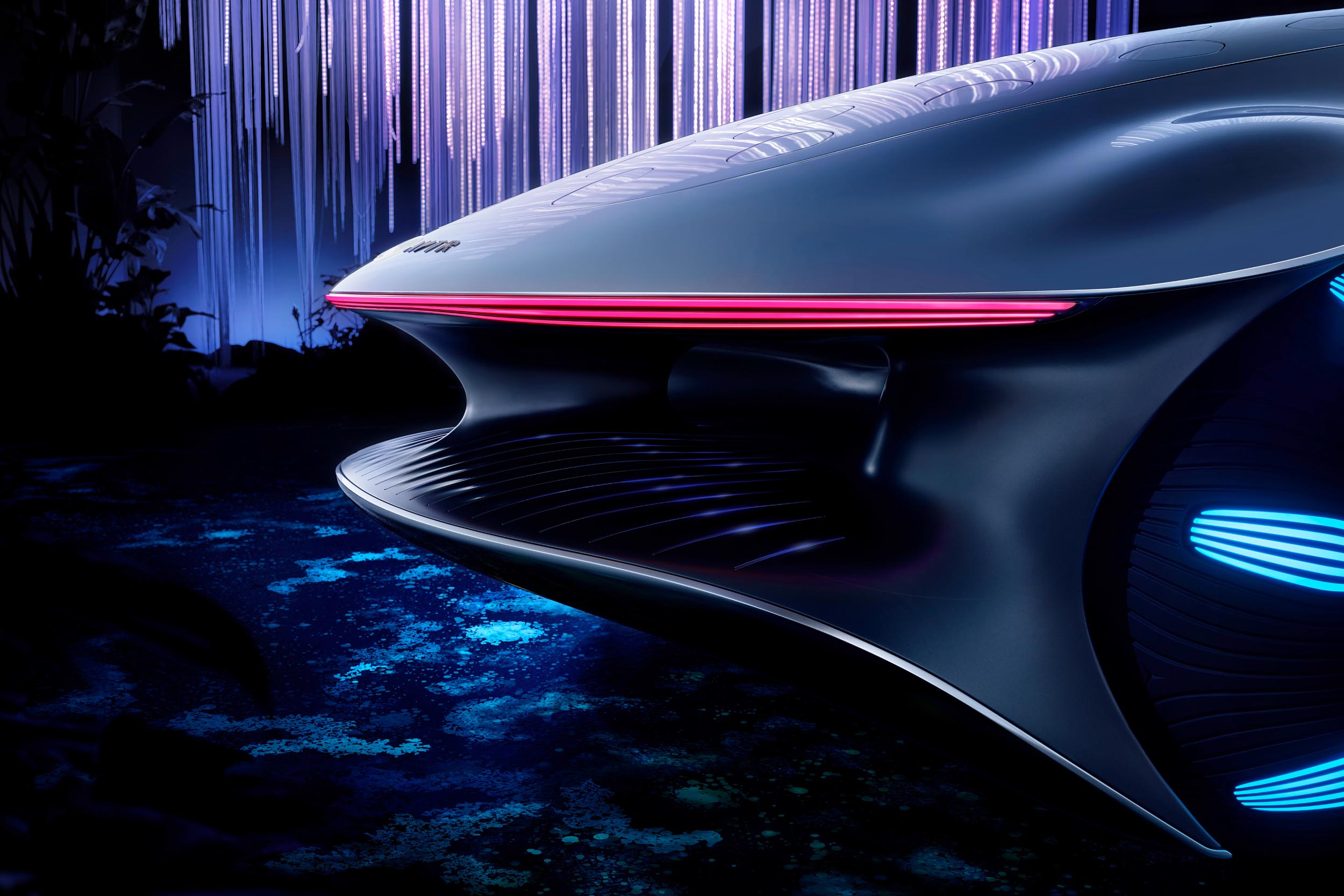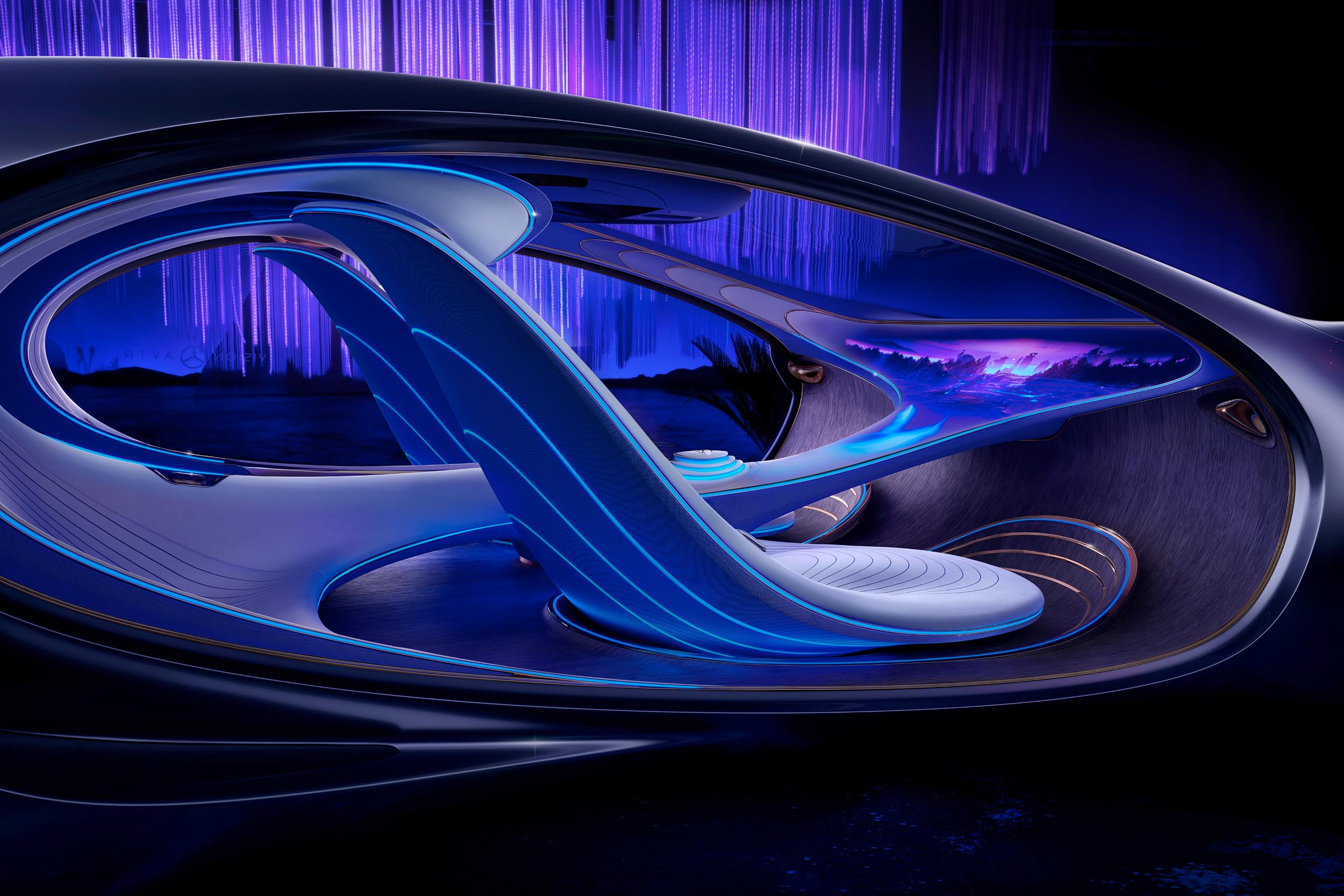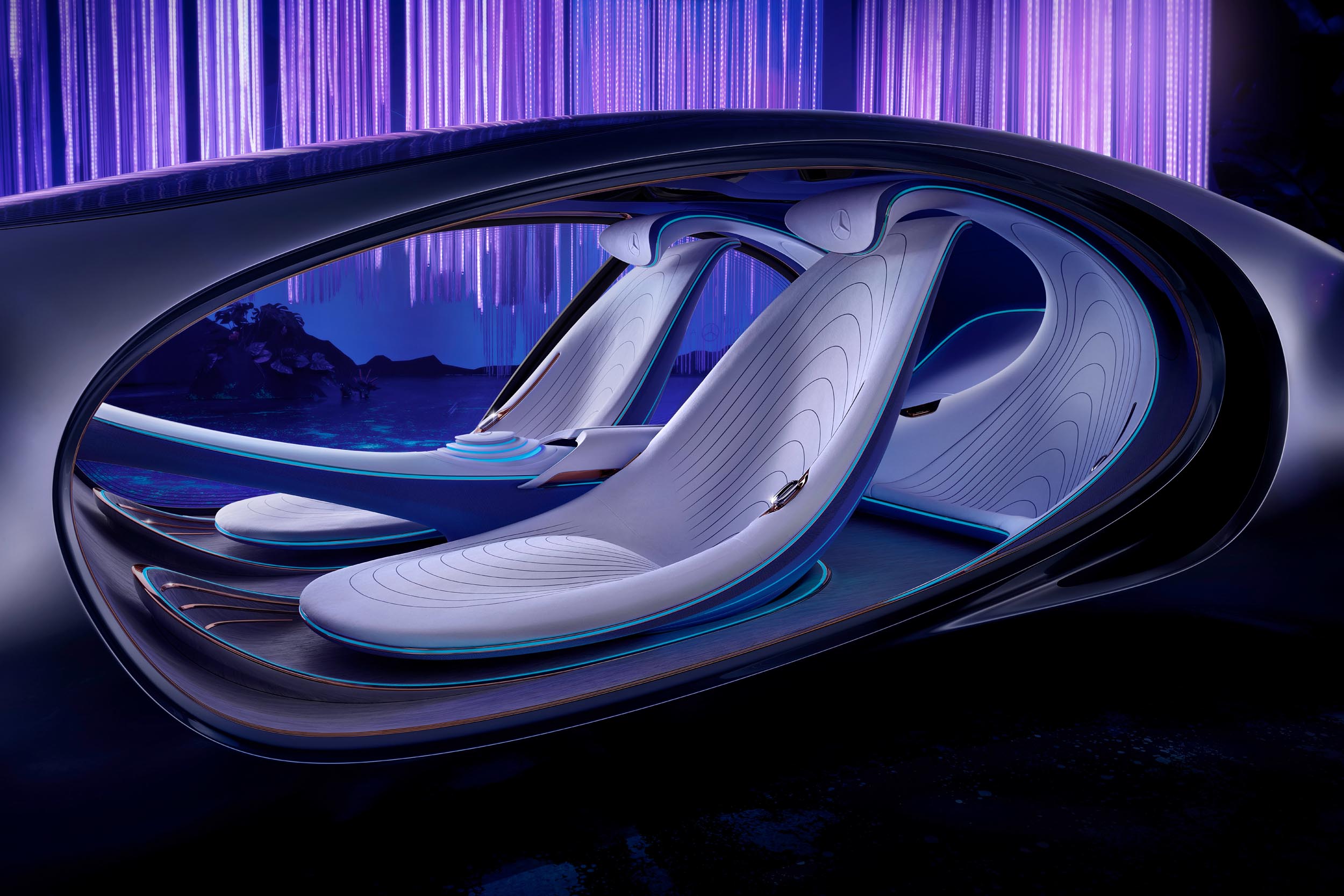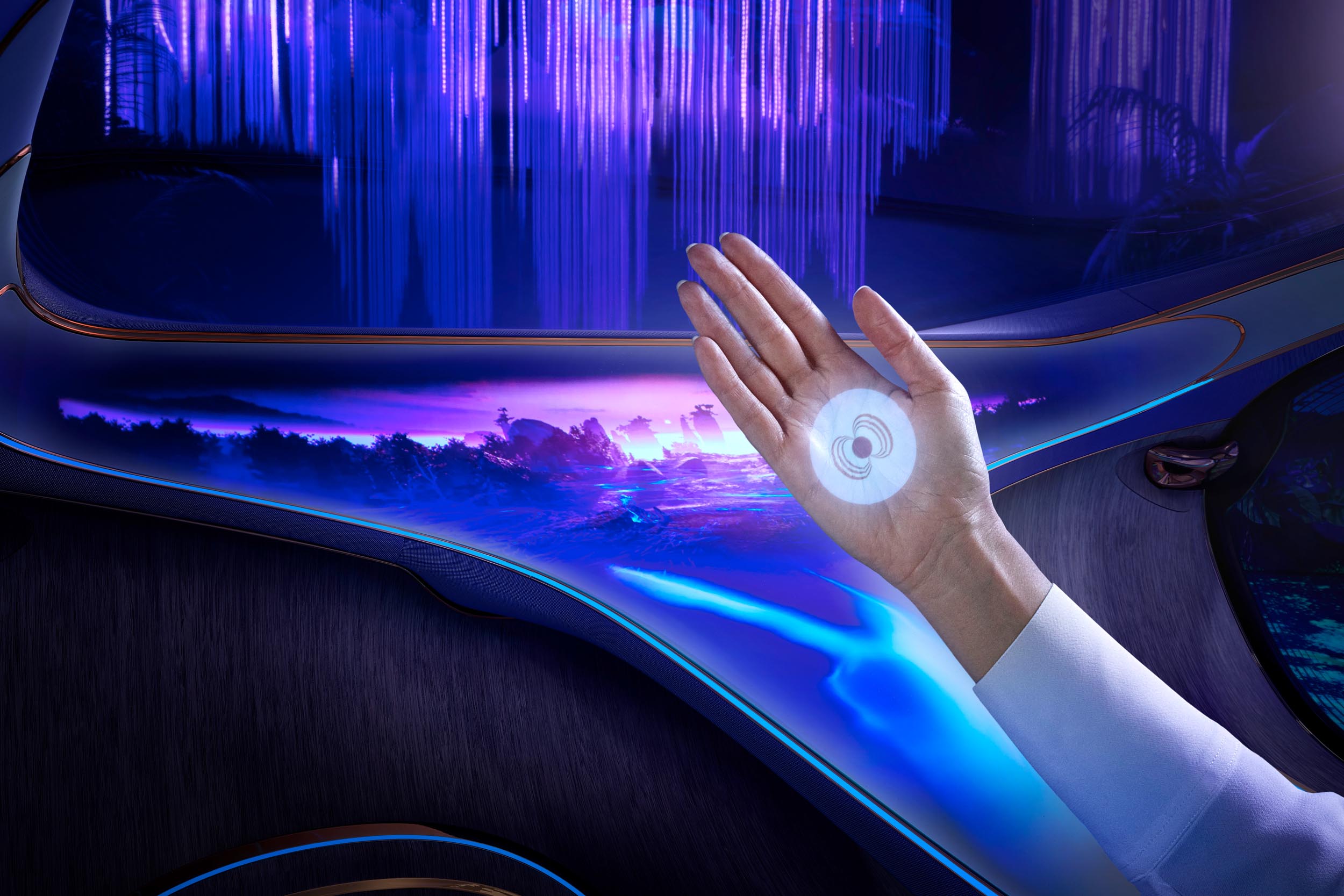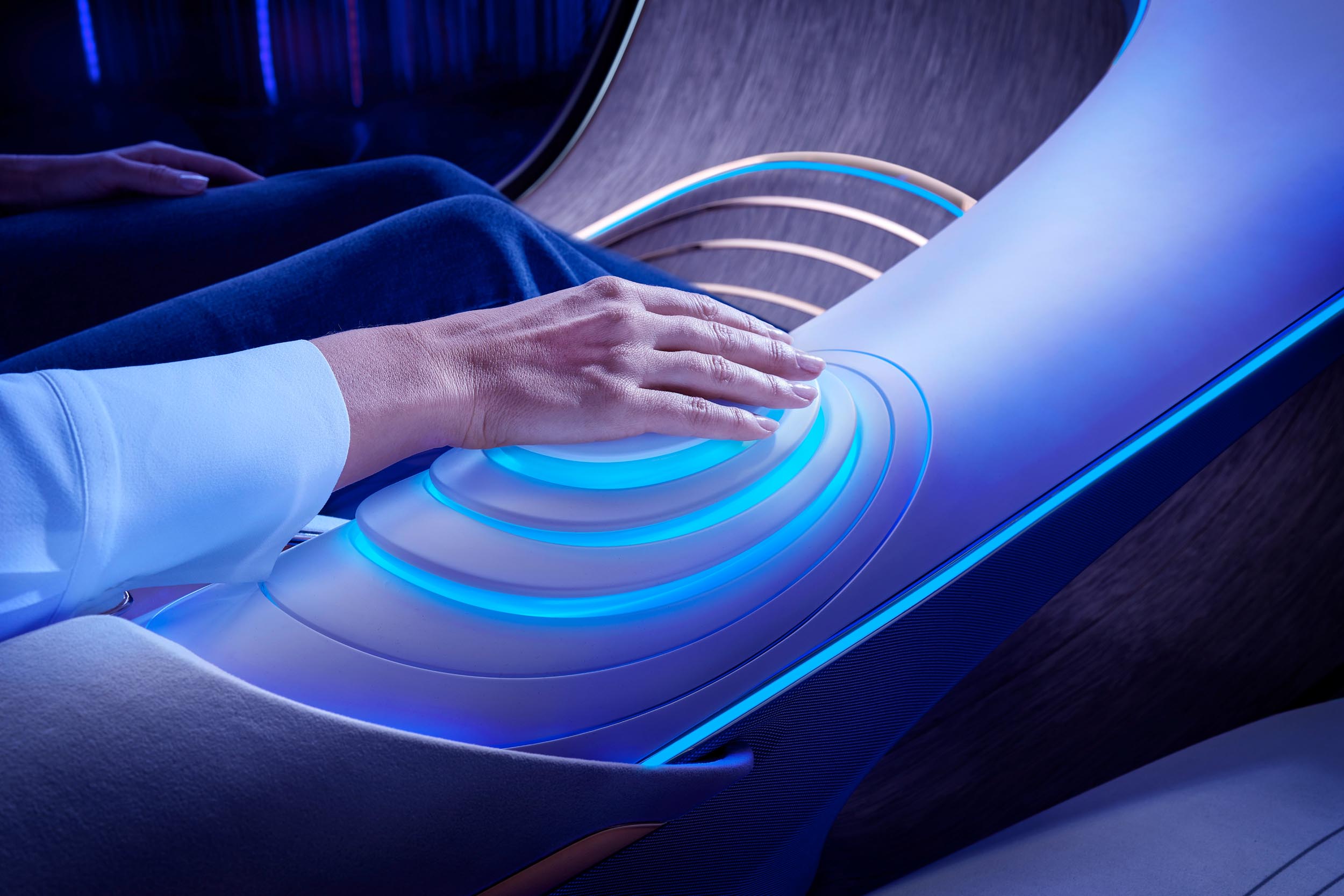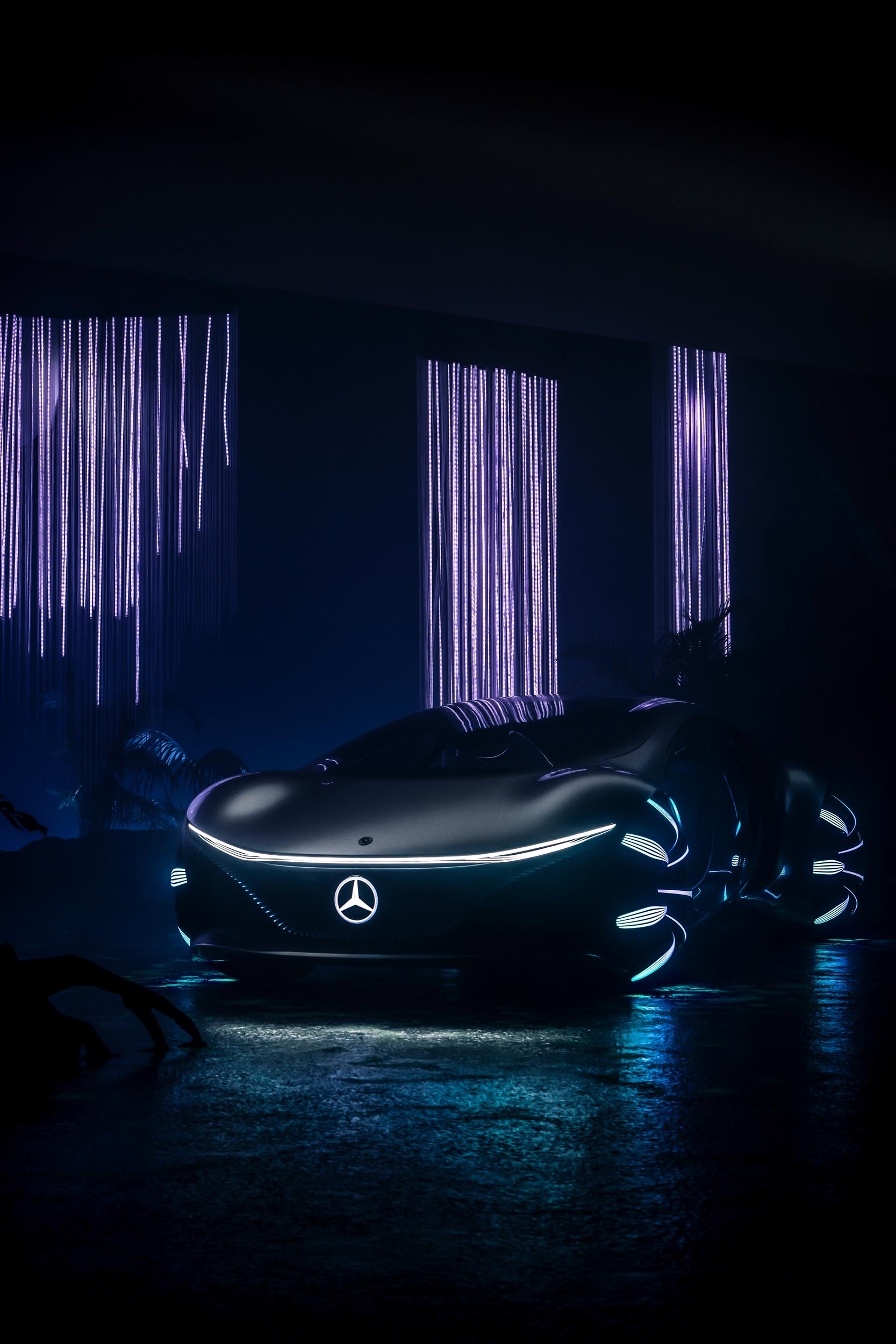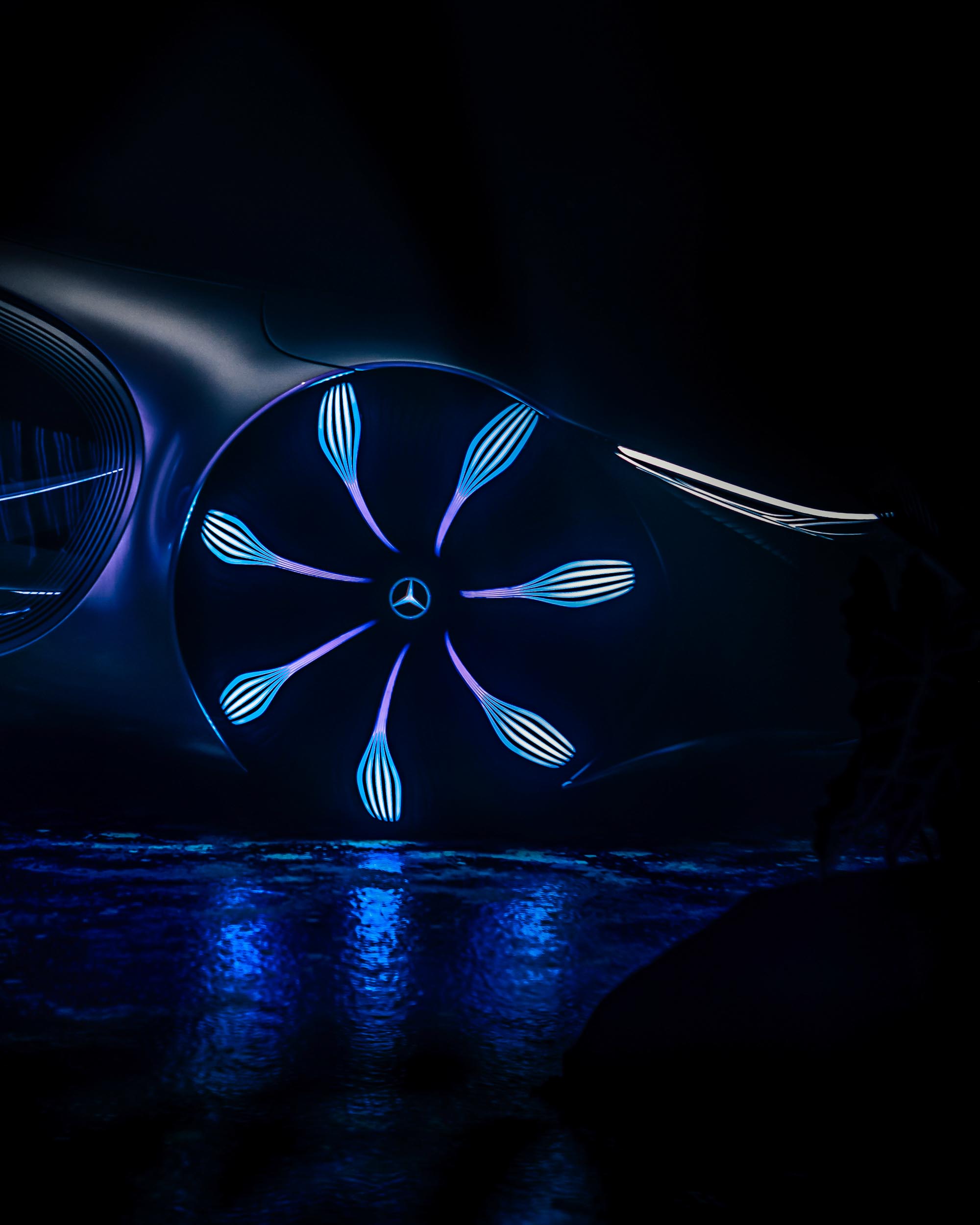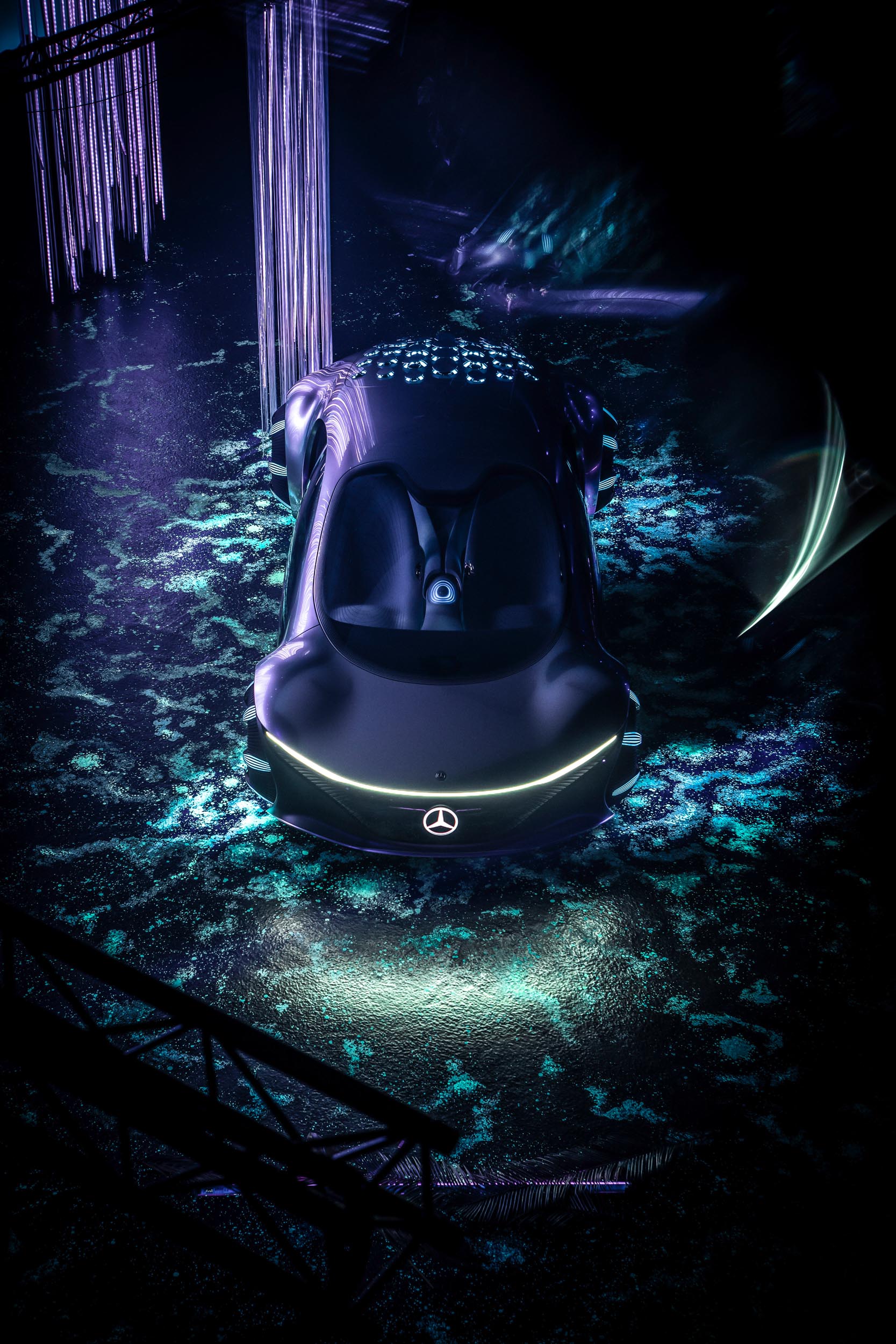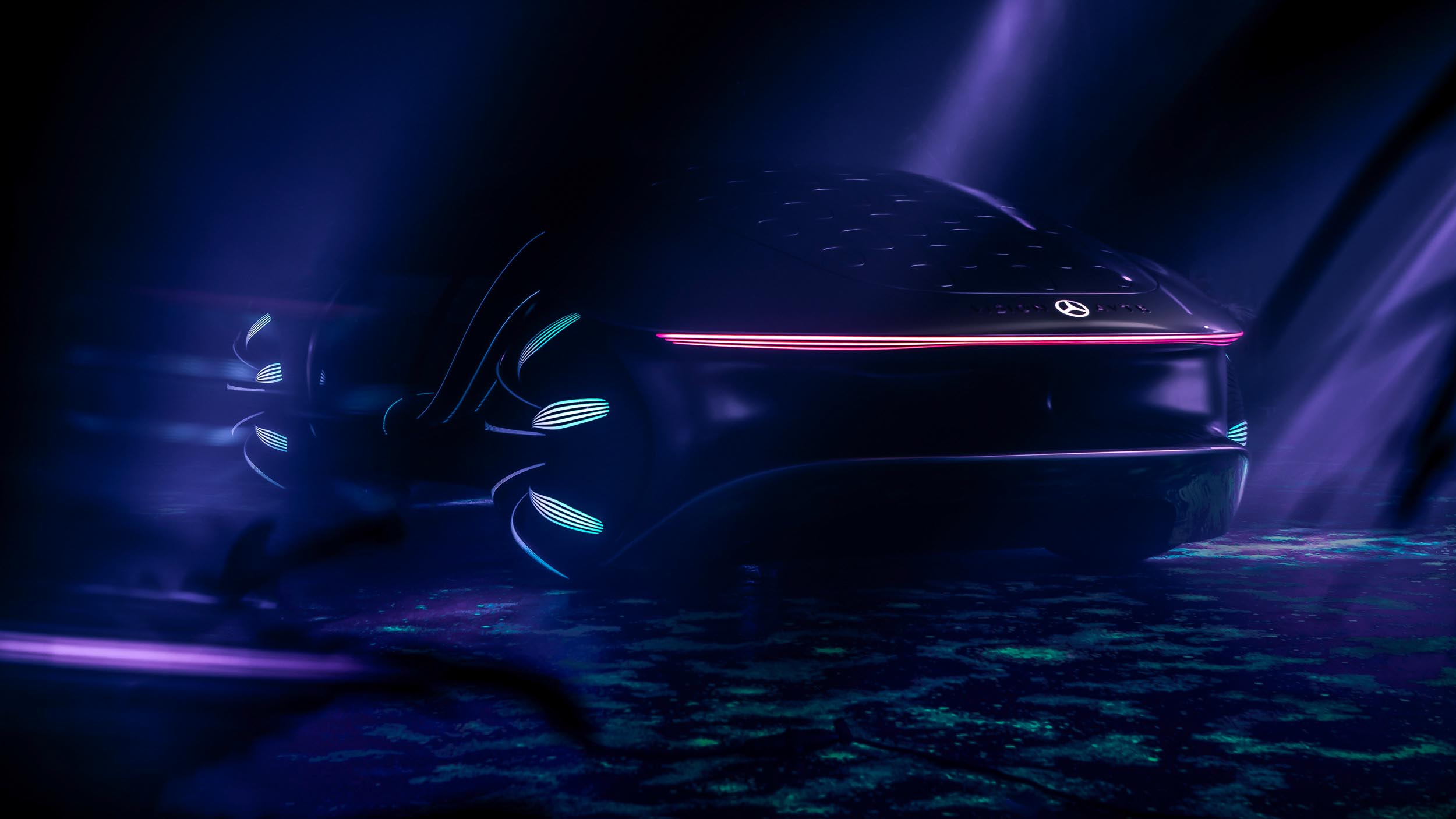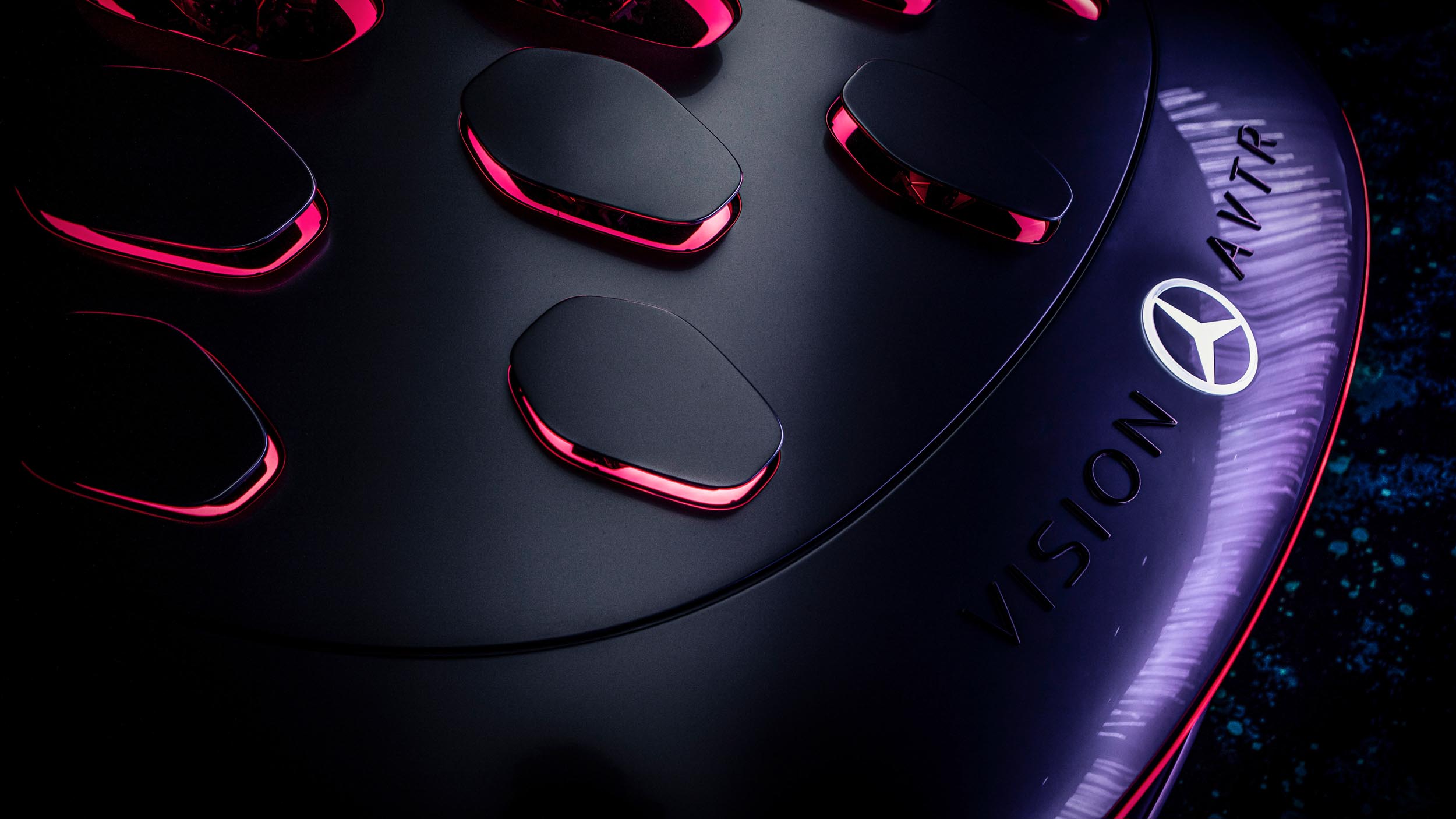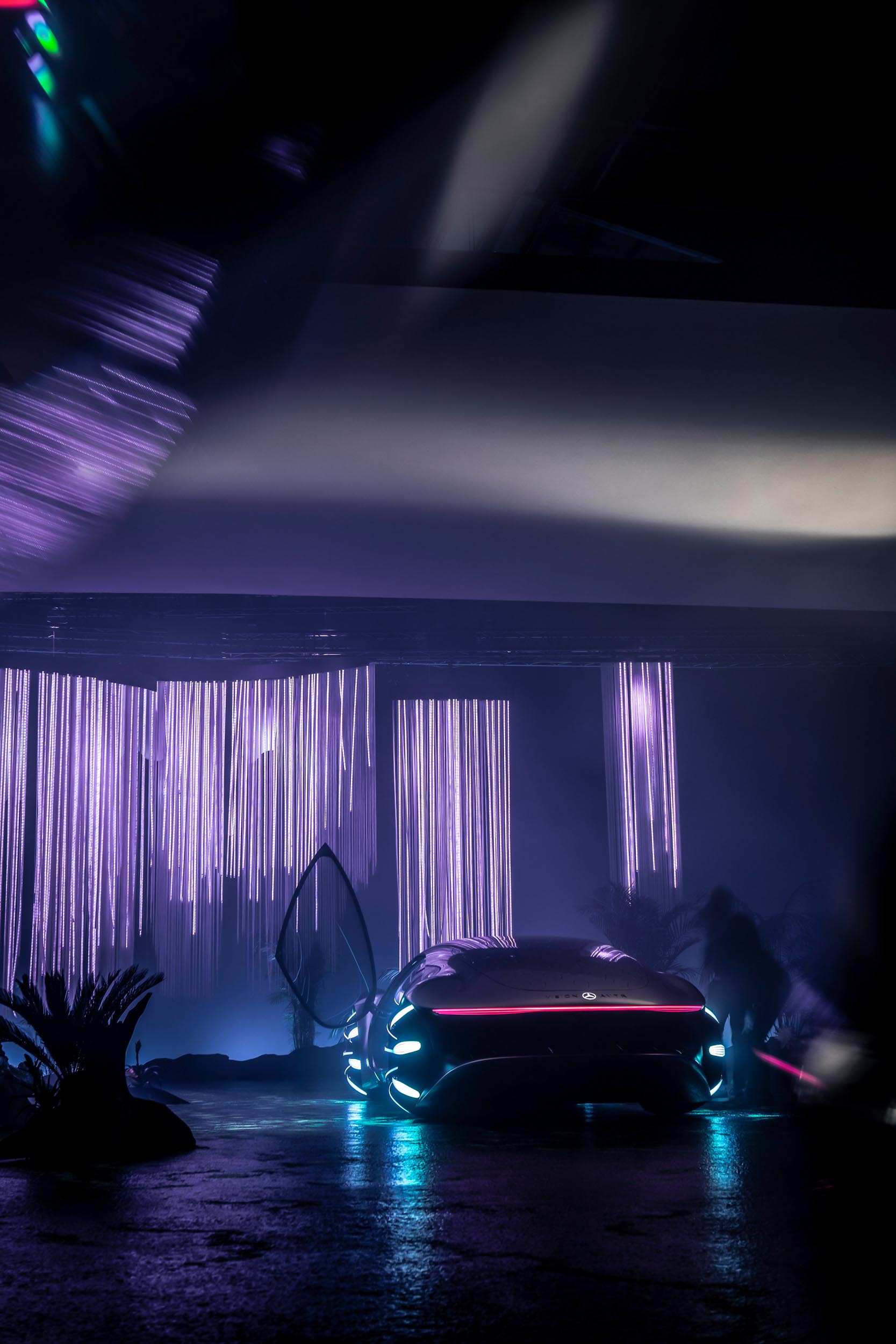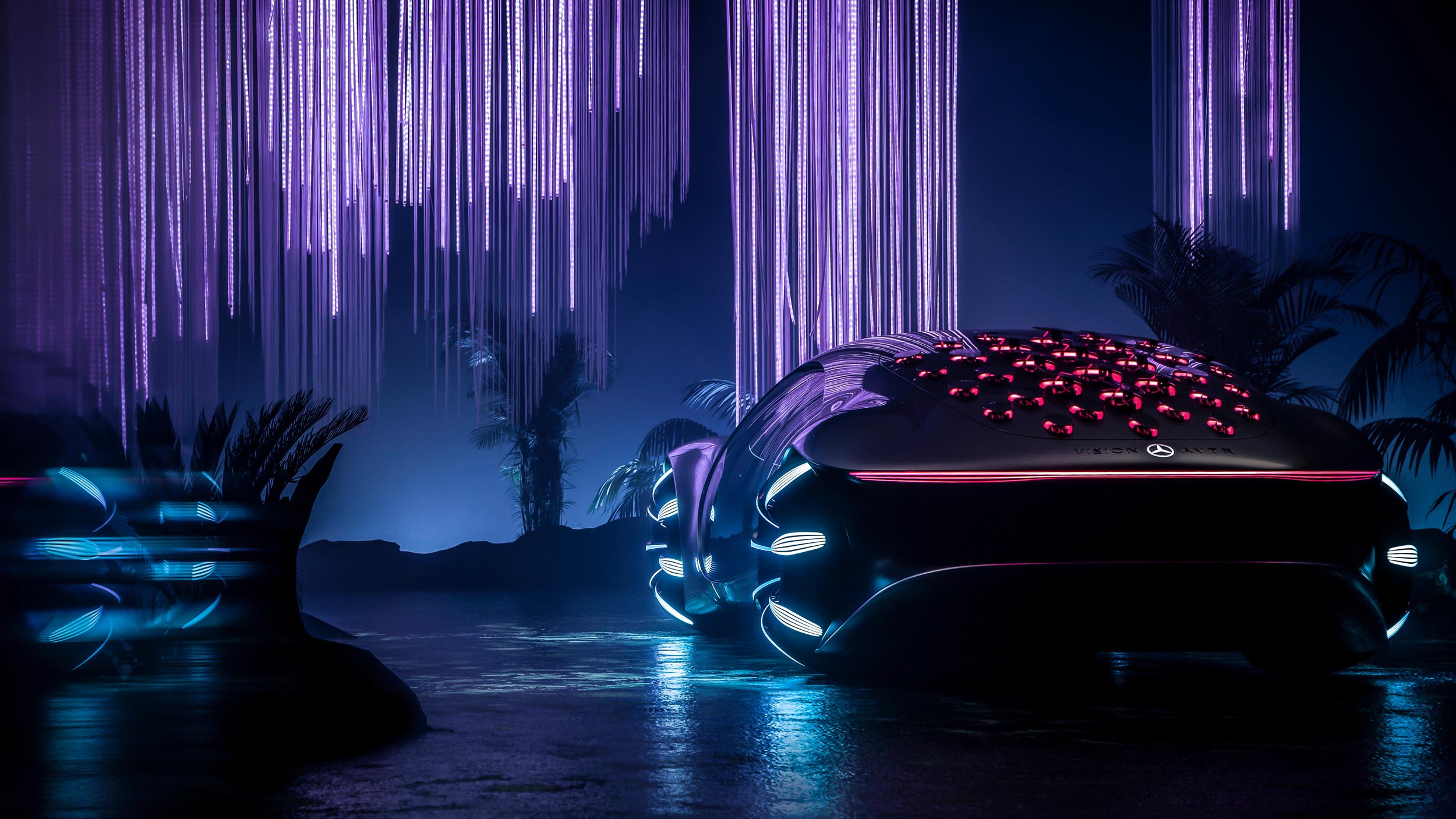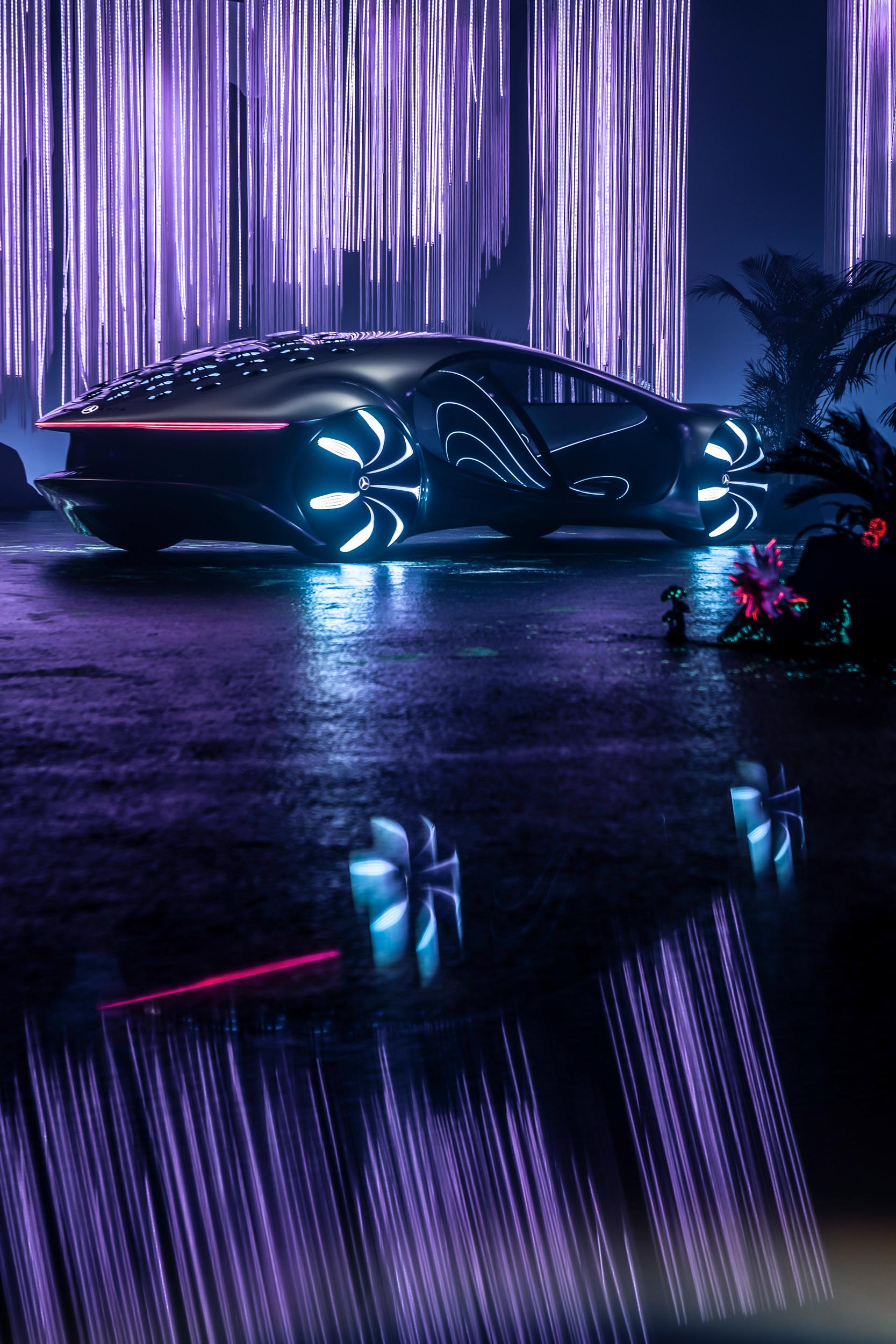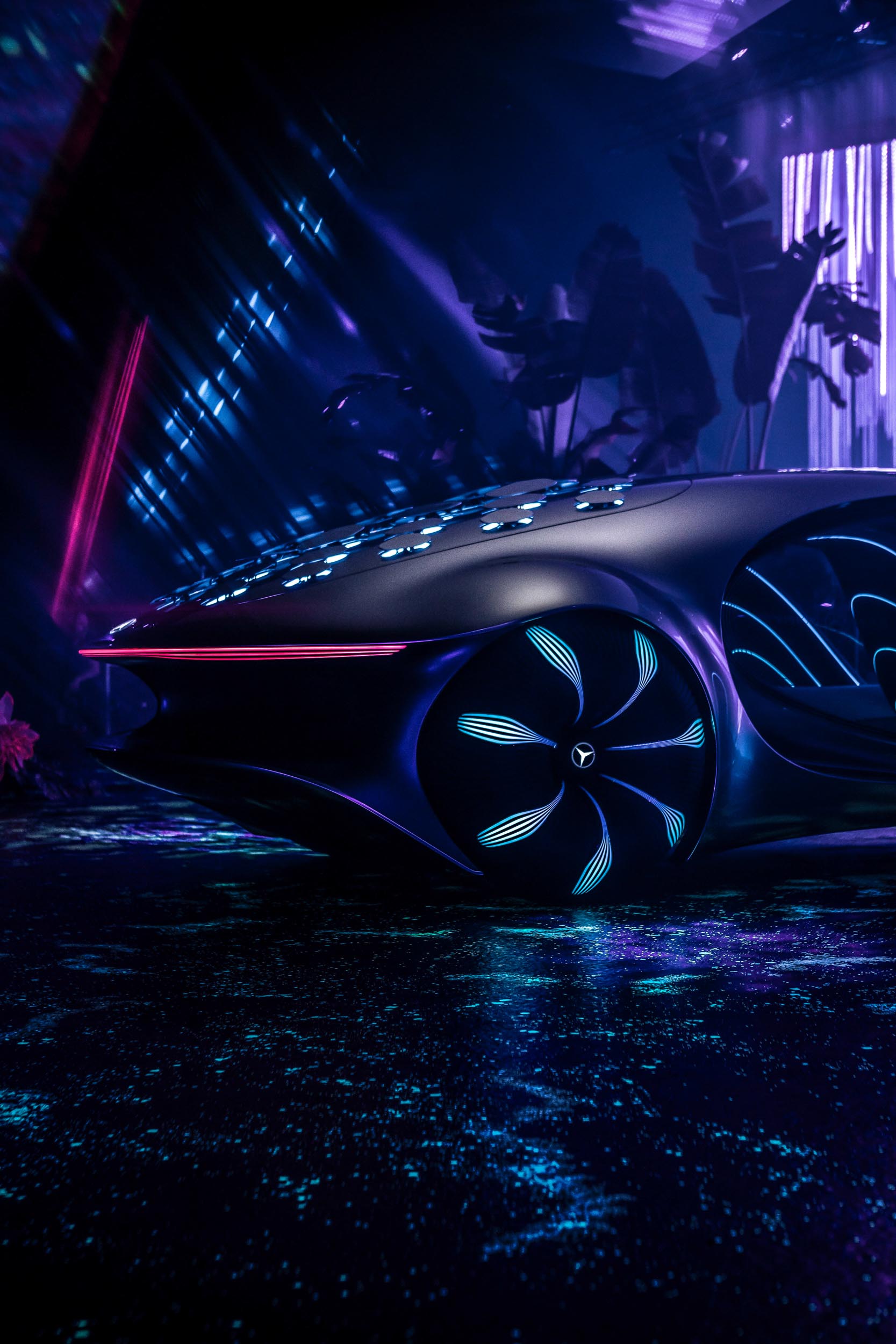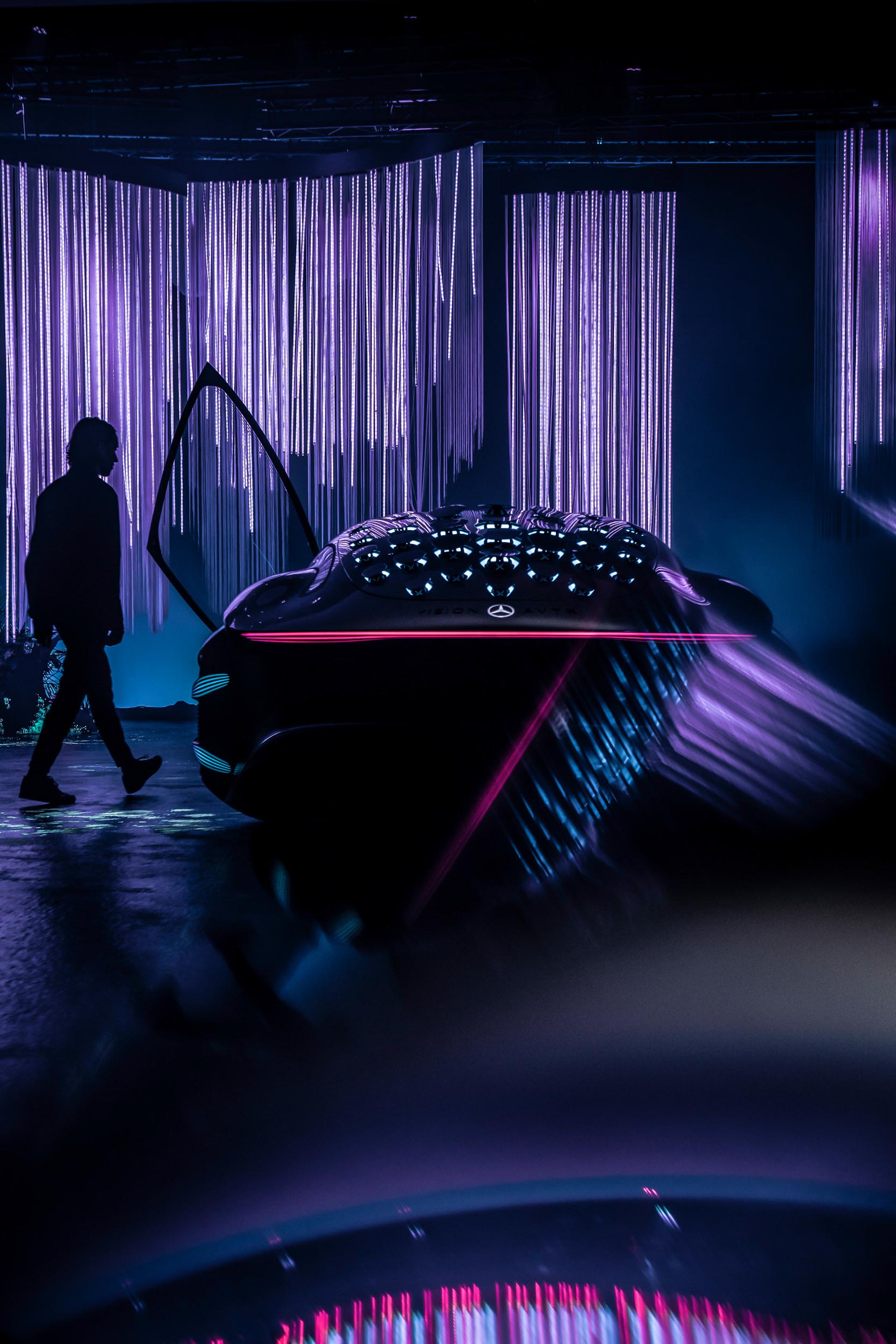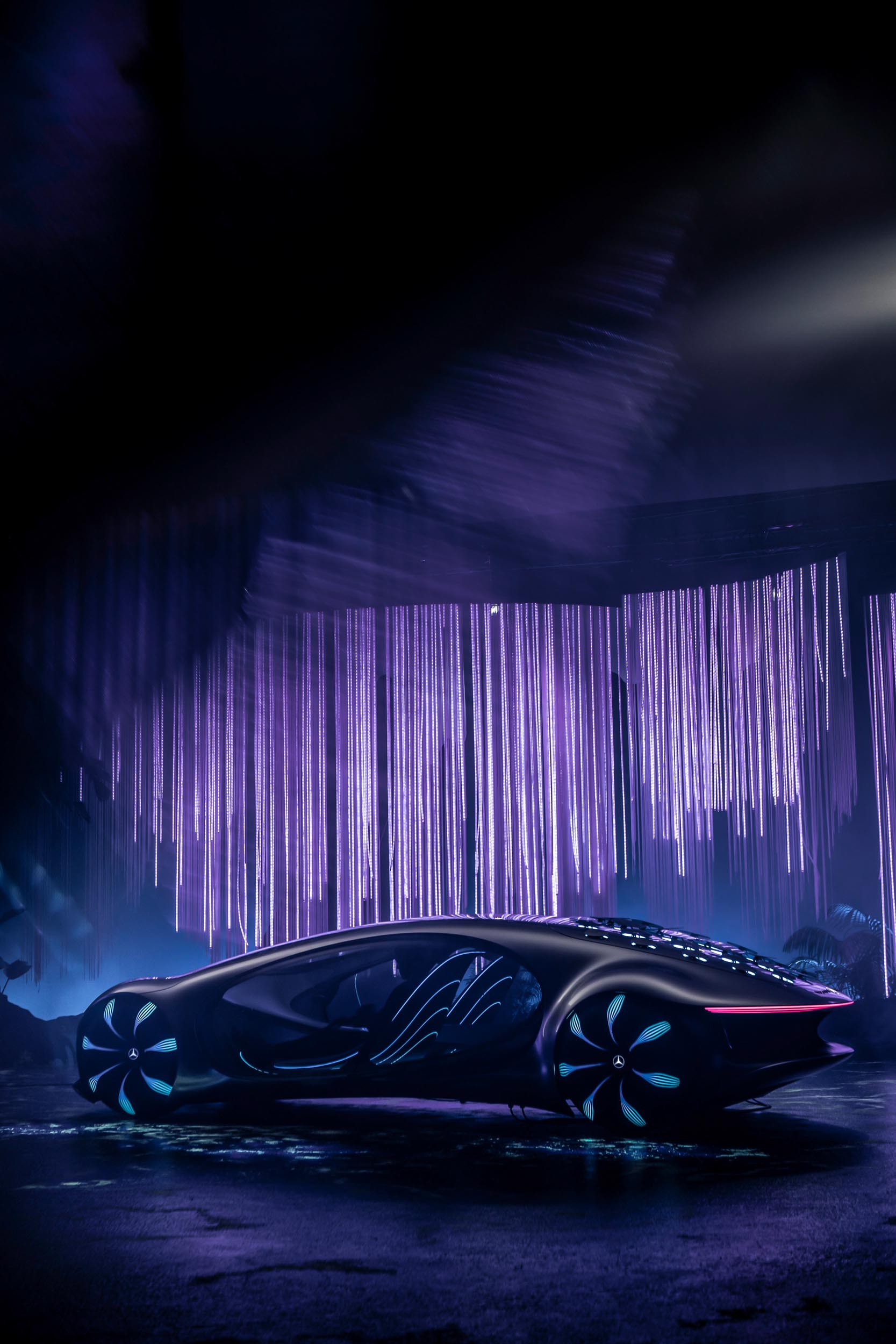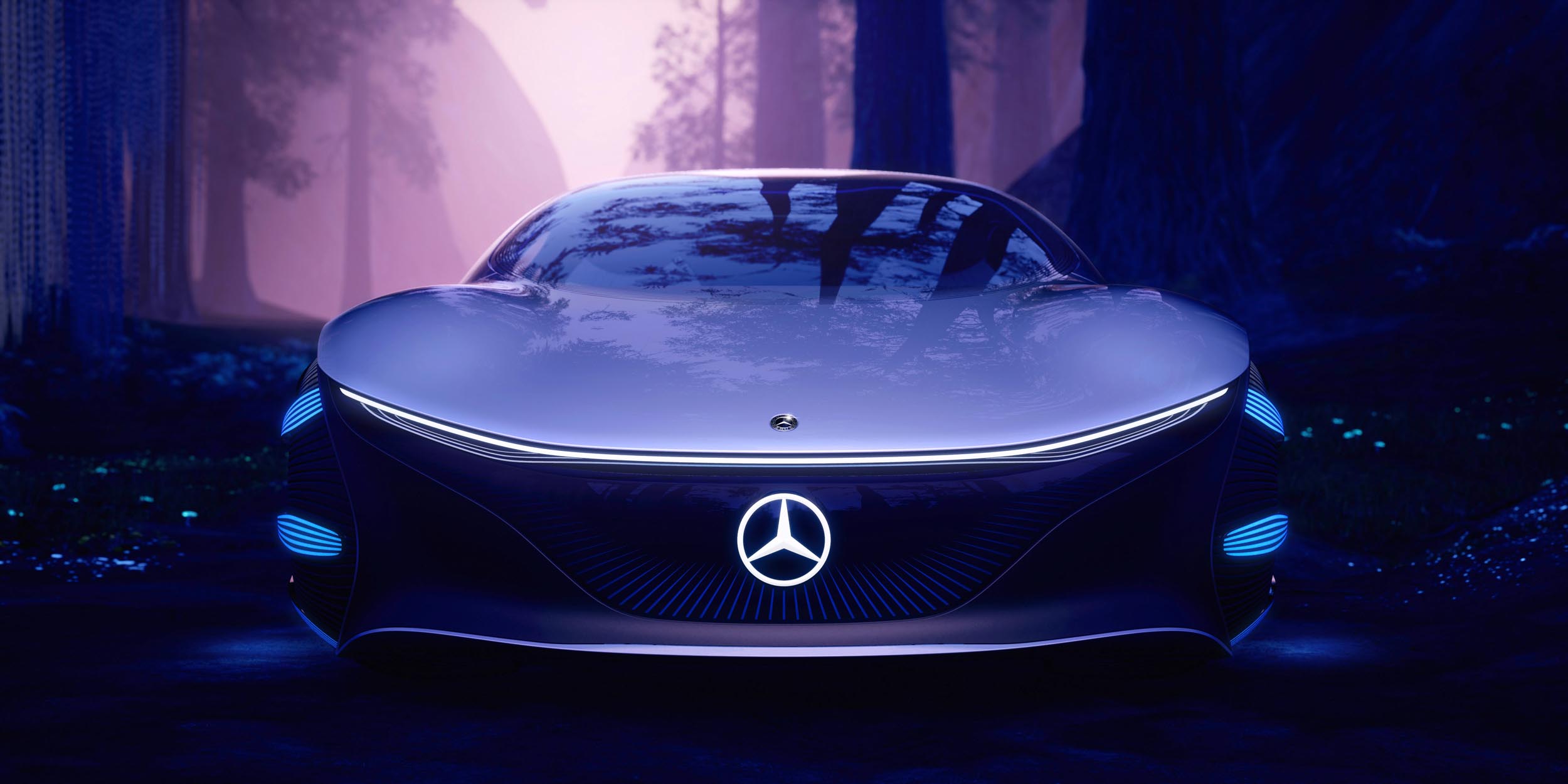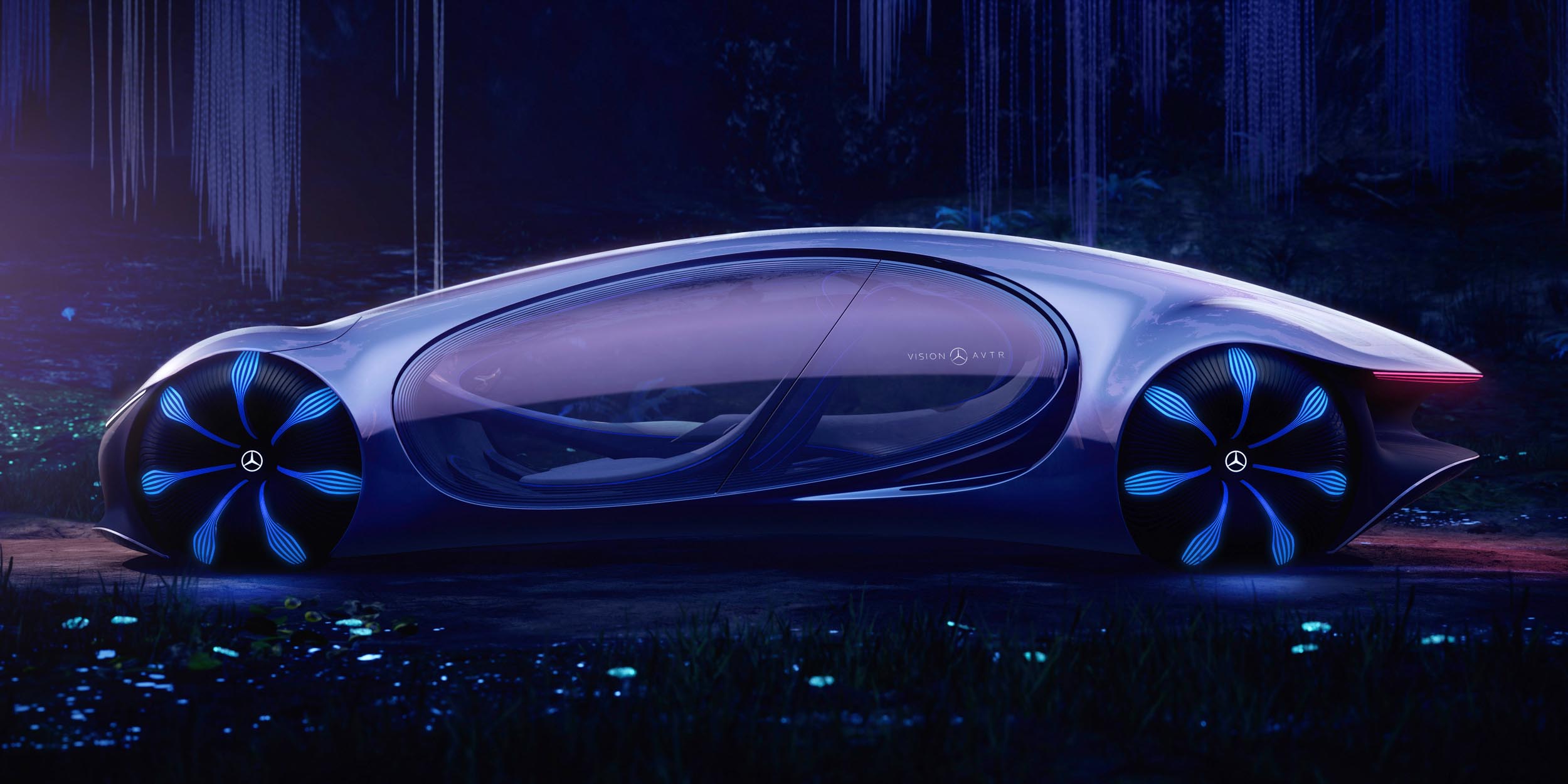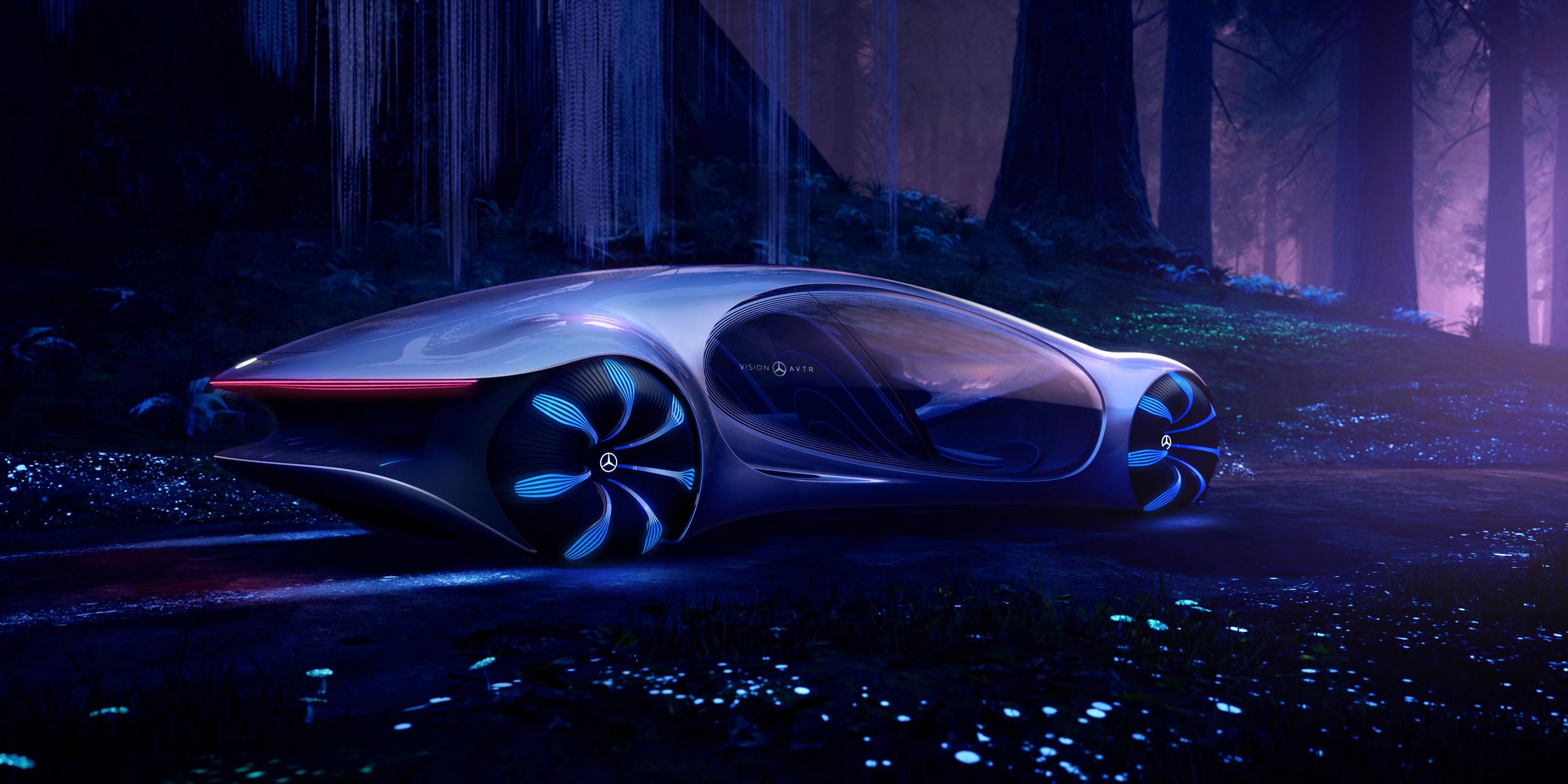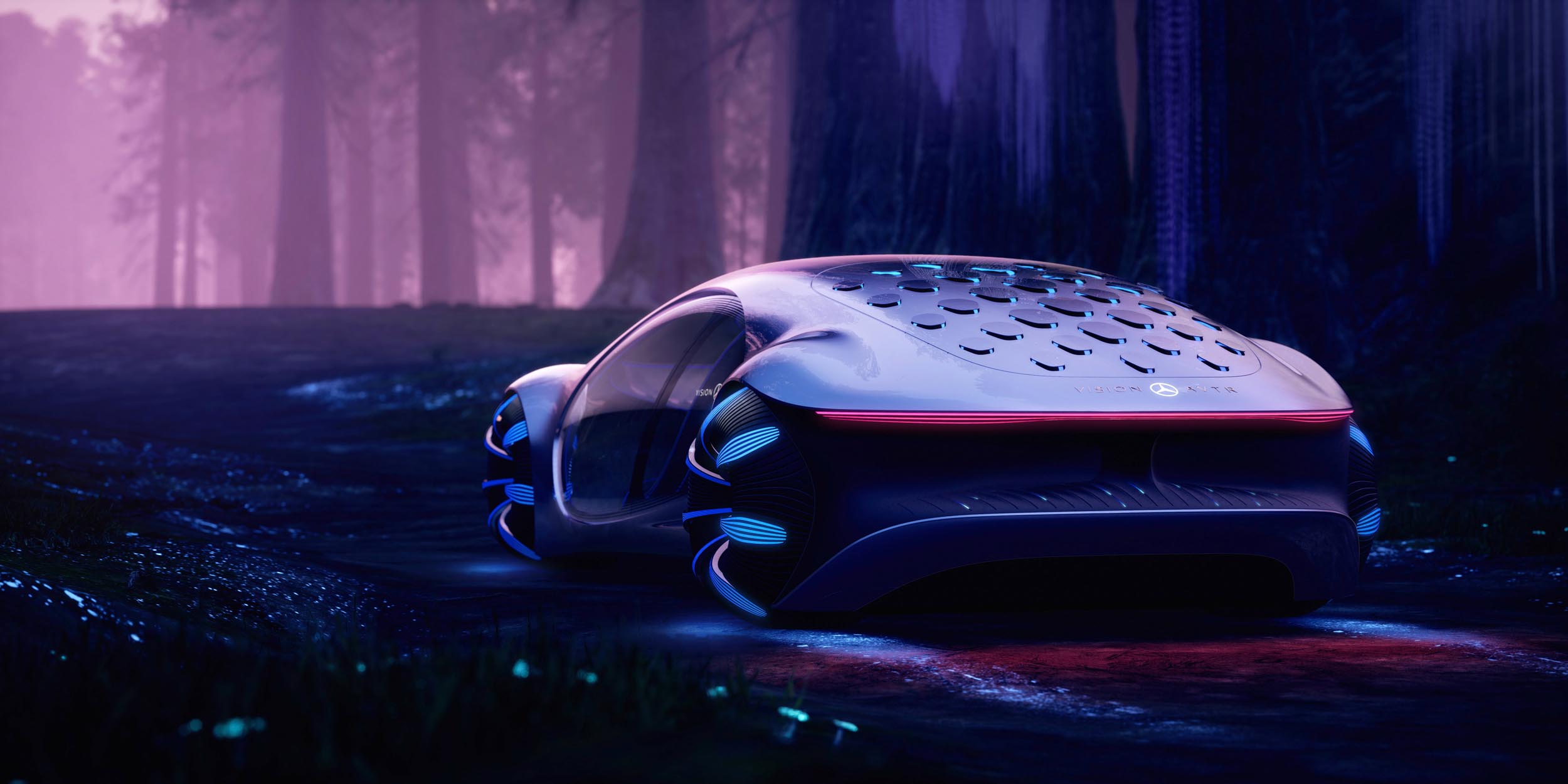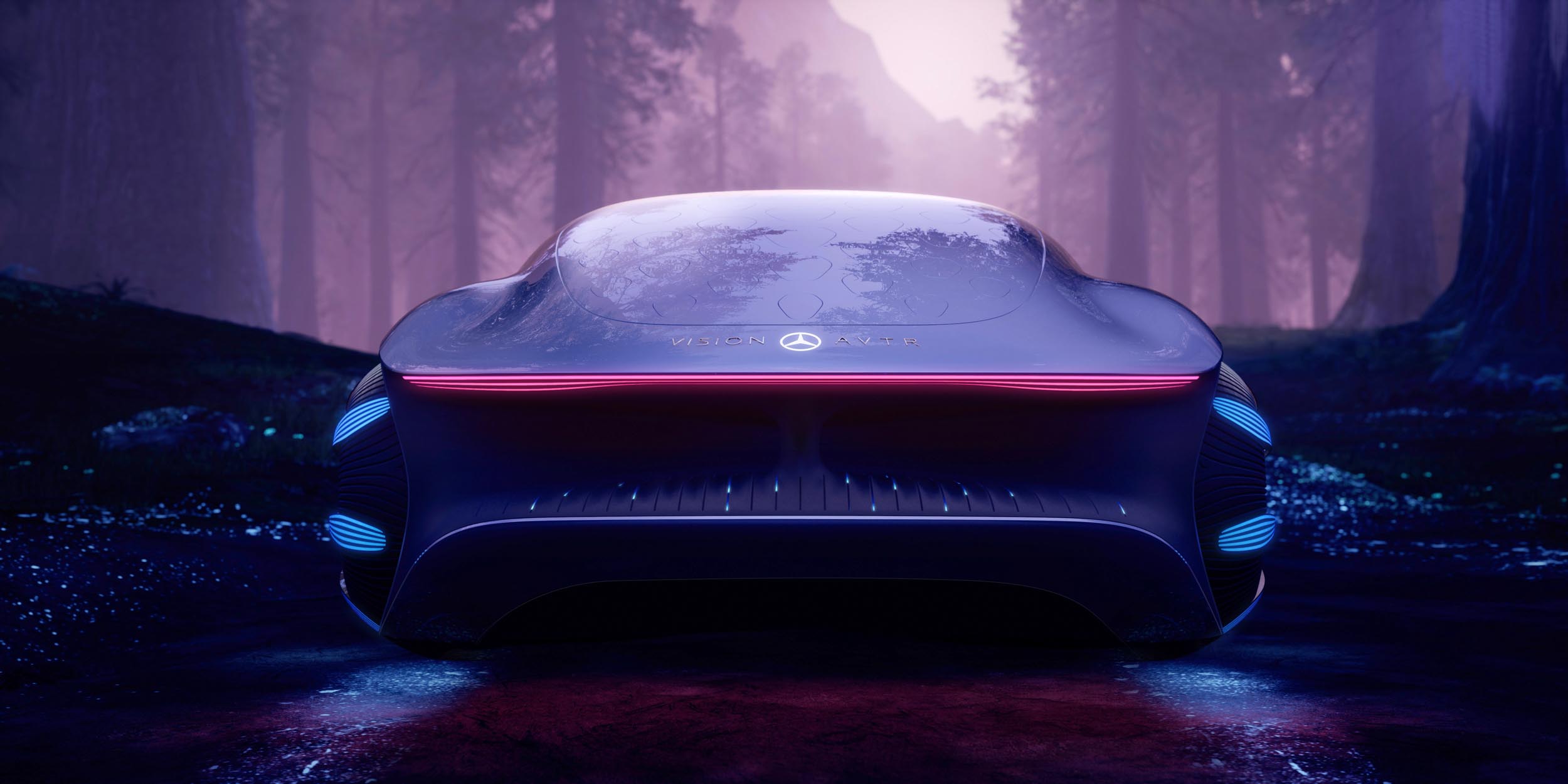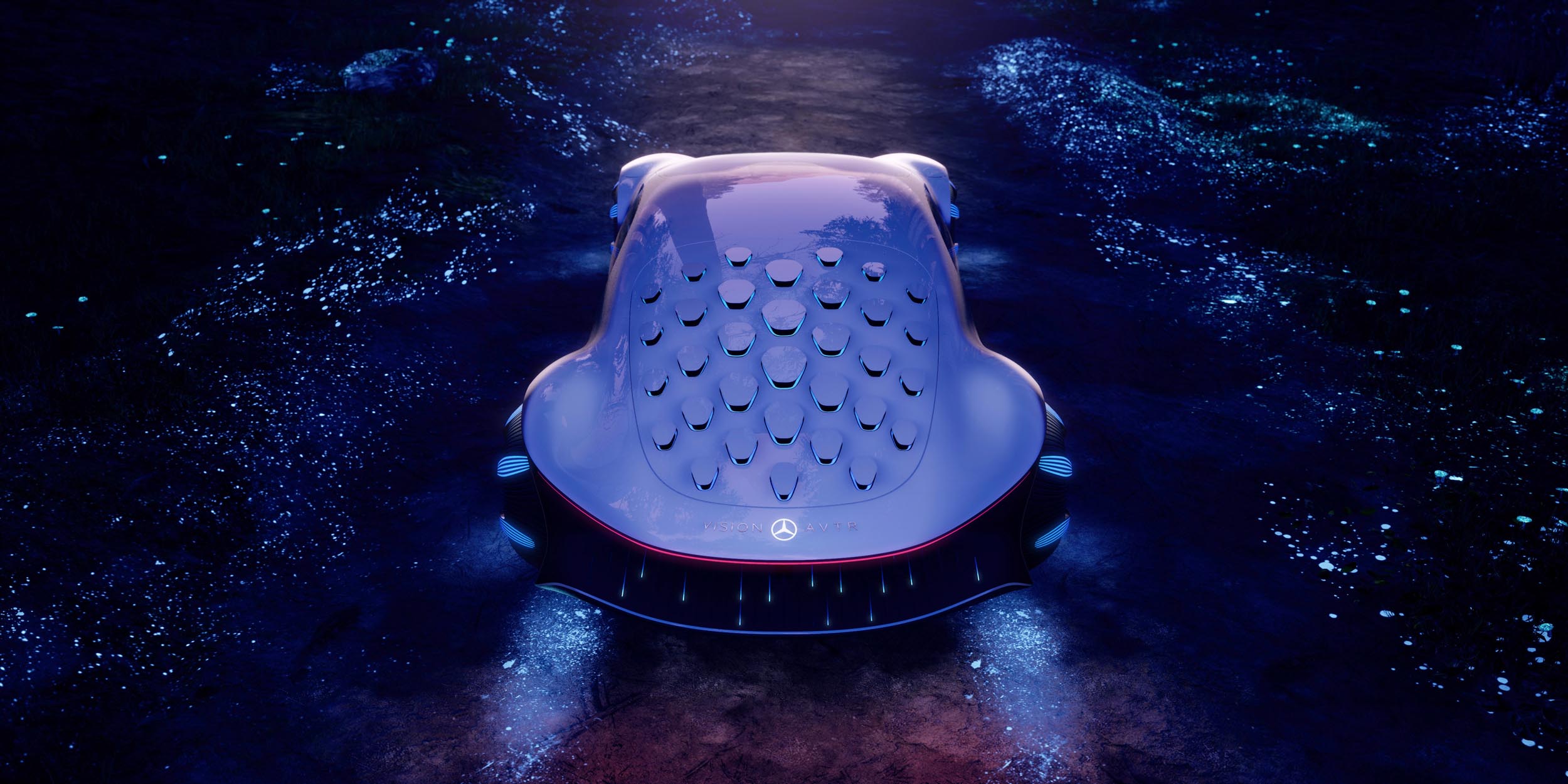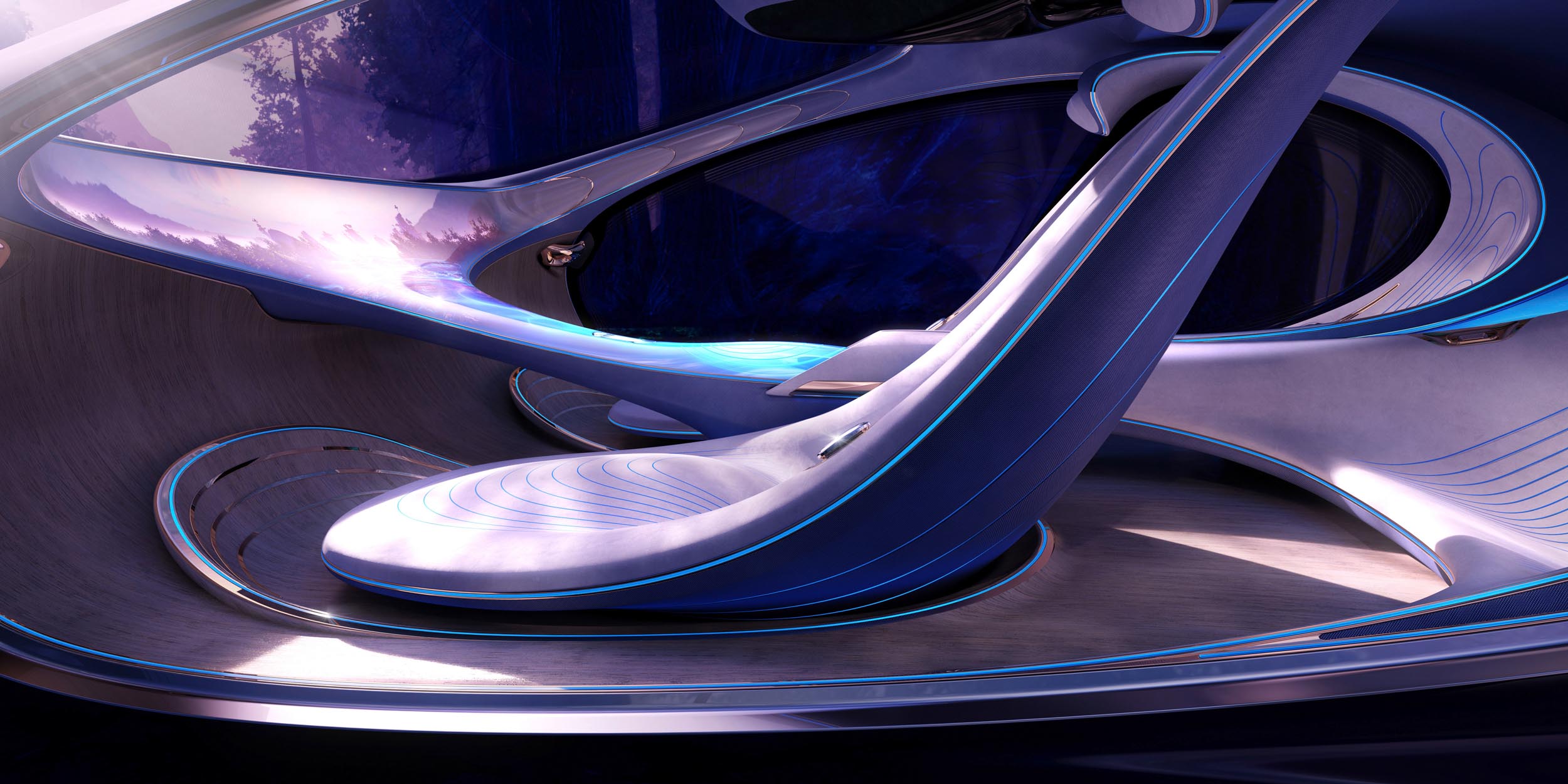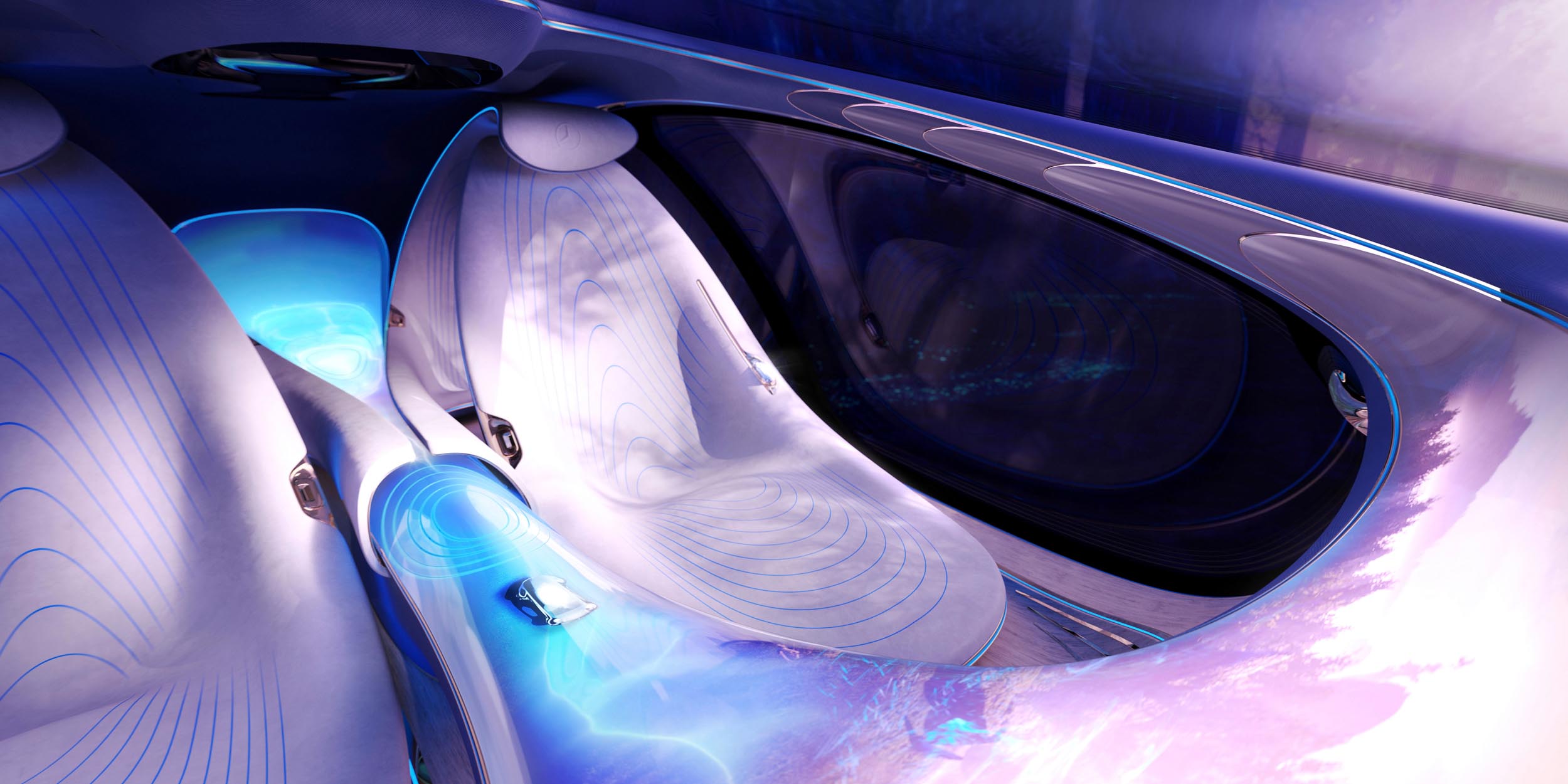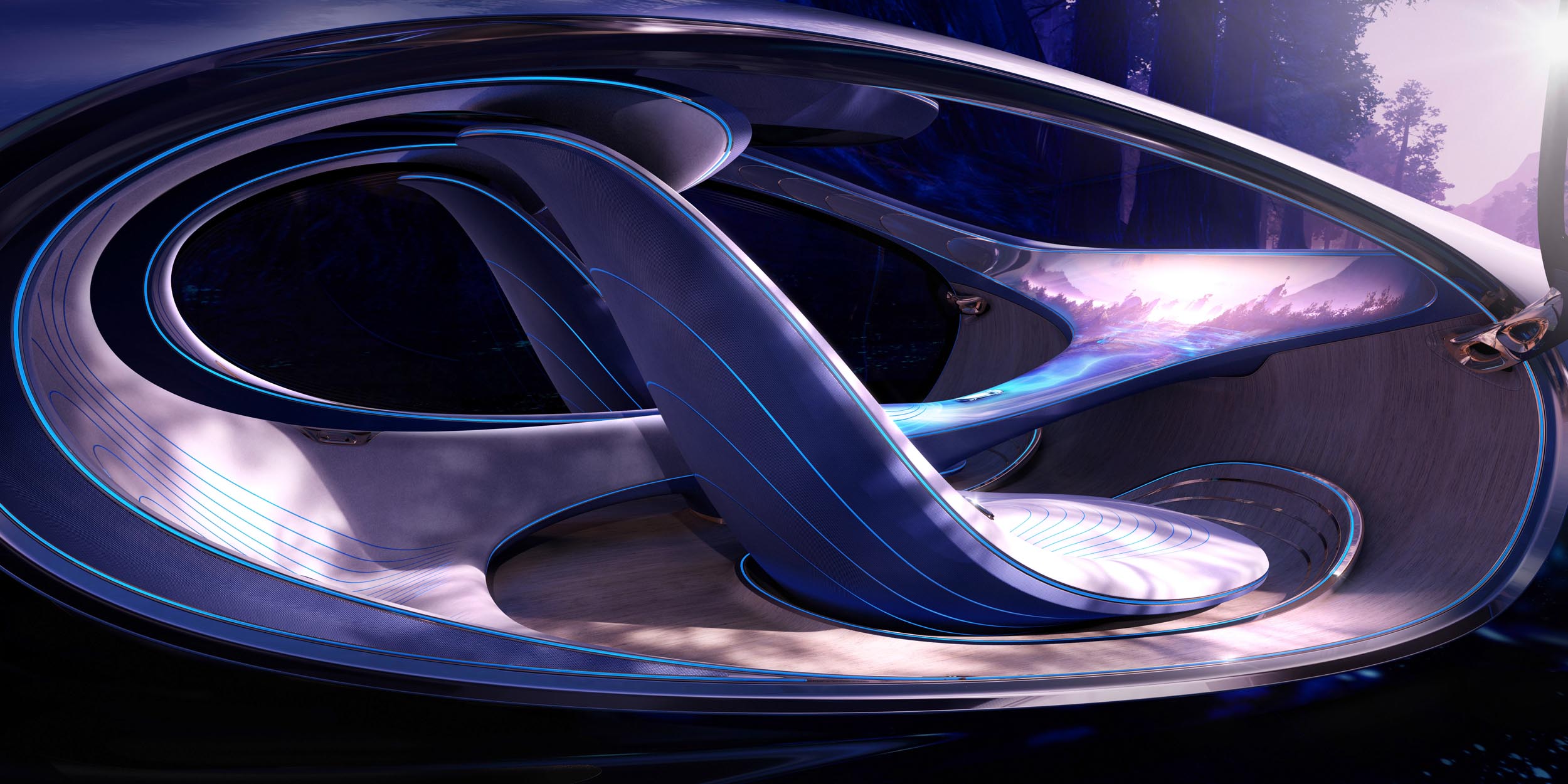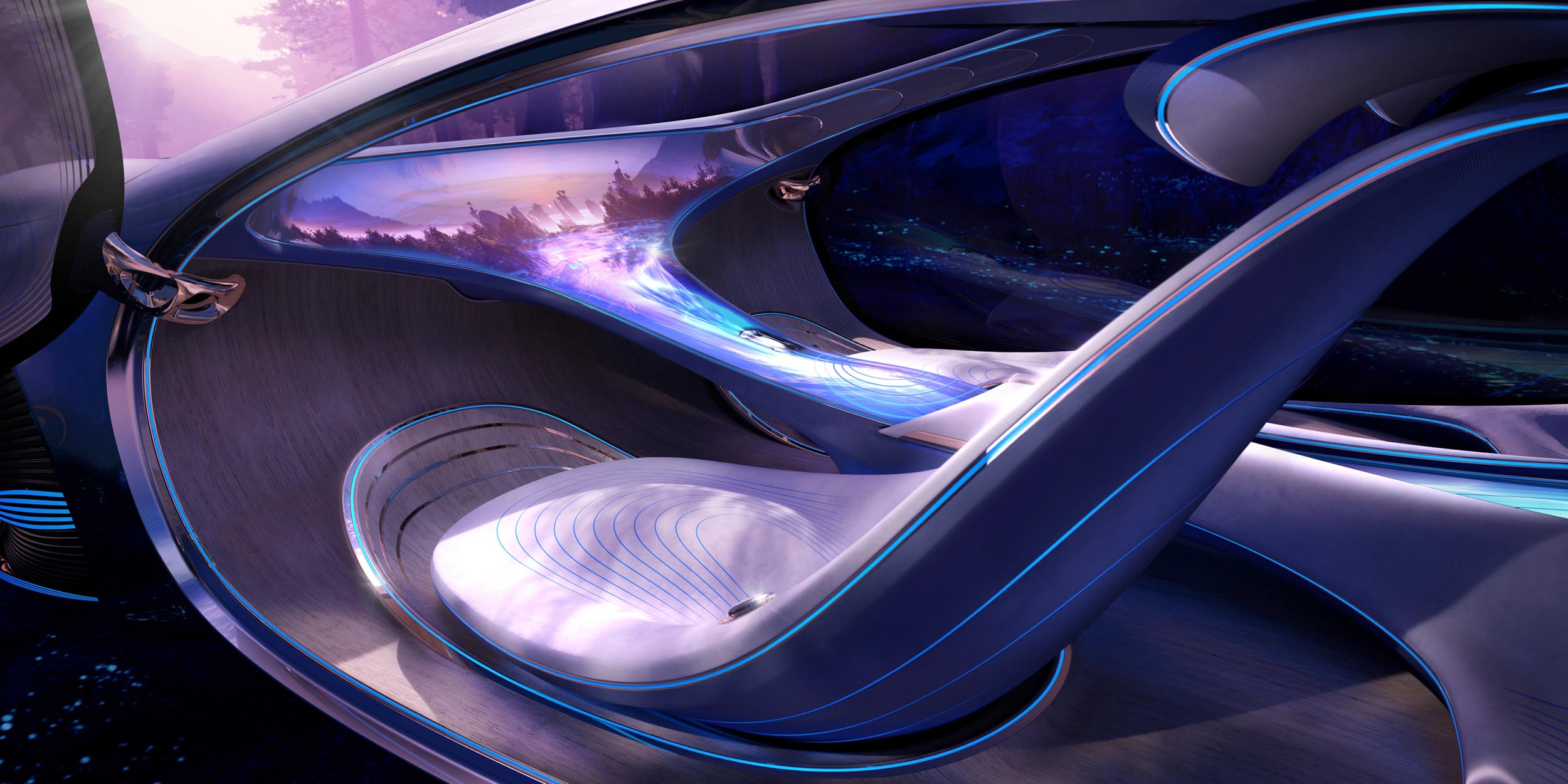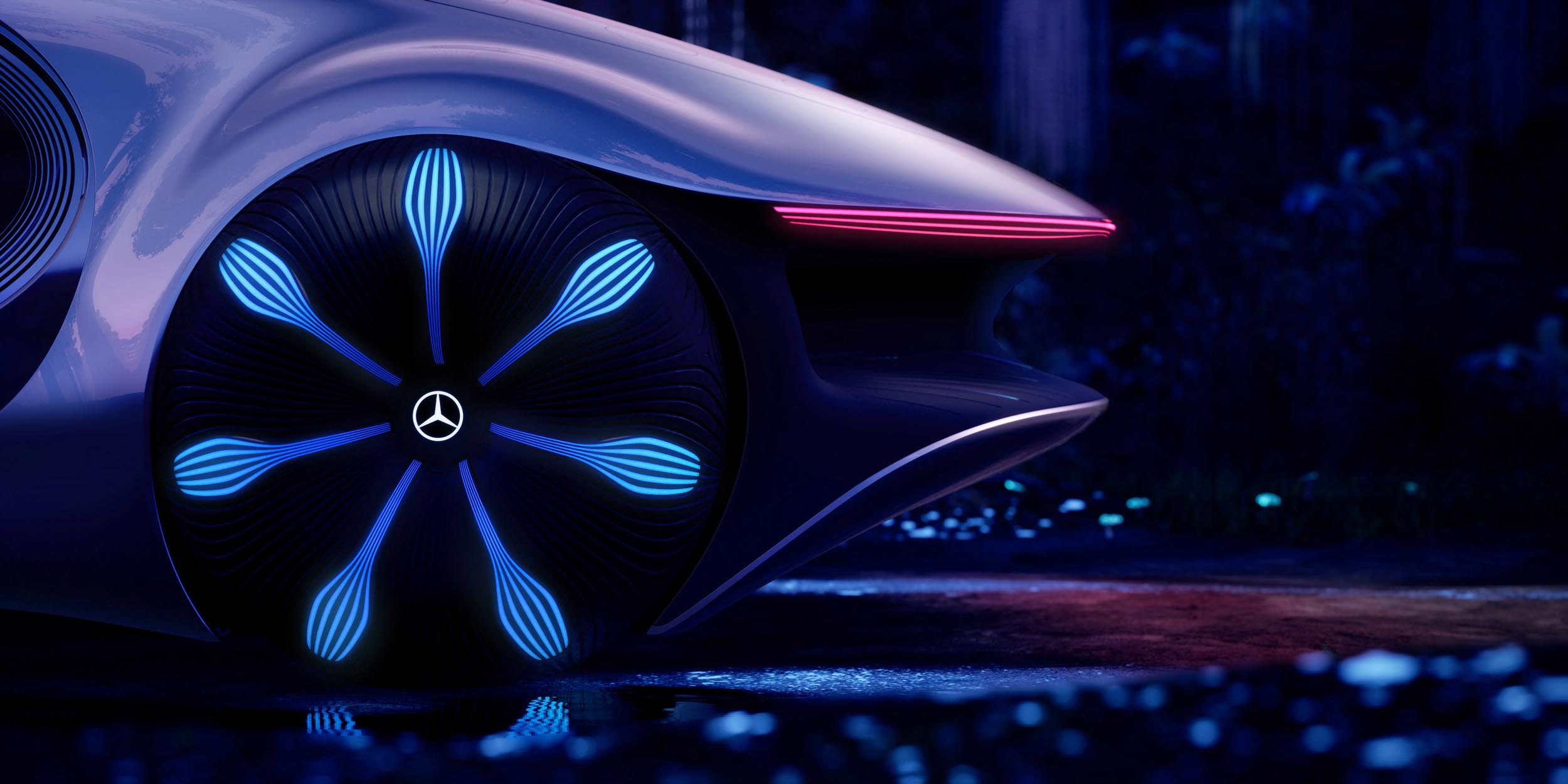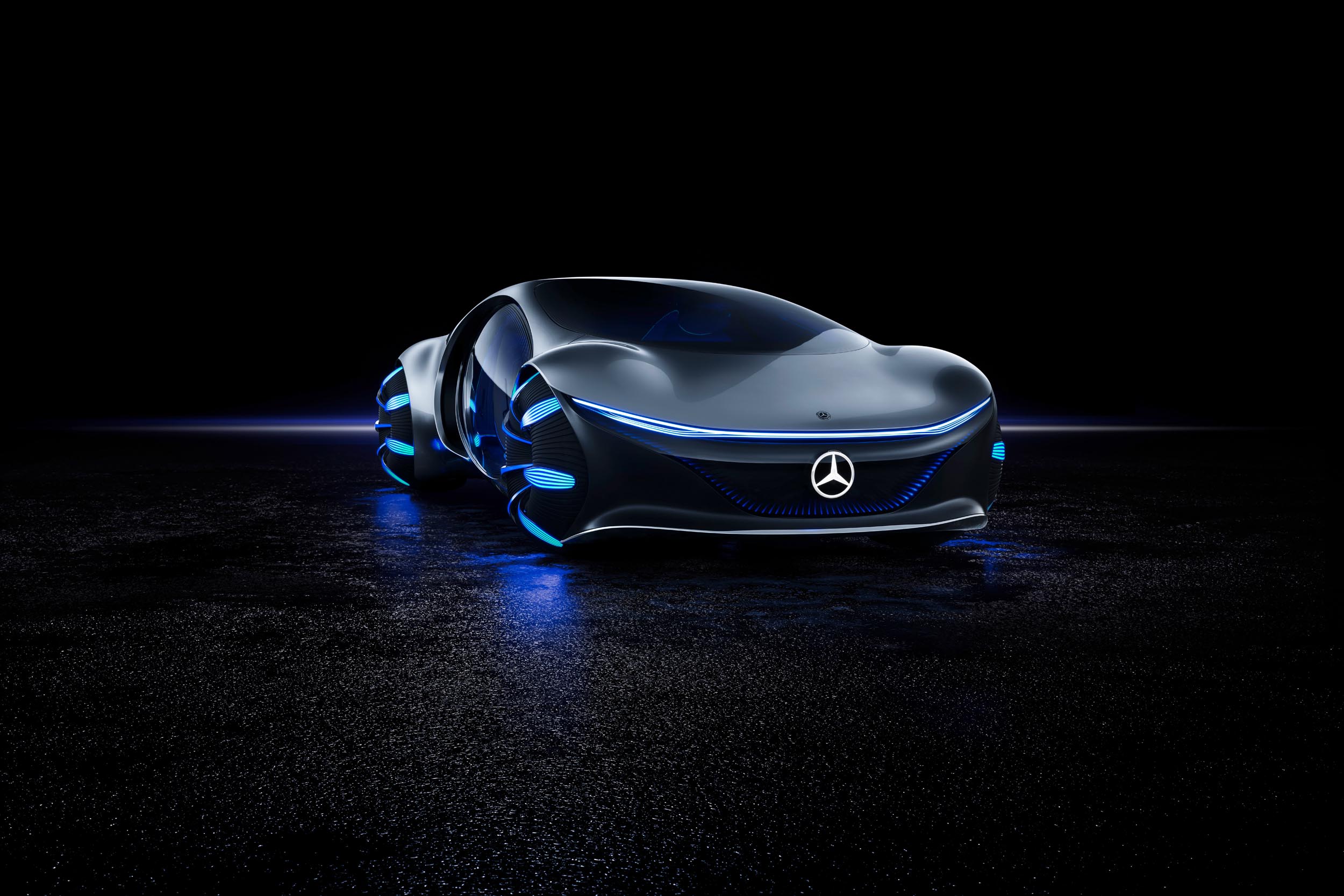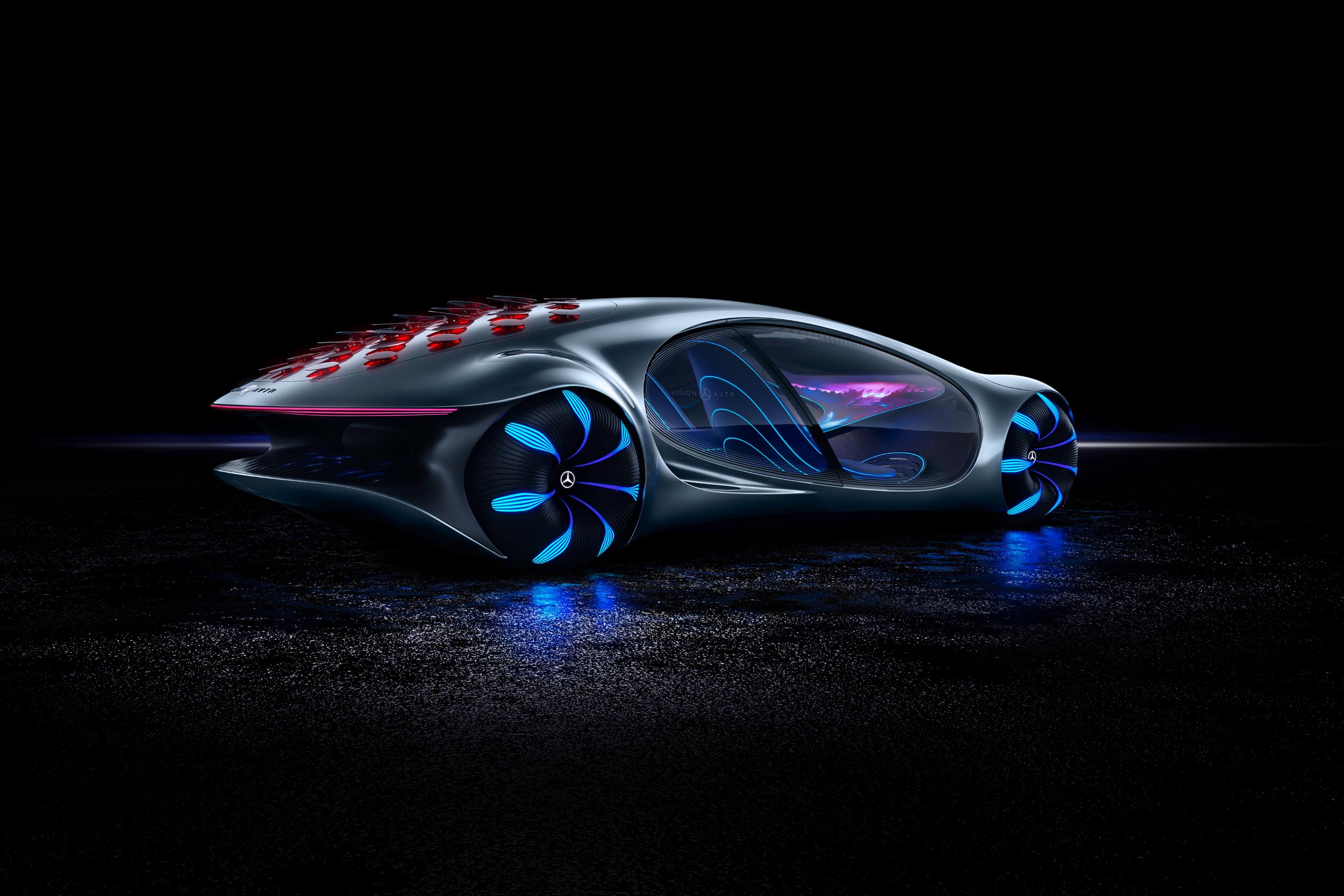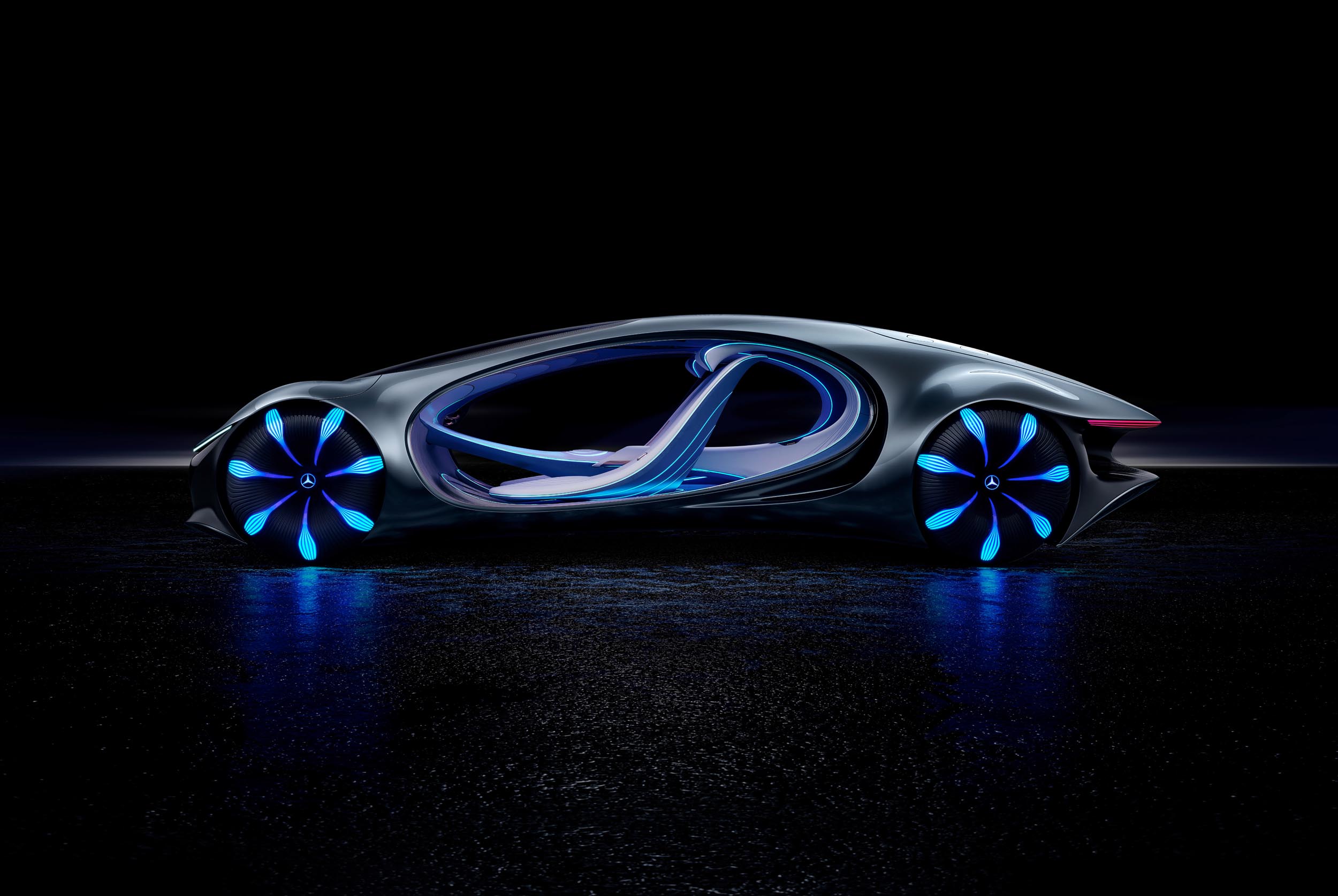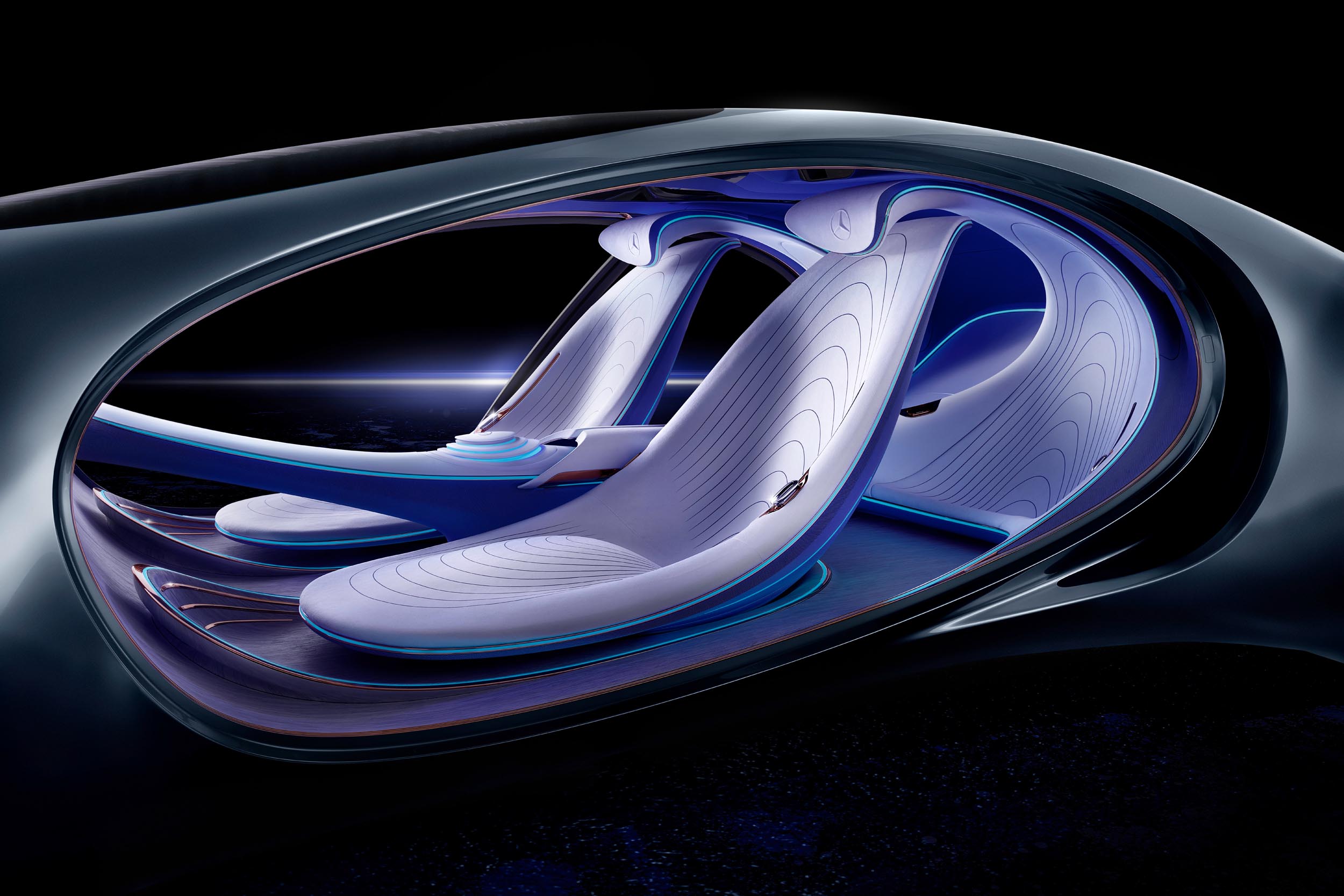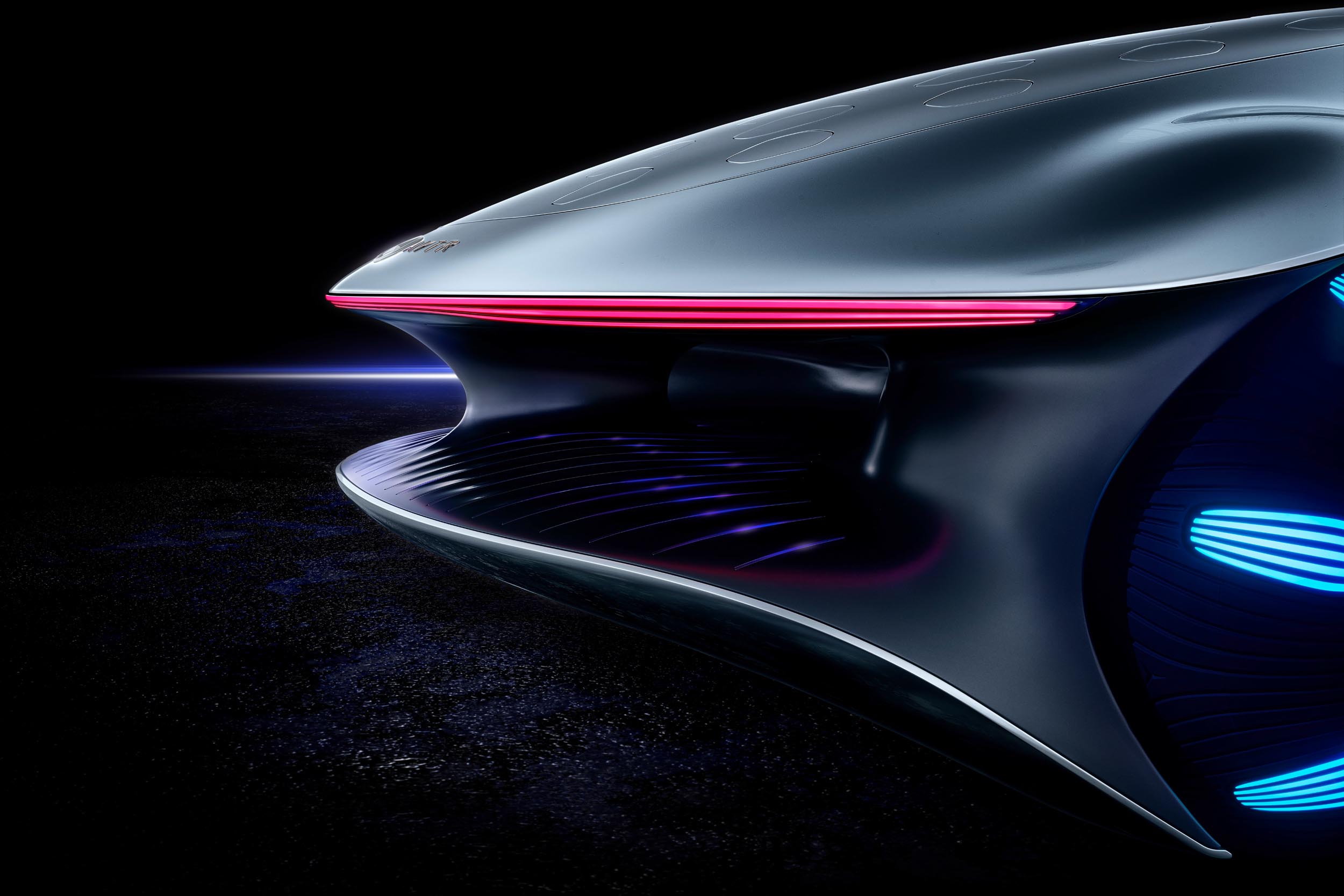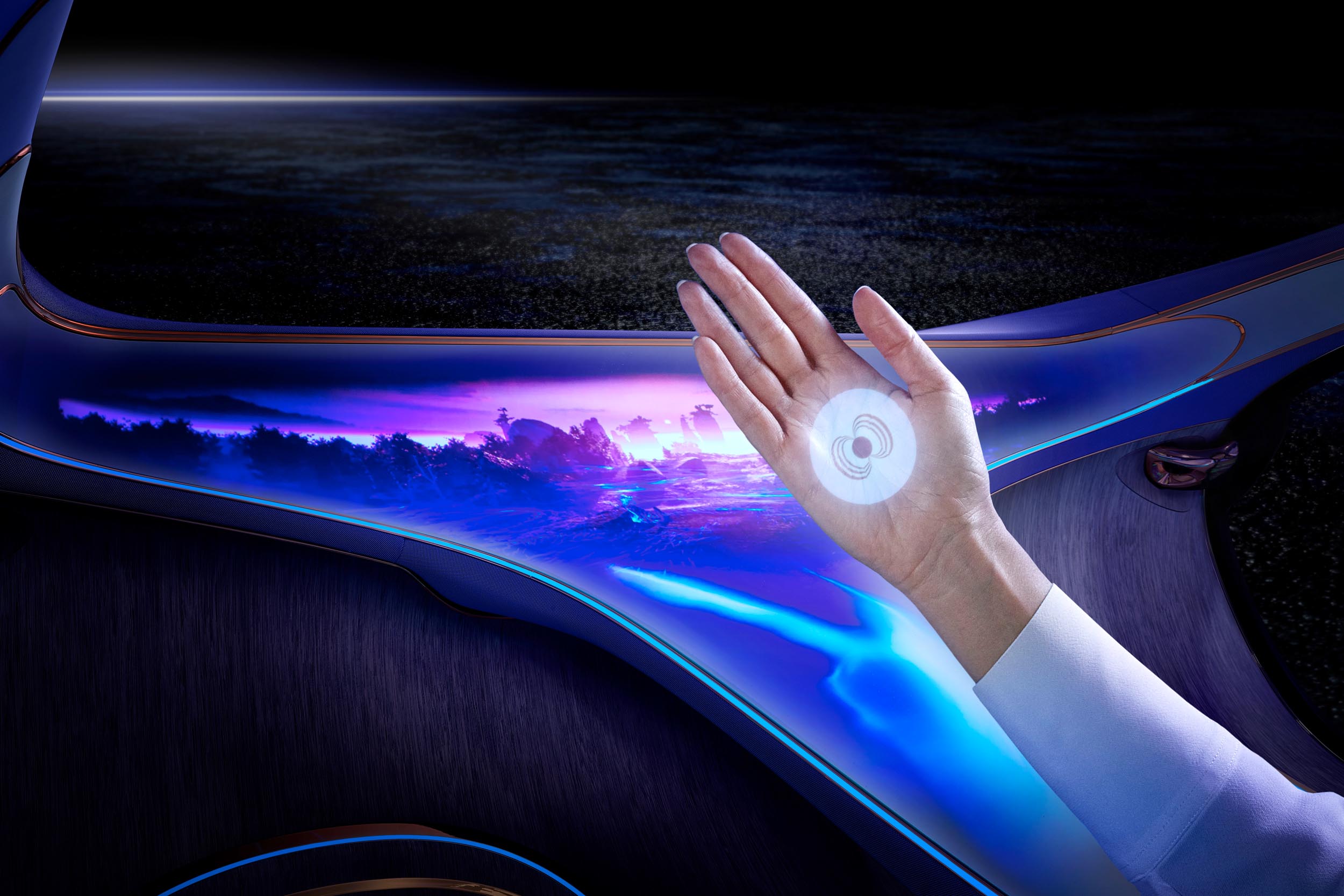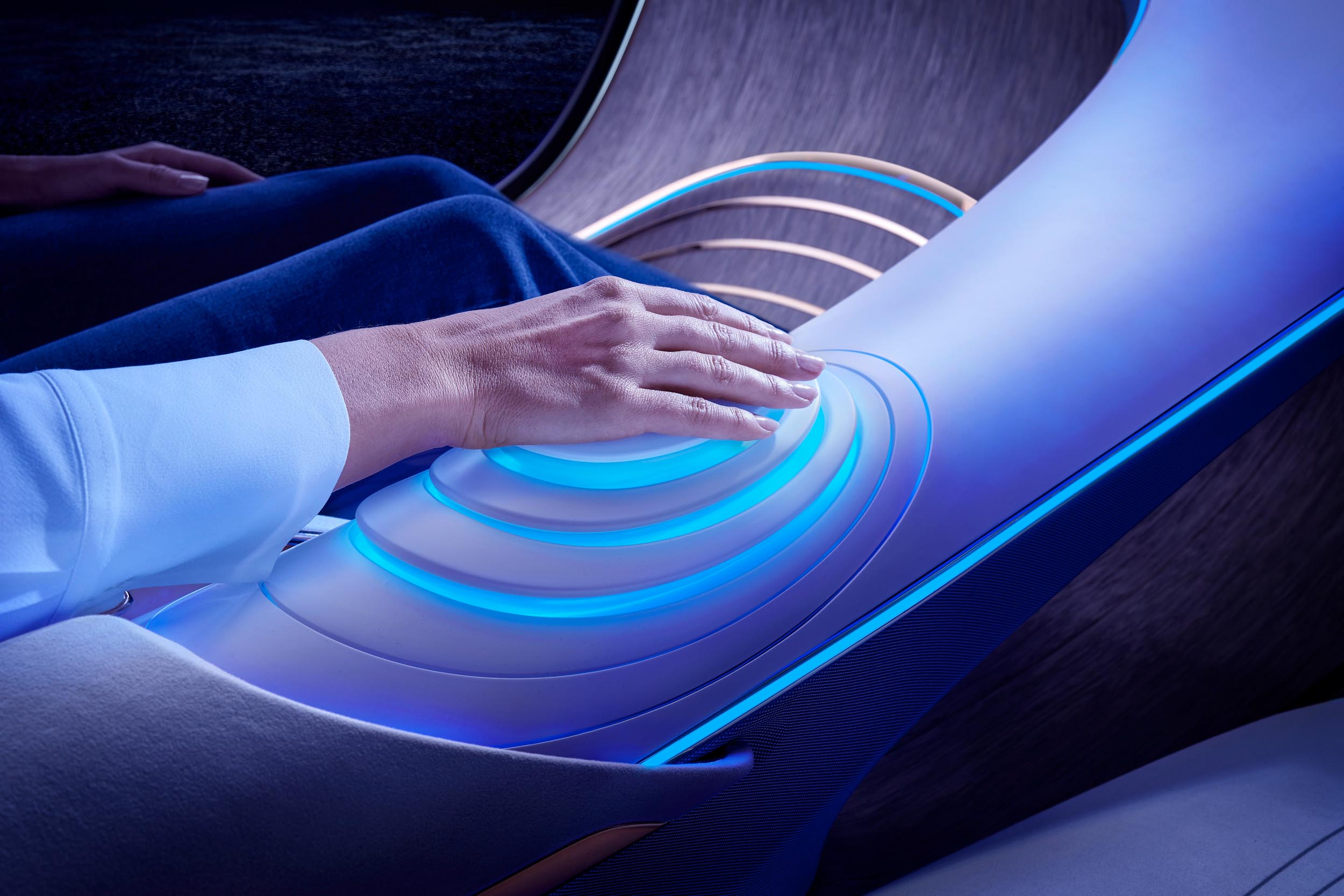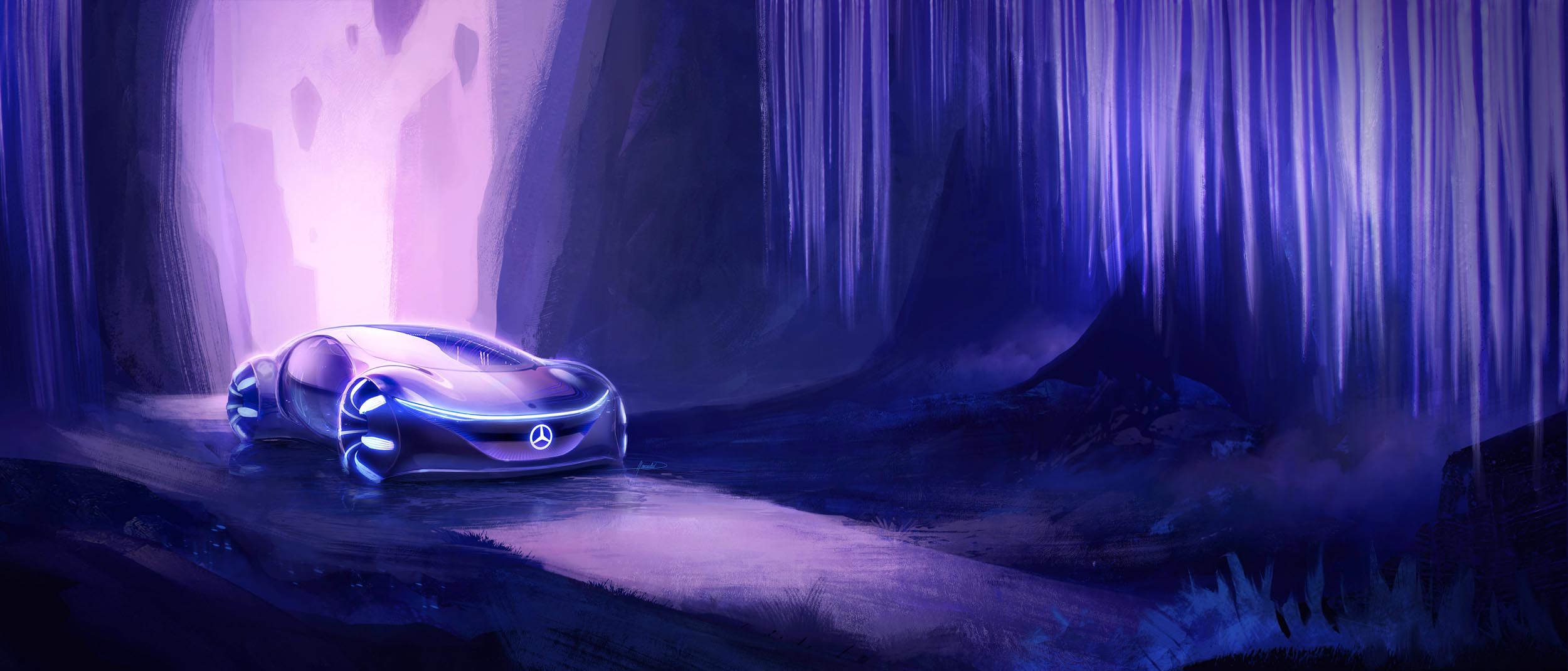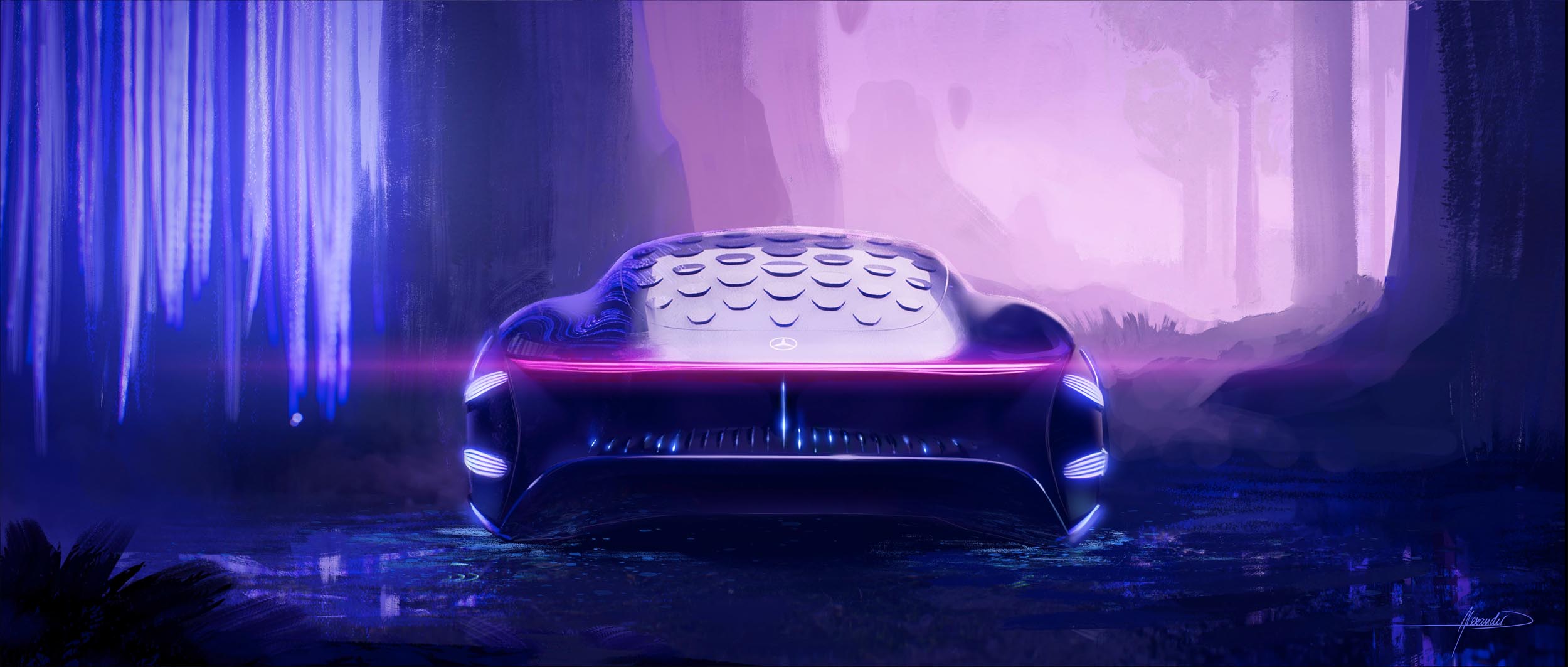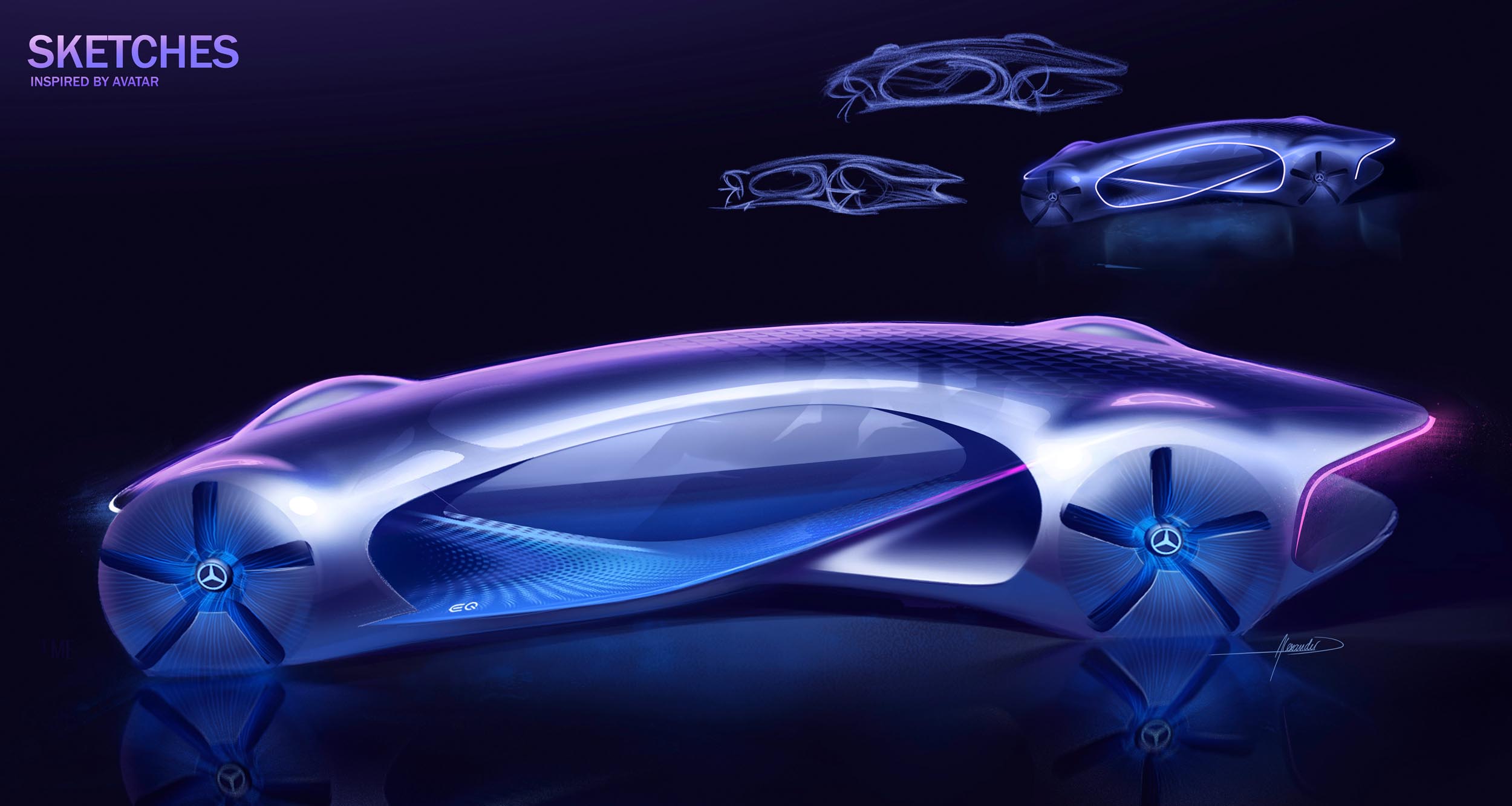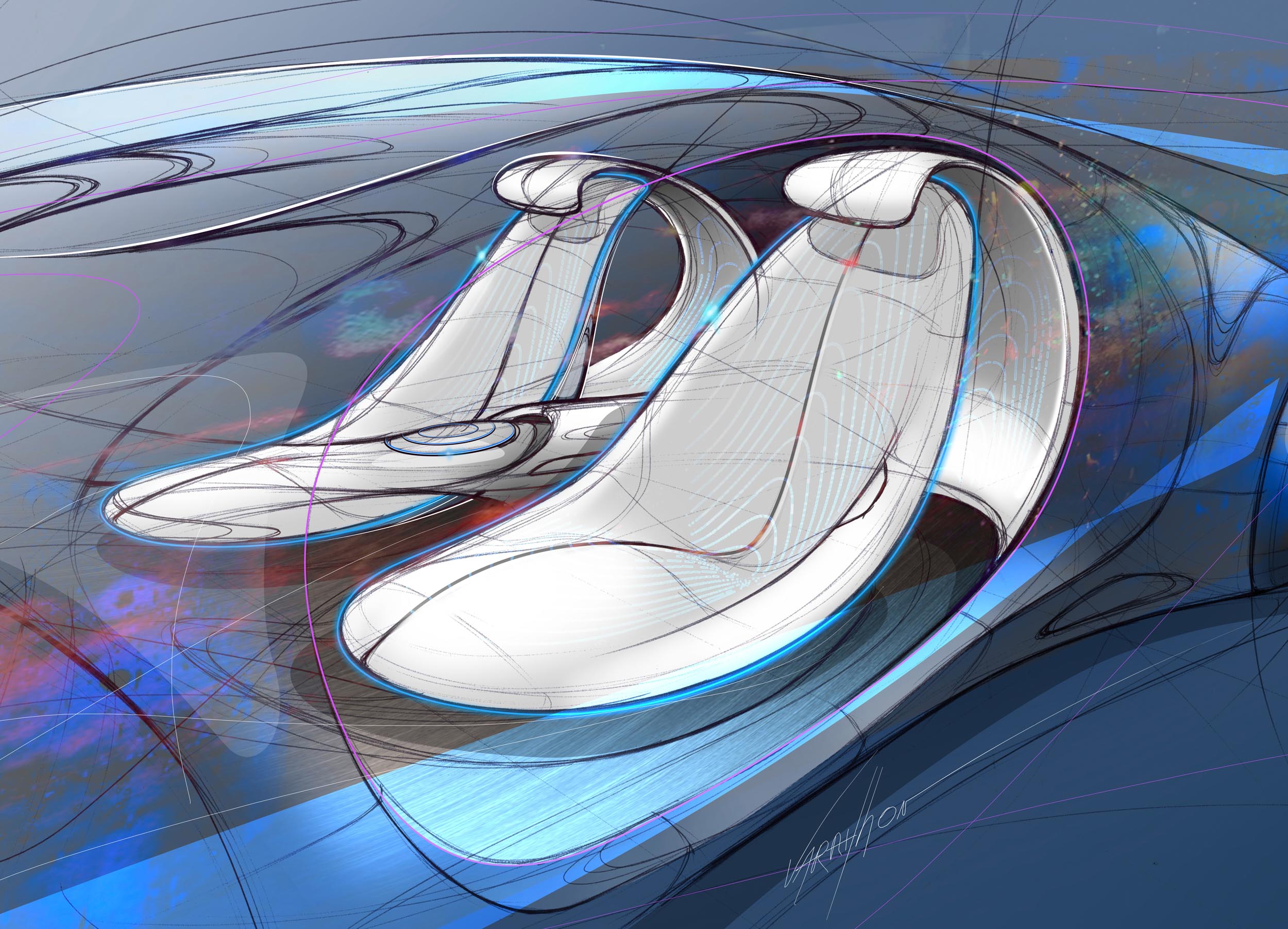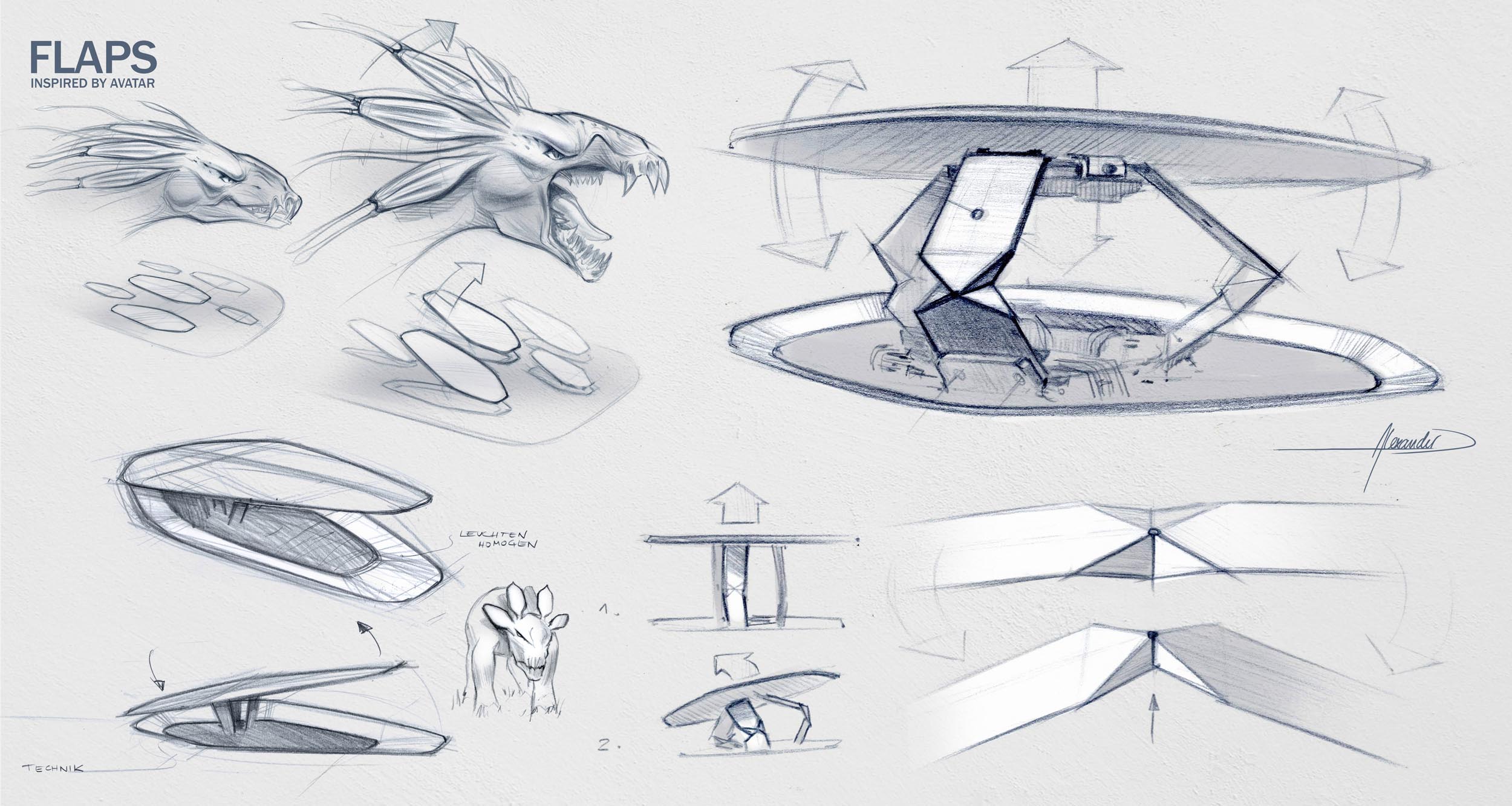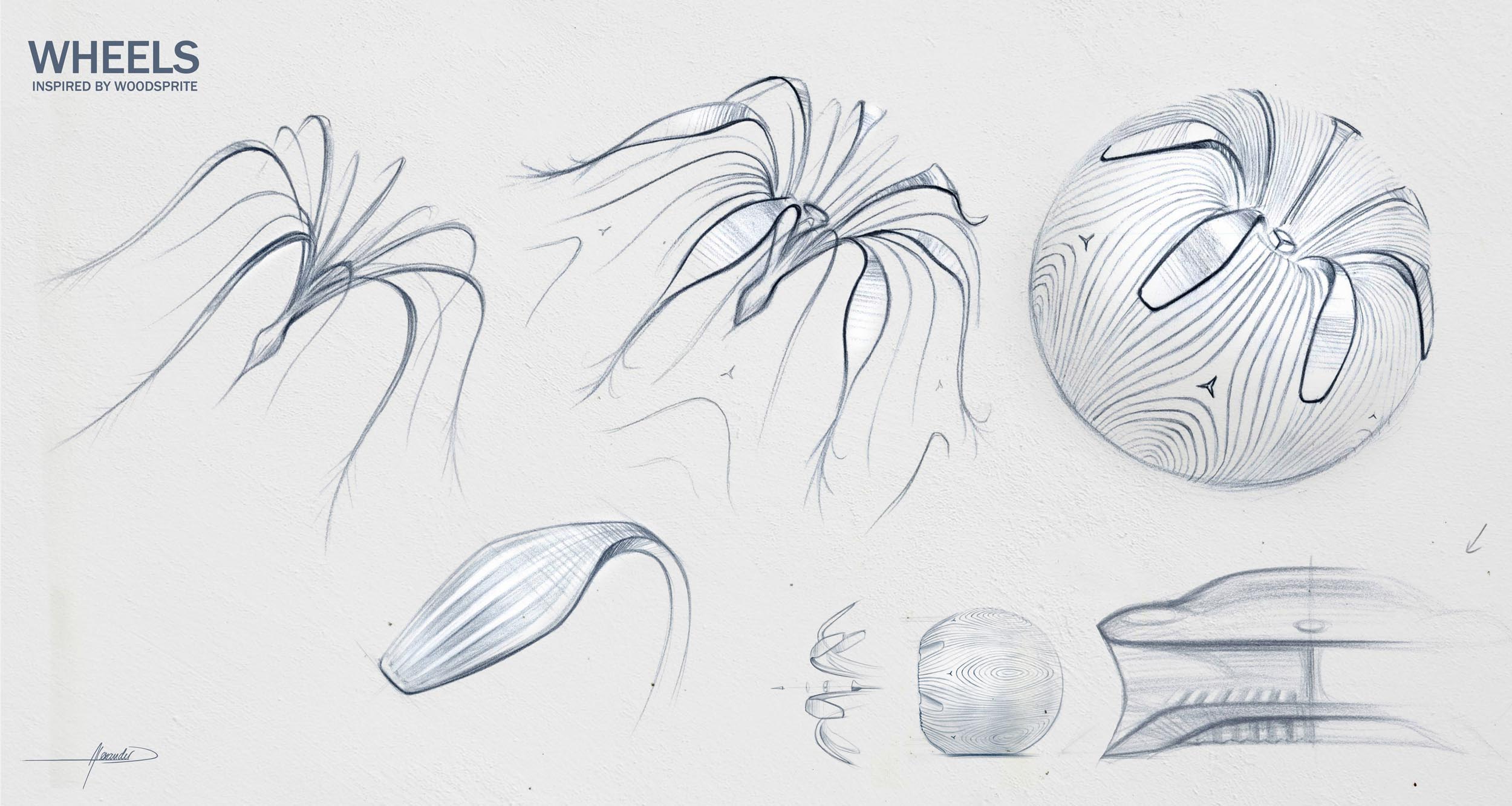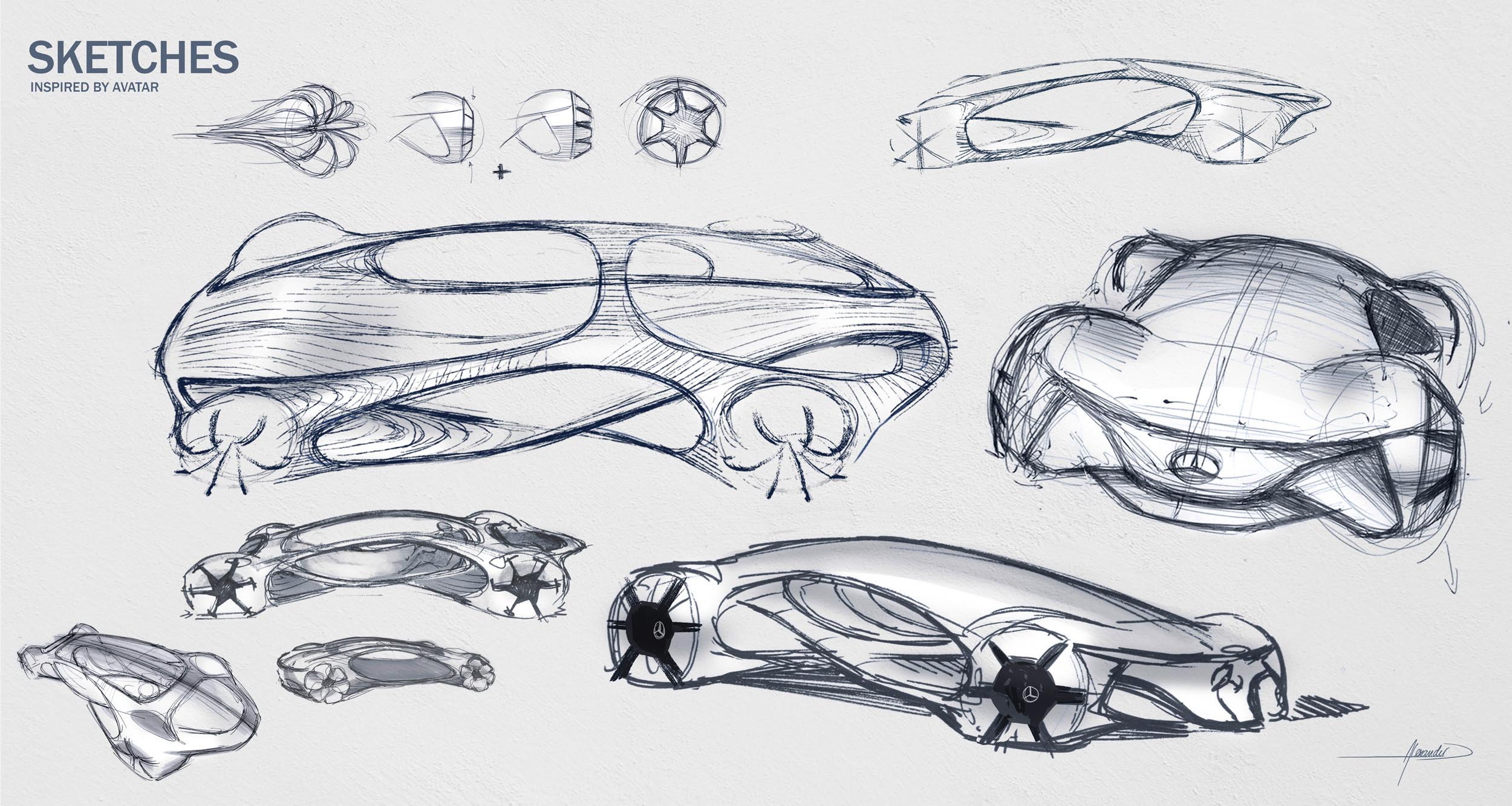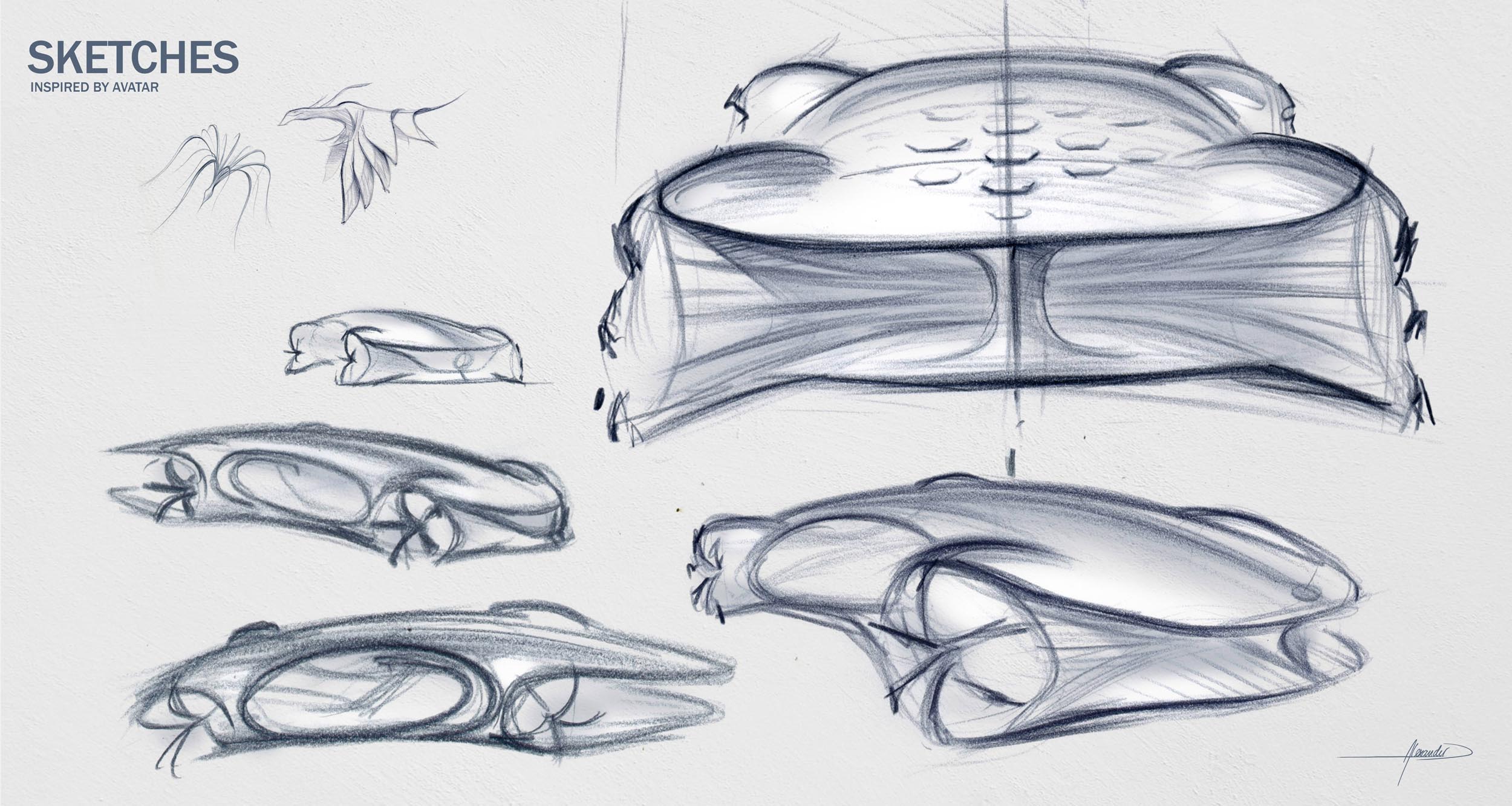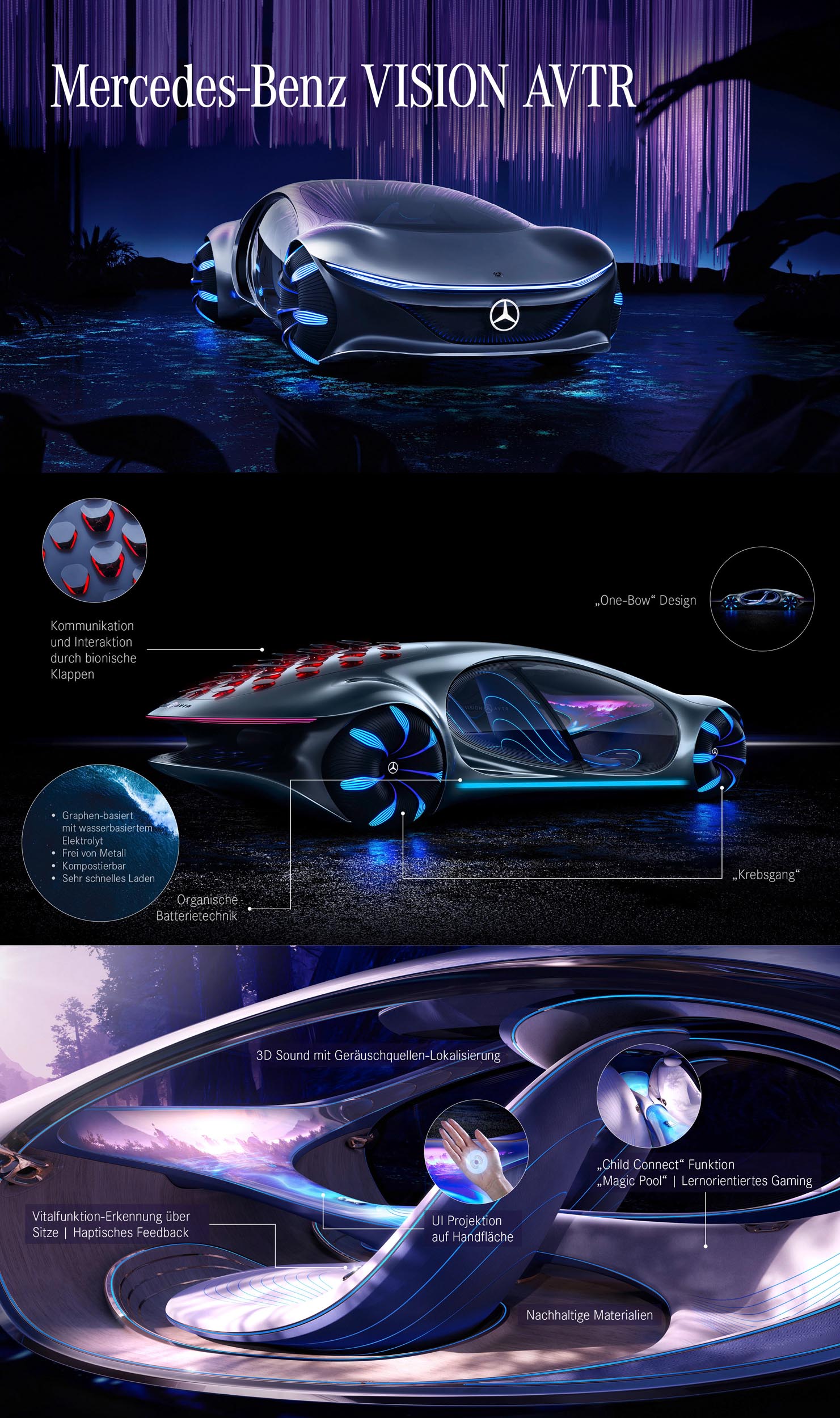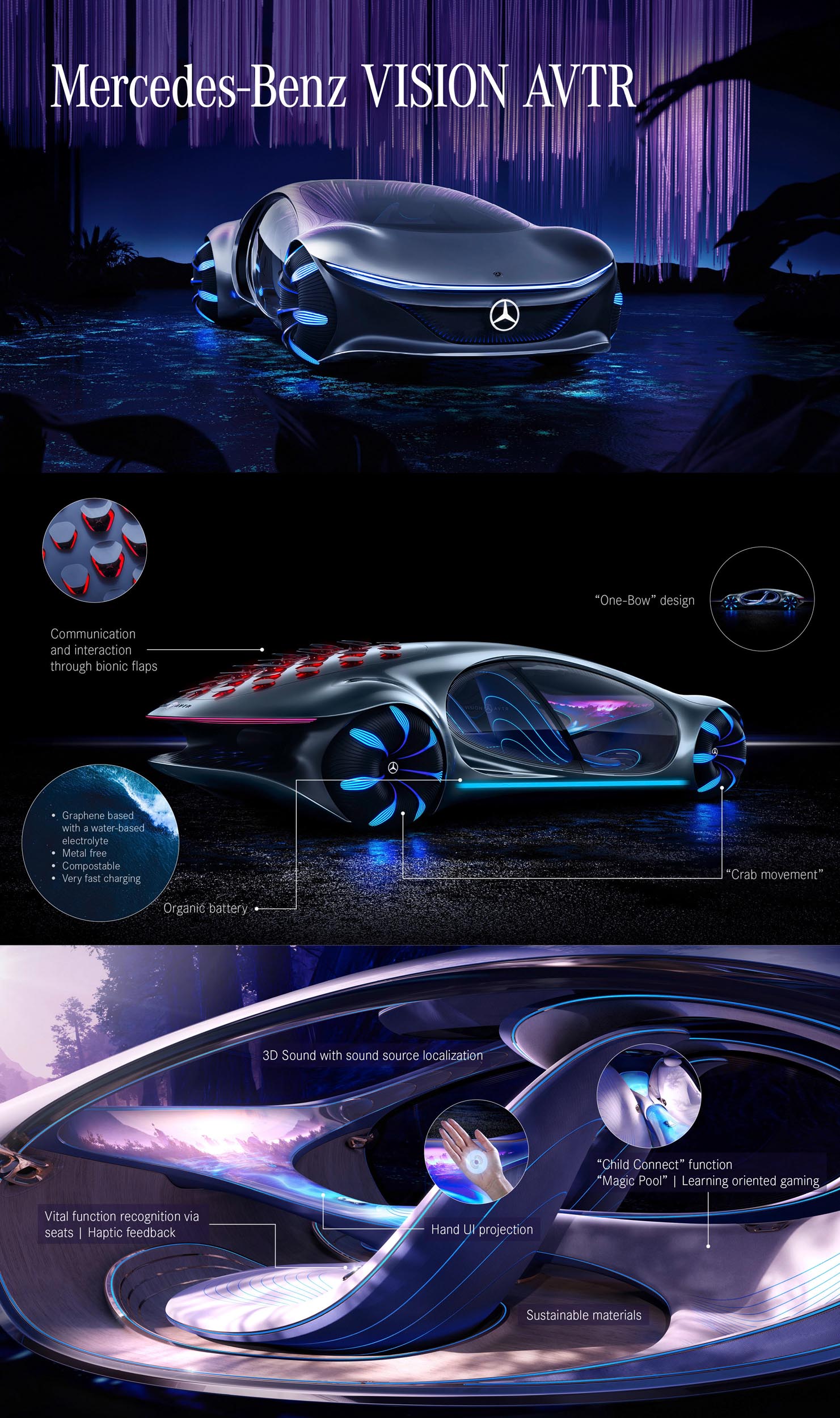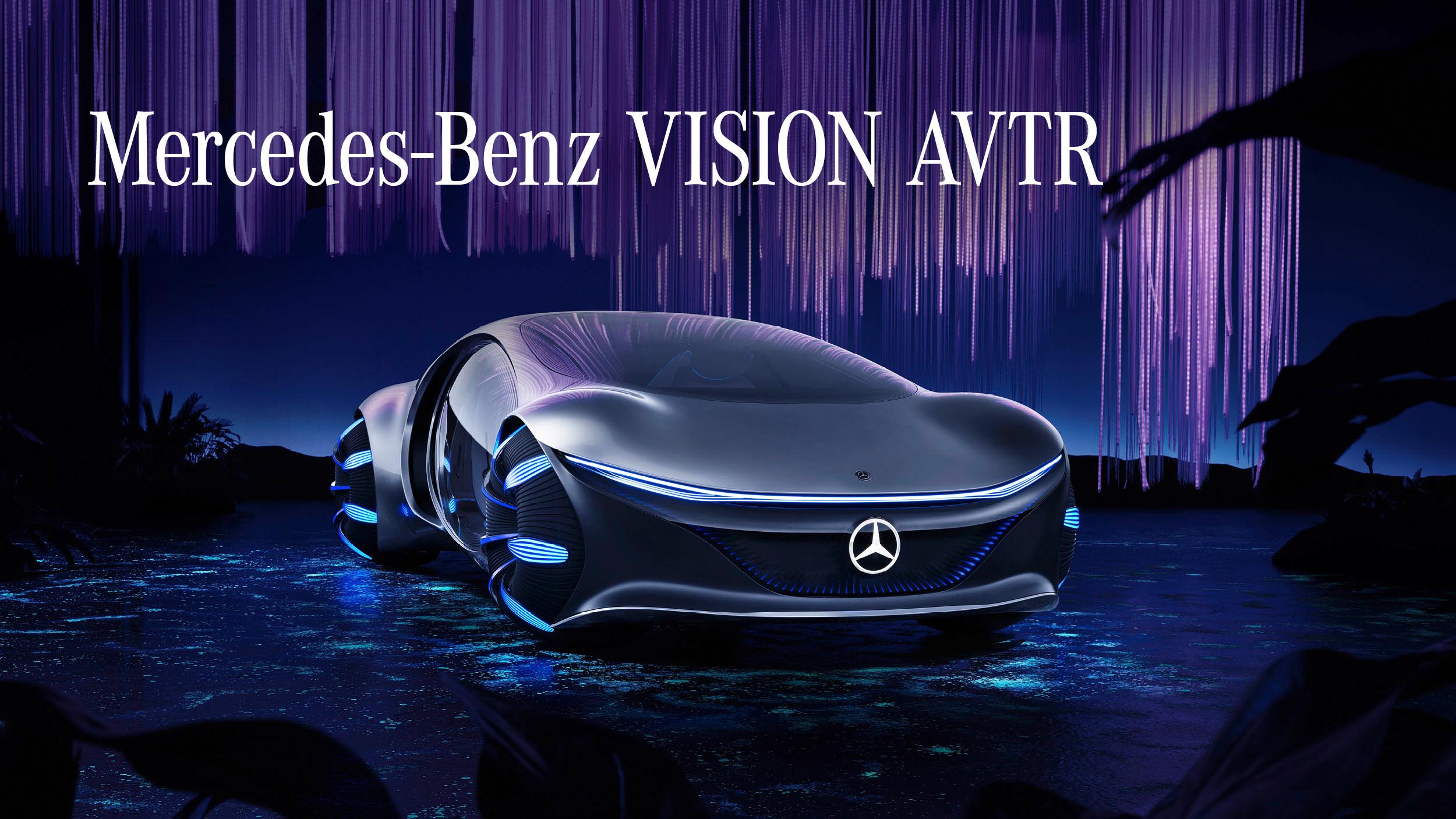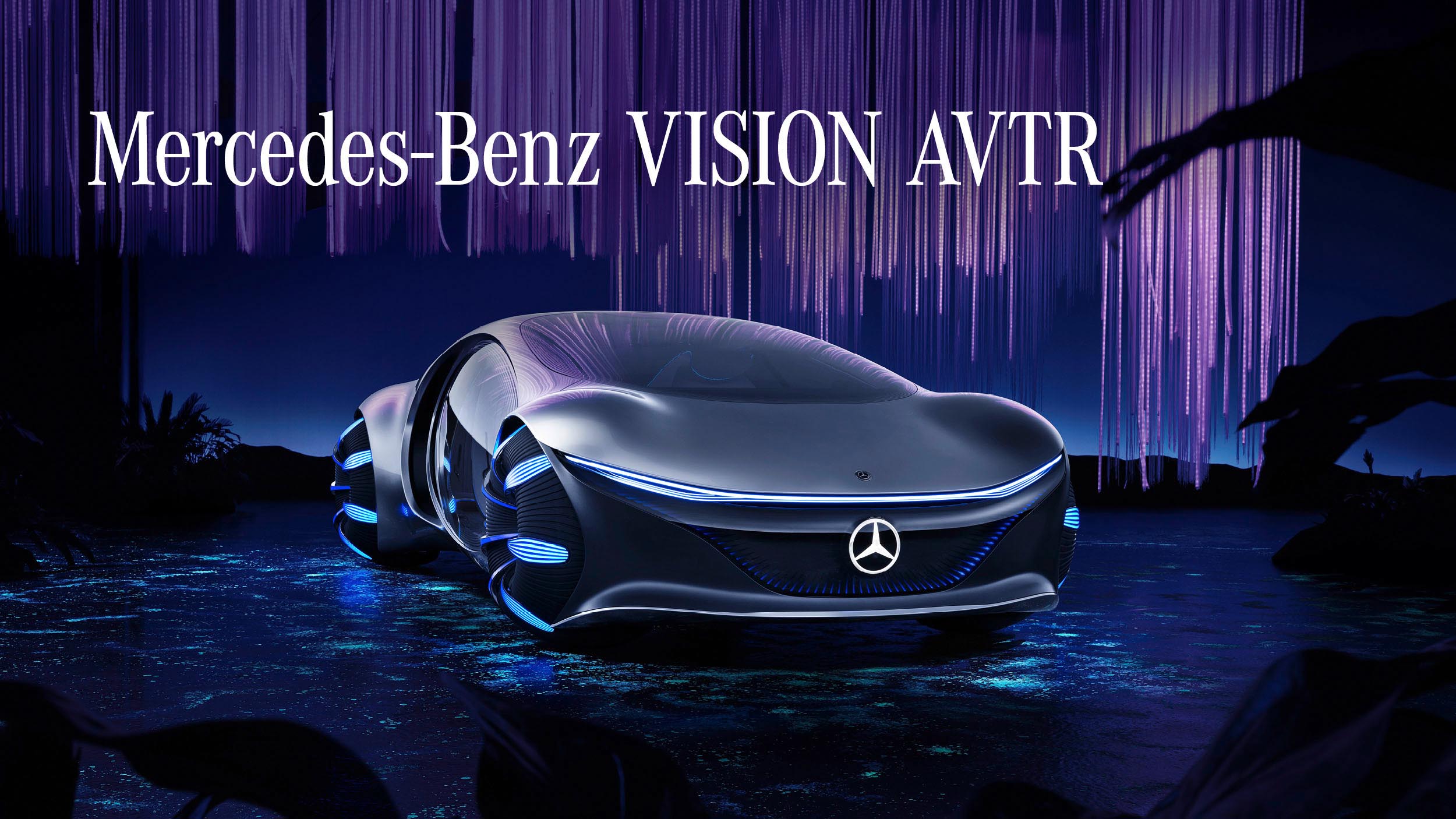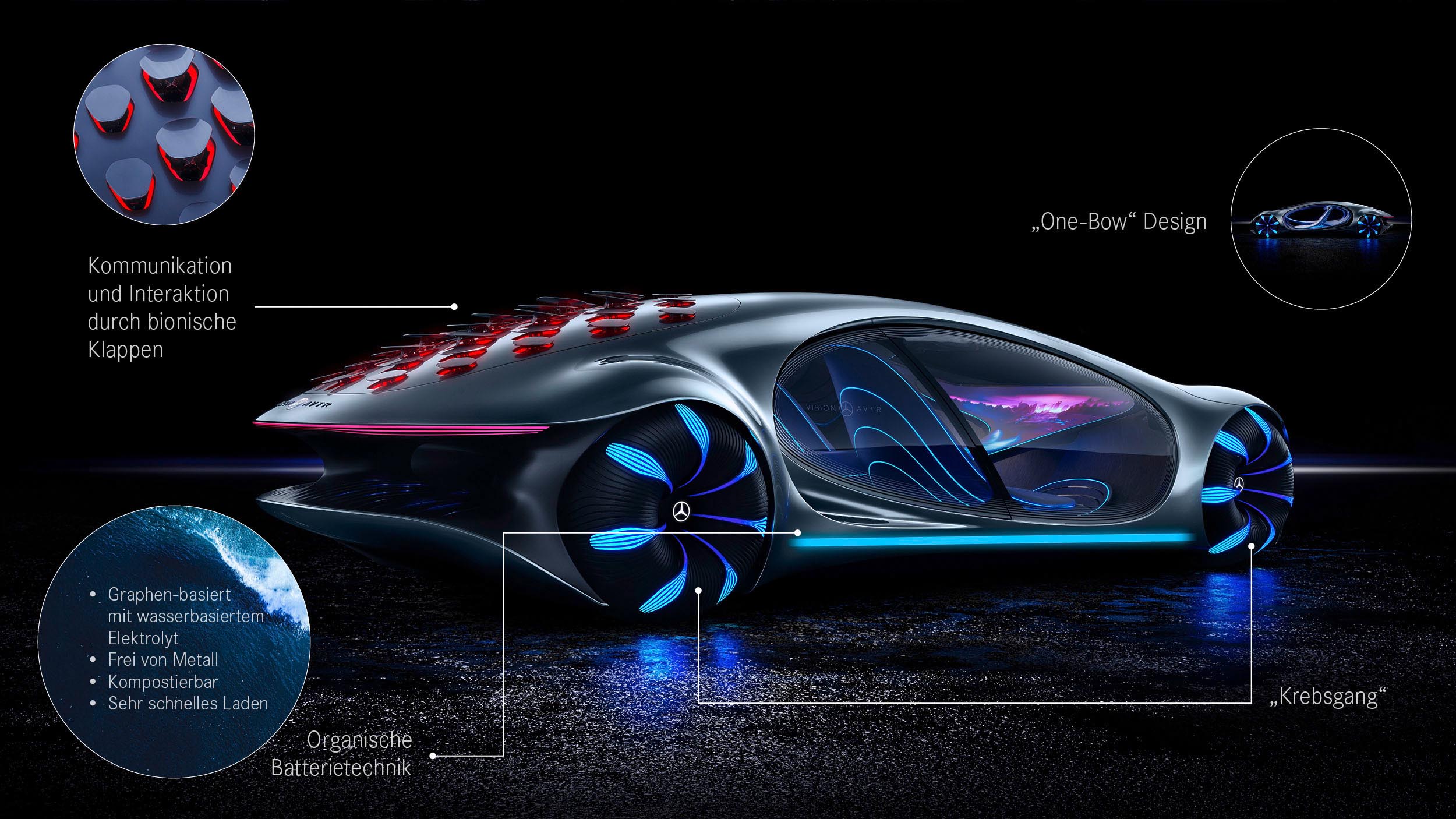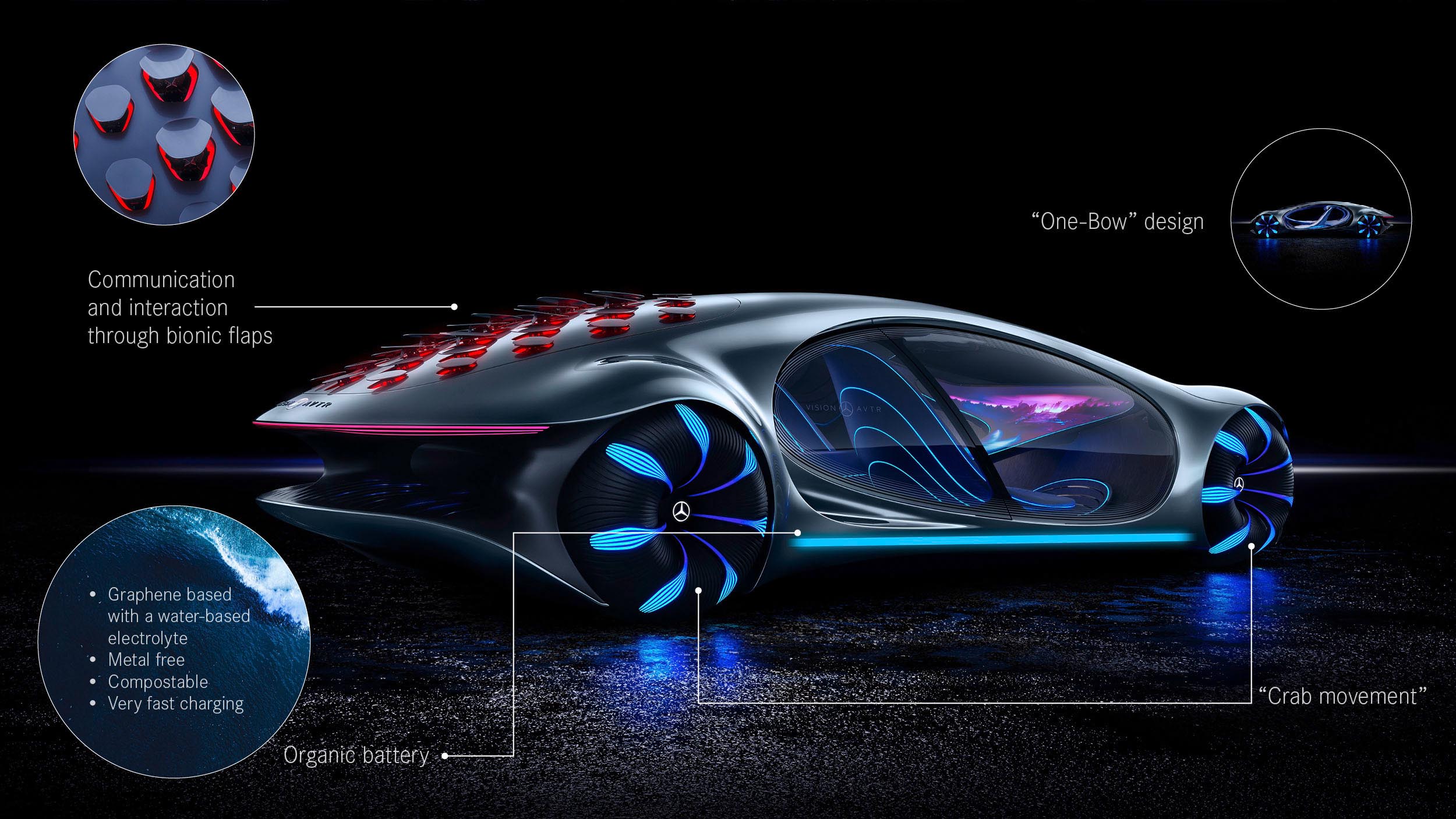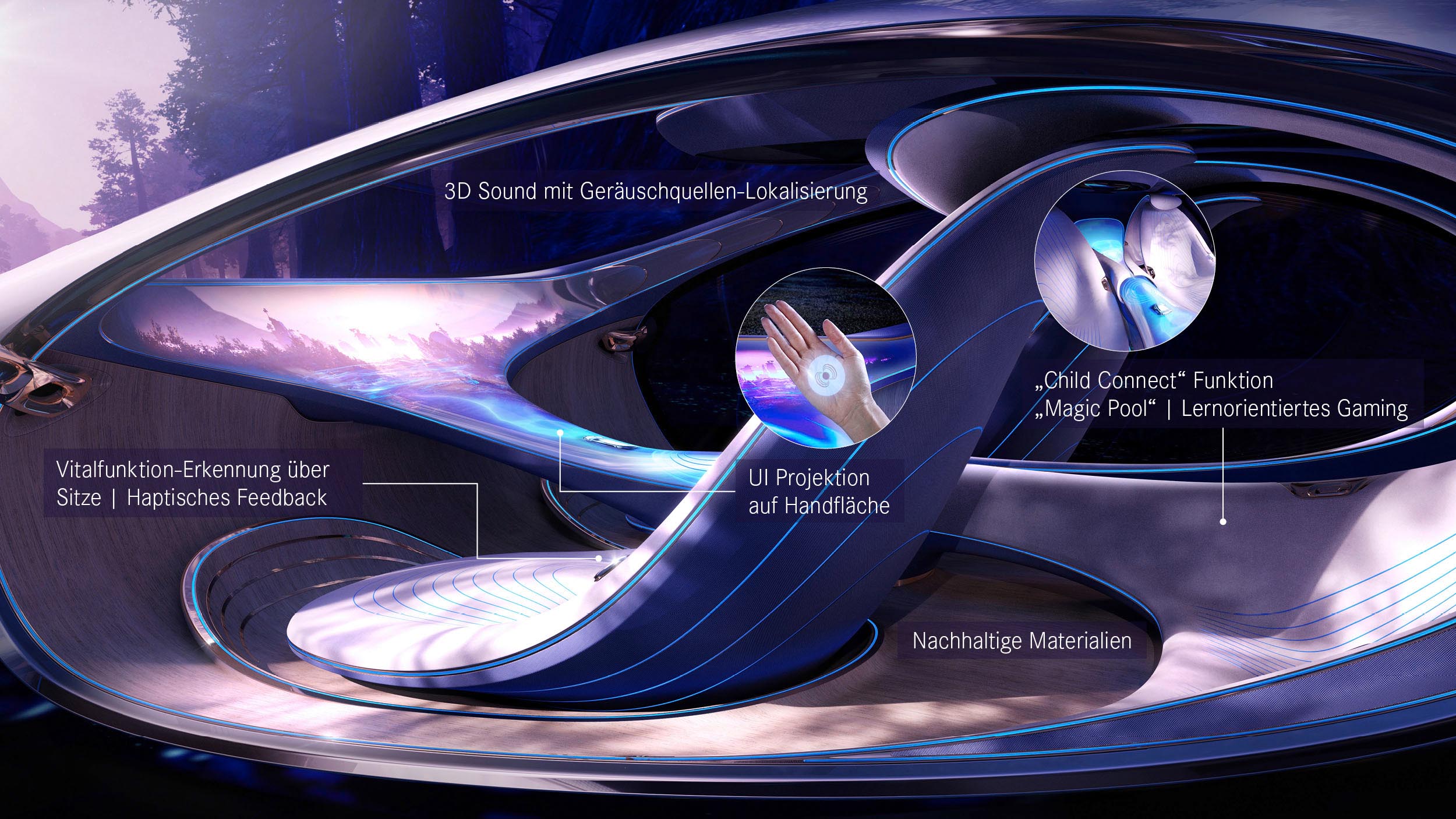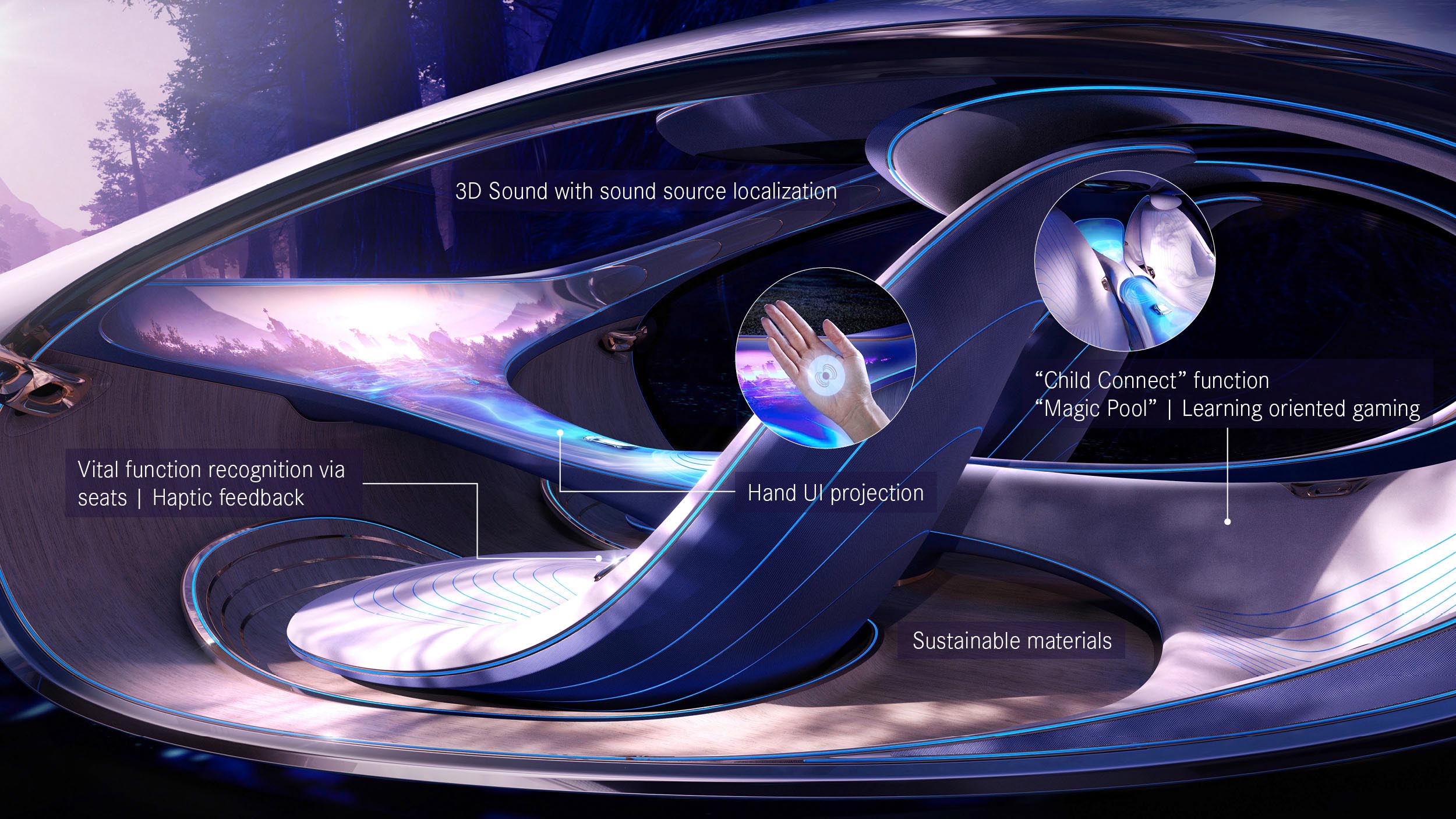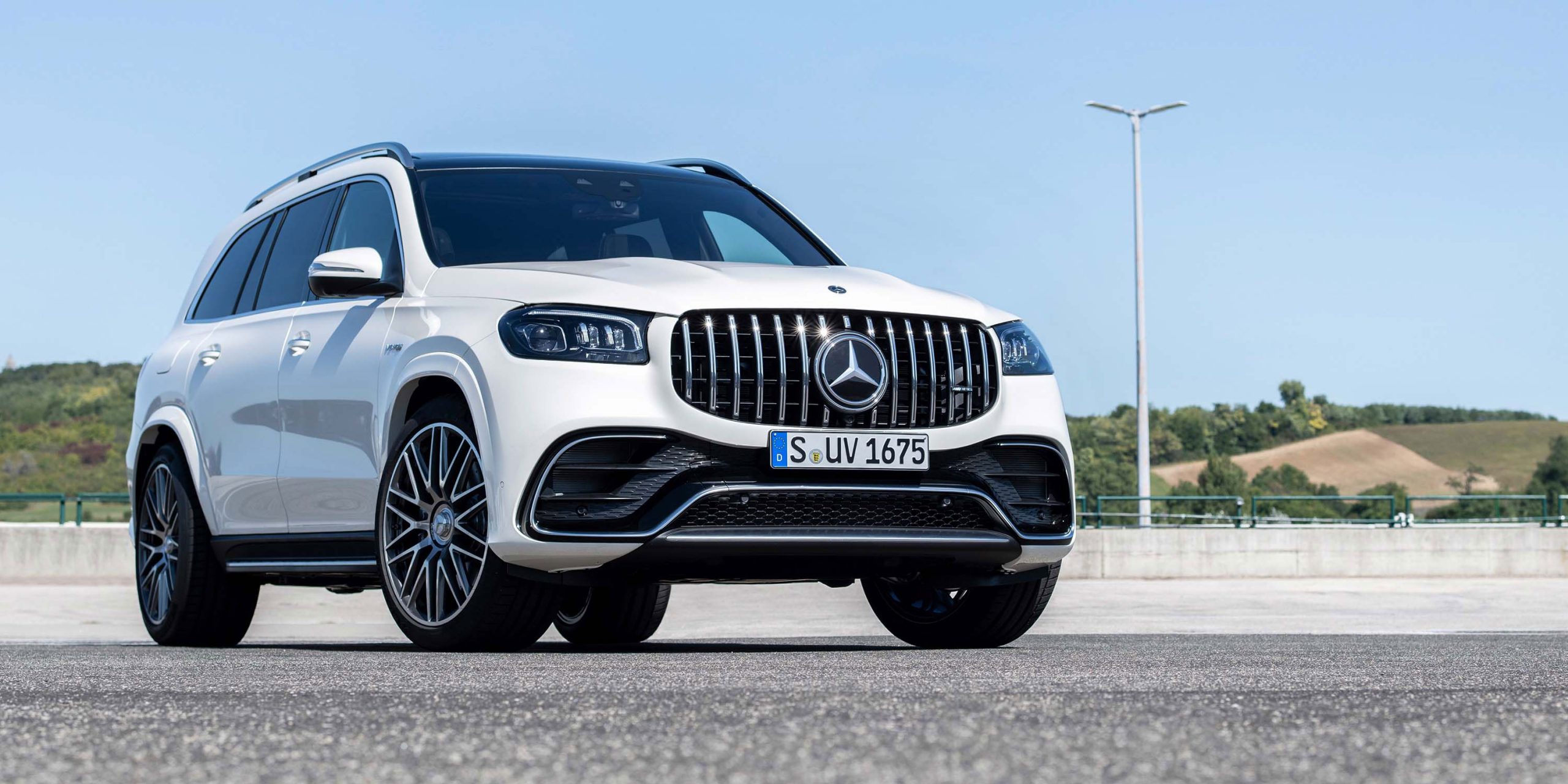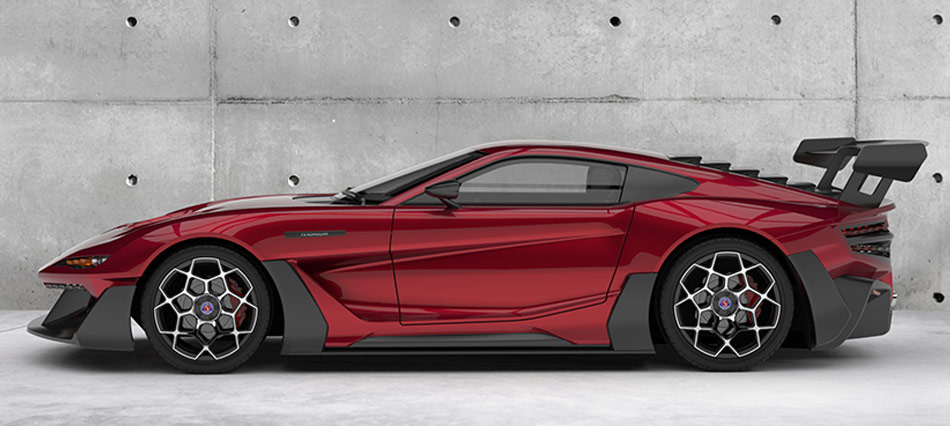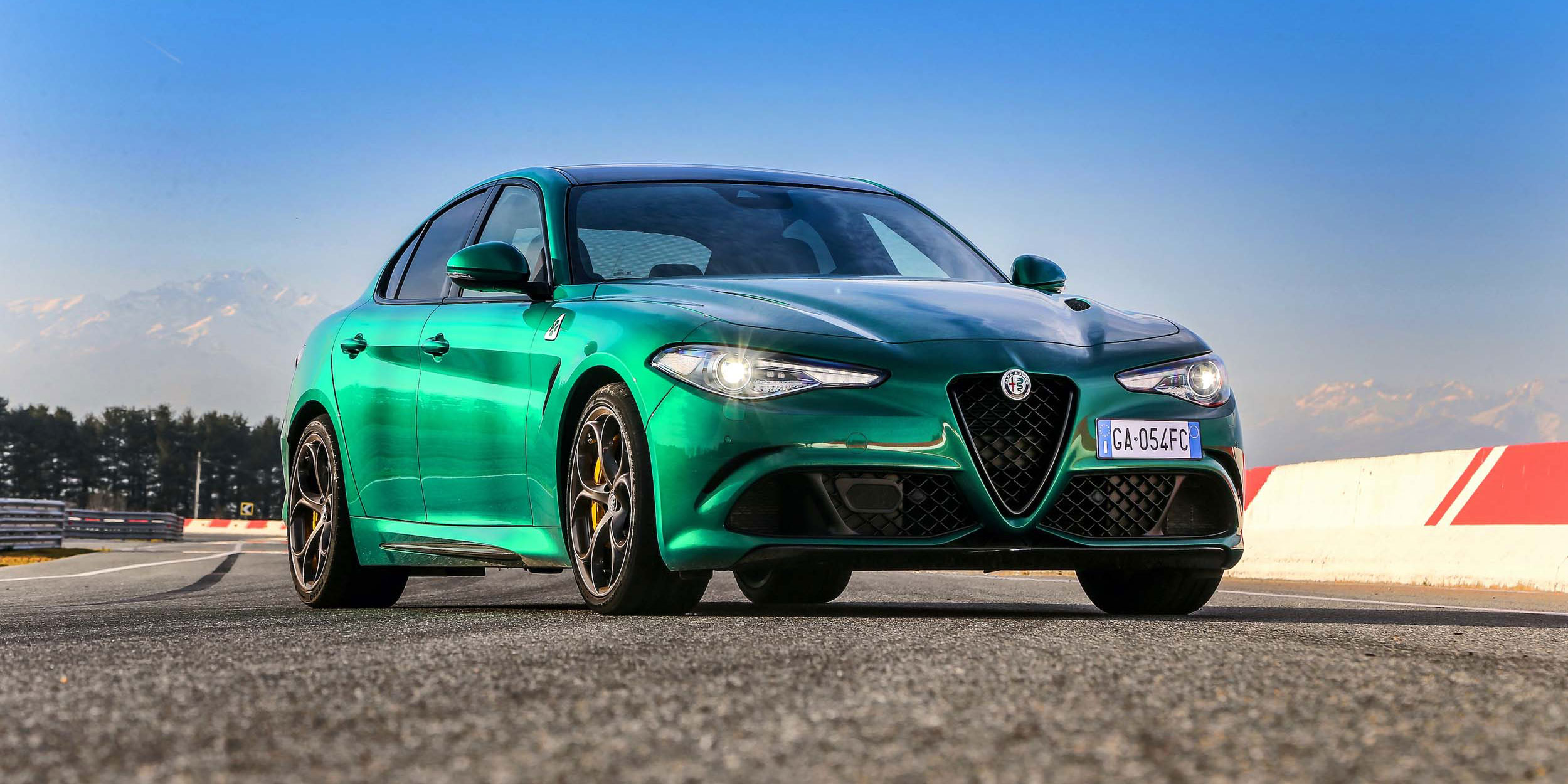Inspired By The Future: The Vision AVTR
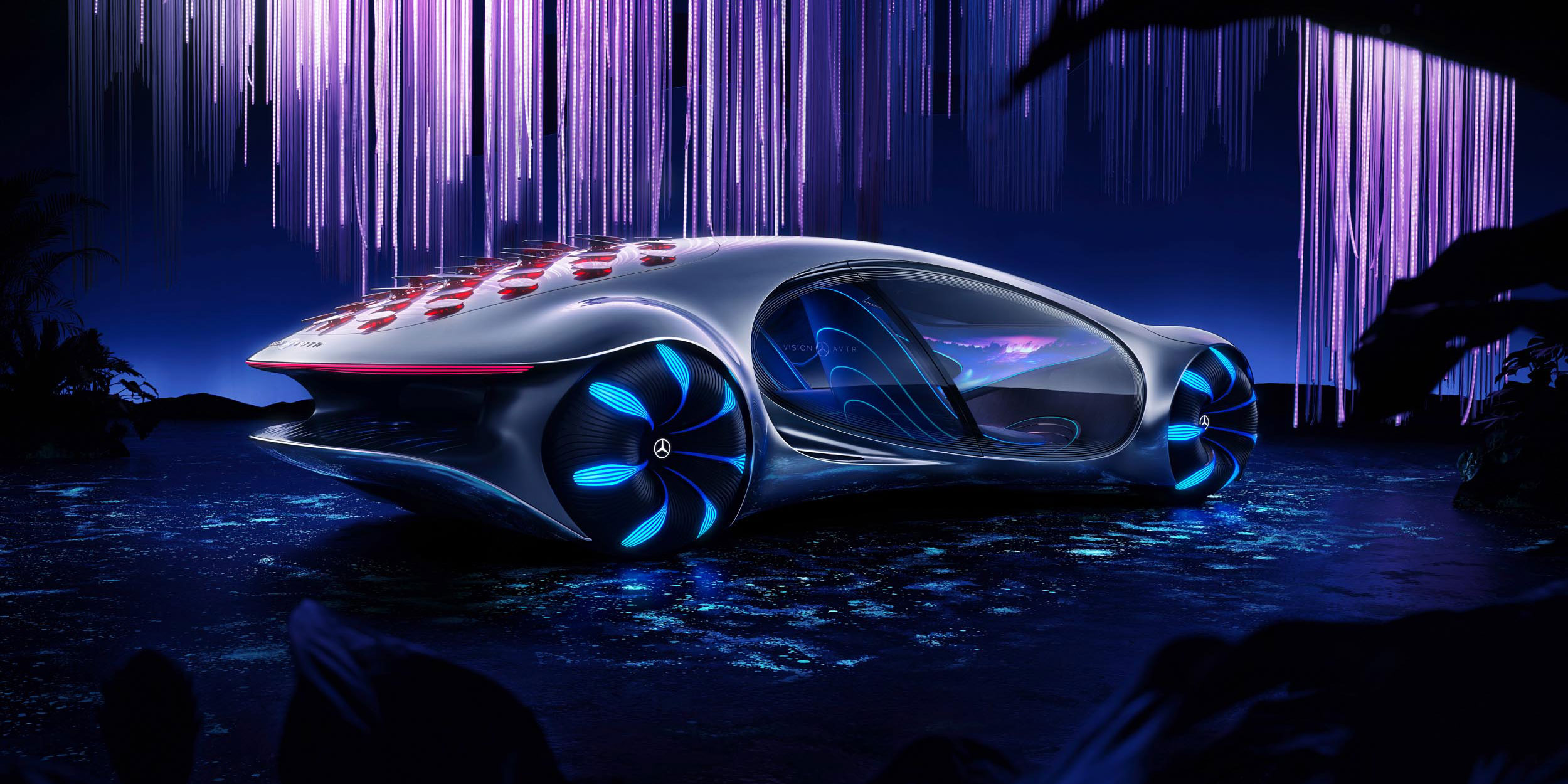
PARTNERSHIP:
Mercedes-Benz VISION AVTR – inspired by AVATAR: The name of the groundbreaking concept vehicle stands not only for the close collaboration in developing the showcar together with the AVATAR team but also for ADVANCED VEHICLE TRANSFORMATION. This concept vehicle embodies the vision of Mercedes-Benz designers, engineers and trend researchers for mobility in the distant future.
Mercedes-Benz VISION AVTR – inspired by AVATAR is the result of an unprecedented global partnership between one of the most innovative brands in the entertainment industry and the eighth most valuable brand in the world, Mercedes-Benz.
Inspired by the world of Pandora – the VISION AVTR shows a completely new interaction between human, machine and nature.
DESIGN AND UX
Fusion of interior and exterior: The holistic concept of the VISION AVTR combines the design disciplines interior, exterior and UX on an unprecedented scale. The distinctive inside-out design structure combines inside and outside into an emotional whole and was inspired by several creatures from the movie AVATAR. With its stretched “One Bow” design and organic design language, the VISION AVTR offers a visionary outlook on the design of the future.
Biometric connection: Instead of a conventional steering wheel, the multifunctional control element in the center console allows human and machine to merge. By placing the hand on the control unit, the interior comes to life and the vehicle recognizes the driver by his or her heartbeat and breathing.
Immersive experience space: By simply lifting the hand, a menu selection is projected onto the palm of the hand, through which the passenger can intuitively choose between different functionalities. For example, real-time 3D graphics can be used to explore the fictional world of Pandora from different perspectives. The curved display module creates the visual connection between passengers and the outside world.
SUSTAINABILITY AND DRIVE
Organic battery technology made of recyclable materials: For the first time, the VISION AVTR concept vehicle is using a revolutionary battery technology based on graphene-based organic cell chemistry that is completely free of rare earths and metals. The materials of the battery are compostable and therefore completely recyclable. In this way, electric mobility becomes independent of fossil resources. As a result, Mercedes-Benz underlines the high relevance of a future circular economy in the raw materials sector.
The vehicle as a living creature: The 33 “bionic flaps” on the back of the vehicle are reminiscent of scales of reptiles. They can communicate with the driver and through the driver with their outside world through naturally flowing movements in subtle gestures. Due to the possibility to drive the front and rear axles in the same or opposite direction, the VISION AVTR can move sideways by approx. 30 degrees, in contrast to conventional vehicles. The so-called “crab movement” gives the concept vehicle an animal-like appearance even in its movement.
Sustainable materials: The seats of the VISION AVTR are refined by vegan DINAMICA®leather. DINAMICA® is the first and only microfiber that guarantees environmental sustainability throughout the entire production cycle. The floor is decorated with an innovative wood called Karuun®. The raw material for Karuun (Rattan) grows very fast as a natural raw material and is harvested by hand in Indonesia. The material gives the interior warmth and radiates naturalness.
Consumer Electronics Show (CES) Keynote
Keynote: “Sustainable Modern Luxury – Next Chapter”
Las Vegas, 6 January 2020
Check against delivery
Ola Källenius
Chairman of the Board of Management Daimler AG and Mercedes-Benz AG
Where do we take it from here?” I guess that’s the core question of every CES. And this inner unrest for what’s next is also at the core of our purpose at Mercedes-Benz. Today we would like to show what that means. As a film buff, I spent some time catching up with old and new movies. One of the classics, “Back to the Future,” predicted we would be traveling in flying cars by now.
Yes, air taxis exist. One example is the shared “Volocopter” from a great team of entrepreneurs that we are supporting. But it’s still far from a standard option today. There’s another area of technology where the car has made great progress and still has amazing potential: connectivity.
And to us at Mercedes, that’s way more than pairing a smartphone to your car entertainment system. What I want to focus on is the bond between human and machine. Tech in a car is all about the interface. From wooden sticks to switches and buttons, all the way to our MBUX voice assistant. – such as in our all-electric EQC. For example: you can ask Mercedes how your favorite sports team recently performed or what the weather looks like on the way to your favorite ski resort. Later this year, you will also be able to control your smart home from the road. And the next step in the evolution of the interface at Mercedes is just around the corner: the first truly intuitive gesture control. Because we believe the interface is key to providing customers seamless access to opportunity – without being lost in complexity. The more natural the connection gets, the better. That’s especially important for our business because folks build highly emotional relationships with their cars. I don’t know how many people have a nickname for their smartphone. But we all know that many cars are called and treated like friends or family. So it’s even more satisfying when you can interact with your car like a friend. One idea we want to show is based on a biometric connection between the car and the driver. The car recognizes the human driver’s heartbeat and breath so man and machine literally merge into a fully intuitive experience.
Selecting different functions, for instance, is easy: simply raise a hand and the menu is projected onto your palm. Before we get to that, there’s another, even more fundamental dimension of connectivity we cannot ignore: connecting tech and nature. Mercedes-Benz has always been a technology and a luxury brand. And it is time to bring luxury and sustainability even closer together. Because for us, the two are no contradiction. I am a finance guy by training; I know that resources are always limited –including those of our planet. And I am Swedish by birth – it’s a beautiful, sparsely populated country with abundant nature and wildlife. In fact, more than half of Sweden is covered by trees. To preserve nature, many things need to change. And we are determined to take responsibility. Some people might say “here’s the easy fix: Stop people moving from A to B. Stop making cars altogether.”
But let’s face it: global demand for individual mobility is set to grow. Our 2019 sales figures prove that with the ninth record year in a row – and the fourth consecutive year as the number one car brand in our segment. Our home turf, the luxury car market, is projected to outgrow the industry average. People just love their individual freedom to instantly go where they choose when they want. That’s why our perspective is clear: we understand the boundaries of our planet. But we don’t want to add new boundaries to mobility. In other words, fewer cars are not the solution. Better cars are. Yes, the continued growth of mobility means a corresponding growth in the use of resources. But we have to change that. Our approach is decoupling. Decoupling the Mercedes way, however, means that we’re decoupling volume growth from resource consumption. Our tools to achieve that are sustainable innovation and technology.
And we have three main levers to succeed: reduce, reuse, recycle – with the ultimate goal of fully closing the loop, from value chain to value cycle. Nature is and remains our greatest teacher. Nature has perfect cycles: nothing’s wasted. This attitude also sets the bar for the way we want to do our business. Bringing humans, machines and nature closer together will require action on many different playing fields.
For us, step one is reducing our CO2 footprint: we’ve started that under the headline of “Ambition 2039”. We’re aiming at carbon-neutral vehicle production, growing the share of electric vehicles sold and, finally, having a carbon-neutral new passenger car fleet by 2039. We want to address this in a holistic way. That includes driving our suppliers and partners to comply with our objective of carbon neutrality.
Our next step: we’re focusing on resource preservation. For example: saving water. By 2030, our car-production plants are set to reduce their total water consumption by a third per vehicle. That adds up to hundreds of millions of liters of drinking water. The ultimate goal, of course, is a fully closed water cycle. That means our plants reuse a lot of the process water throughout the factory. We have initial projects underway in several plants around the world.
Another example is reduced energy consumption. By 2030, our car production plants are set to reduce the energy they consume by more than 40% per vehicle. Today, our plants in Jawor, Poland, as well as in Hambach, France, already run entirely on renewable energy. By the end of 2022, all plants in Europe will be carbon-neutral run on renewable energy. The rest of the world will follow. And we’re also reducing waste. By 2030, our factories will also reduce waste per vehicle by more than 40%.
Where we can’t go for reduction, we focus on reuse and recycling. As we keep expanding our electric vehicle lineup, the battery is a major lever. A great example of reusing electric car batteries is giving them a second life as stationary energy sources. Ultimately it’s about closing the loop in a circular economy based on recycling. Every Mercedes passenger car is recyclable by 95% today. And this standard also applies to our electric cars. Battery recycling is happening, but there is room for improvement. What we are aiming at are 100% recyclable batteries.
So we will show you a sneak preview of a next level battery technology for the future. At the same time, we keep encouraging our partners and suppliers along the value chain to further increase the usage of secondary materials like steel, aluminum and polymers to foster circularity. Just as we do in reducing our CO2 footprint. To sum it up: the philosophy of reduce, reuse and recycle will lead us to our ultimate goal: the zero-impact car – a car that uses technology to provide maximum fascination for people but has zero negative impact on the planet. This may be in the distant future. But it’s our goal nonetheless. Pursuing this mission we have teamed up with like-minded innovators who share our vision of putting tech and nature in balance.
They have created one of the most fascinating and successful Hollywood movies of all time. It is my great pleasure to announce the global partnership between Mercedes-Benz and the AVATAR films. I would like to present the first result of this partnership: the Mercedes-Benz VISION AVTR – which translates to “Advanced Vehicle Transformation”.
A visionary car that points far into the future. And a show car that is truly inspired by the fascinating world of AVATAR. The result highlights completely new ways of intuitively connecting humans and machines – without wooden sticks, plastic knobs or a steering wheel. The VISION AVTR also showcases new ways of moving people through the environment – sideways, like a crab, for instance. It takes sustainability to new levels through a fully recyclable battery, which is based on an organic cell chemistry and doesn’t need materials like nickel or cobalt.
This means in the future, the battery could be compostable. And it offers incredibly fast charging, too. Of course, this show car also uses many recycled and sustainable materials inside the cabin, like vegan DINAMICA leather or Karuun woods made of fast-growing rattan. It also provides spectacular insights into nature and nearby wildlife, while blurring boundaries between the interior and the outside world. In fact, it is less of a machine – and more of a living creature in its own right.
The VISION AVTR is a show car and show cars are here to spark our imagination of what’s possible, just like good science fiction movies do. Imagine a car that delivers a completely new experience which combines an inside-out design philosophy – with an outside-in approach to connecting passengers and environment. This car showcases new ideas of communicating – for instance by using its bionic flaps.
We believe aiming high and thinking ahead is incredibly important. We believe that inspiration and fascination are the most powerful drivers for change and progress. Our way is Sustainable Modern Luxury. Our tools are technology and innovation. The transformation of the automotive industry, the industry at large, and society as a whole – is something we look forward to. We’re quintessential tech optimists. The “Vision Advanced Vehicle Transformation” is a symbol of that. And a reminder that the best is yet to come.
Experience the entire keynote by Ola Källenius with the world premiere of the VISION AVTR from
January 6, 2020 in Las Vegas/USA as a video-on-demand in the CES 2020 event special on Mercedes me media:https://media.mercedes-benz.com/CES2020
Interview with Britta Seeger
“This partnership embodies pioneering spirit, innovative strength and sustainability”
Britta Seeger, member of the Board of Management of Daimler AG and Mercedes-Benz AG responsible for sales, about the global partnership between Mercedes-Benz and the upcoming AVATAR films, how luxury and sustainability are compatible and the customer behaviour of the future.
Ms. Seeger, how did the collaboration between Mercedes-Benz and the AVATAR team develop?
AVATAR and Mercedes-Benz have similarities: the film conveys values, goals and messages that we stand for as a brand. The AVATAR film sequels inspired us to develop a groundbreaking concept car: the VISION AVTR, which stands not only for the collaboration in developing the showcar with the AVATAR team but also for ADVANCED VEHICLE TRANSFORMATION. Mercedes-Benz thus shows how fascinating and sustainable the connection between man, machine and nature can be. As automotive pioneers, we want to further develop our fascination. We want to make our brand the most popular and sustainable luxury car brand. With the partnership with the AVATAR films, we are taking a next step.
What similarities do you see between the brand partners?
Pioneering spirit, innovative strength and sustainability, to name just a few connecting elements between the brand partners. Two modern brands from the entertainment and automotive industry are united in the pursuit of a viable future and a vision of what it might look like. We also have the courage to break new ground with creativity and inventiveness. We are role models and are aware of the responsibilities involved. Together, we have the opportunity to show that it is time to cross borders and to drive forward completely new opportunities and innovations. The film AVATAR has revolutionized filmmaking and 3D cinema and will certainly create a fascinating viewing experience in its sequels. As the inventor of the automobile, Mercedes-Benz aims to reshape individual mobility. With the human being at the center, we succeed in combining technology, nature and human experience – as our showcar proves.
In AVATAR, sustainability is a big theme. Can sustainability and luxury be combined?
The world James Cameron created in AVATAR also inspires us to follow a clear vision. We want to combine the strengths of the Mercedes-Benz brand, such as long-standing tradition and high innovative strength, with mobility that is more sustainable and intuitive. This is anchored in our corporate strategy and we act responsibly. All the products and services we offer are not only intelligent, but also emotional. We think of our brand consistently from the customer’s point of view and put it at the heart of our actions. In this way, we combine modern luxury with sustainability and focus entirely on the core values of our brand: ease, respect, trust and love.
How does the Mercedes-Benz customer benefit from this?
Time savings and comfort mean luxury for many of our customers. With “Best Customer Experience 4.0” we consistently align our sales to these requirements and want to offer our customers a seamless and comfortable luxury experience – regardless of time and location or the communication channel they use. Buying a Mercedes-Benz should be as easy for our customers as buying a book. For example, we expect to achieve 25 percent of our worldwide passenger car sales through online channels by 2025, together with our sales partners. The Mercedes me ID is also a central example of how we make our products and services easily accessible to customers. Whether via apps on your smartphone, website or the Mercedes me Store directly in the vehicle: All you need is a single profile that provides personalized access to the entire Service World of Mercedes-Benz. In short, we put our customers in the spotlight more than ever and always strive for the best possible products, services and brand experiences for them.
Do you think customers will change their consumer behaviour in the future?
Digitalization gives us the opportunity to strengthen our relationship with our customers and to be available to them around the clock. With “Best Customer Experience 4.0” we offer our customers a seamless and comfortable luxury experience whenever they want to get in touch with Mercedes-Benz. However, we are also convinced that the unique physical experience of purchasing a luxury product will continue to be extremely important for our customers in the future. We know that more than 80 percent of customers are still advised in personal contact and want to do test drives. Our 6,500 partners worldwide are therefore indispensable for us in the future. In the dealership, our customers expect full flexibility, fascinating experiences and an optimal fusion of the online and offline world. That’s why we seamlessly connect physical commerce to digital channels and redesign it with innovative store and location concepts. The point of sale becomes the point of experience.
Interview with Markus Schäfer
“The VISION AVTR underlines the courage and pioneering spirit of our brand”
Markus Schäfer, Member of the Board of Management of Daimler AG and Mercedes-Benz AG, responsible for Group Research and Mercedes-Benz Cars Development, Purchasing and Supplier Quality on the Future of Mobility, Digital Transformation and the sustainability strategy of the Group.
Mr. Schäfer, what do you think the VISION AVTR stands for?
For Mercedes-Benz, the VISION AVTR is a very untypical concept vehicle. We have always looked to the future in our history, but we have never looked so far away. For me personally, however, that is precisely the appeal. The VISION AVTR is a mixture of science and creative speculation. It combines the technologically feasible with what is desirable for the future and underlines the courage and pioneering spirit of our brand. We invented the car 134 years ago and have developed it to this day with countless groundbreaking innovations. Now our company, like the entire automotive industry, is undergoing a fundamental transformation. On the one hand, we face major challenges, on the other hand we have a unique opportunity: to create a desirable future for us and future generations. There are clearly two issues at the heart of this: customer-oriented digitalization and experienceable sustainability. The VISION AVTR combines both in an extraordinary way.
What is your approach to developing such a forward-looking vision of mobility?
You know, I am a “car guy” and actively shaping the mobility of tomorrow is more than just a task, but my personal drive. I would like to lead with maximum innovative strength. As a developer with passion, I am convinced: Innovative, sustainable technologies are the key to success. They can and will help to shape a better future. Our cross-group research approach can be divided into three main phases: IGNITE, INVENT, IMPLEMENT. Under the keyword IGNITE, we identify social, economic and technological trends and develop them into holistic future scenarios. To this end, we work closely with external partners and scientists worldwide, as well as universities and start-ups from a wide range of industries. Under the keyword INVENT, we define network projects on strategies, concept ideas and prototypes with my global R&D team. And with IMPLEMENT, we transform innovations into concrete applications and accompany them to series production.
Keyword “Sustainable Technologies” – where do you stand concretely when it comes to sustainability?
As a global company, we have a great responsibility. Not only for our customers, but for the future of our planet. We are aware that there is no replacement planet that we could fall back on in an emergency. At the same time, we are convinced that individual mobility is a decisive driver for prosperity and thus for social security and individual independence. We have made it our mission to shape individual mobility without emissions. We recently officially recognized our climate protection goals through the Science Based Targets Initiative (SBTI). In doing so, we are ensuring that they support the path of the Paris climate agreement. Our goal is to resolve the perceived conflict between economic growth and sustainability. We can only achieve this if we consistently conserve resources and move towards a closed circular economy with full force.
What solutions does the VISION AVTR offer here?
Nature is our habitat and the best teacher we can learn from. It is used by bionic construction techniques, perfect material combinations and the approach of the circular economy. In nature, there is not a single solution that is not perfectly limited to the essentials, reuses resources and always recycles them. The VISION AVTR transfers this principle of a closed circular economy to our future vehicles. The concept vehicle describes a desirable future of mobility in which man, nature and technology are no longer contradictions, but are in harmony with each other. The VISION AVTR thus impressively demonstrates the vision of a “zero impact car”.
This all sounds like a distant future. Where are you currently on the subject of recycling?
Already today, all our Mercedes-Benz models are 85 percent recyclable and 95 percent usable. And yet there are other potentials here. For example, in terms of conserving resources, we have set ourselves the goal of reducing energy consumption and waste generation at our plants by more than 40 percent per vehicle over the next ten years. We want to save more than 30 percent per vehicle in terms of water consumption. That’s why I work tirelessly with my team of nearly 18,000 people at 28 locations in 11 countries on technological innovations and strategies. We also work closely with our partners and suppliers. Because we want to offer our customers safe and comfortable mobility and at the same time be in harmony with our environment.
They speak of digitalization as another important focus topic. How does it drive transformation?
Digitalization plays a very important role in all areas of the company. We are constantly expanding our expertise and creating the right conditions to continue to fulfil our role as a leader in innovation and technology. In Tel Aviv, Israel, for example, we have established an Innovation Hub that addresses the digital needs of our customers and cyber security. Our location in Sunnyvale, California, also focuses on digital topics related to mobility. Digitization opens up a whole universe of possibilities for us to create even more fascinating products for the customer. And that’s exactly what we embrace, we think of the car from inside to outside – with a software-oriented approach and cloud-based solutions. Our vehicles also receive “digital DNA” by enabling software-driven applications to permanently improve vehicles’ life cycle. This allows features to be updated or added. In addition, as the so-called “flaps” of the VISION AVTR show, we make the car “living”: The vehicle cooperates and communicates with its environment thanks to intelligent and interactive sensors. Clear signals create confidence by being able to see directly and intuitively how it behaves.
There is also a lot of artificial intelligence in VISION AVTR. What is the significance of AI for you on the way to the future?
A very important one! We see AI as a key technology to create a whole new experience of mobility. It is already an integral building block for us, be it in development, production, sales or after-sales. AI is also becoming increasingly important in the vehicle itself, for example by allowing vehicles to better understand their environment through deep learning, which significantly supports the production-ready development of automated driving. Another example is the Mercedes-Benz User Experience (MBUX) introduced with the A-Class. This system learns the driver’s routines to make personal predictions and make recommendations. Another innovation step we are currently working on is personal AI. Among other things, we explore how our customers can teach their vehicles individual skills. This would allow them to create their own personal AI and build an individual interaction between humans and machines. Nevertheless, in everything we do, the human being with his abilities and individual strengths is always the focus. This is particularly true of research and development, where, from today’s point of view, there is nothing to replace human creativity and social intelligence. New ideas and responding to social needs, whether for customers or employees, are the basis for successful action and differentiation in competition. That is what I stand for – now and in the future.
The drive of the VISION AVTR
A Sustainable Vision of Zero-Emission Mobility
- Sustainable Luxury: Electromobility in harmony with people and nature
- Organic battery technology: Powerful, flexible and sustainable:
- 100% recyclable by renouncing fossil fuels
- Sovereign performance with full suitability for everyday use
- Maximum efficiency through intelligent operating strategy and solar systems integrated into flaps to supply secondary consumers
On the way to the mobility of the future, Mercedes-Benz is a pioneer going far beyond the purely technical realisation of the automobile from today’s point of view. Instead, the company’s experts anticipate different perspectives and social trends. With the VISION AVTR, Mercedes-Benz is demonstrating a sustainable vision of zero-emission mobility – also in terms of drive technology.
Extremely confident – and completely without emissions
With its four high-performance and near-wheel-built electric motors, the VISION AVTR embodies a particularly agile implementation of the vision of a dynamic luxury sedan. With a combined engine power of more than 350 kW, the VISION AVTR sets a new benchmark for EQ Power. Thanks to the intelligent and fully variable torque distribution, the power of the four fully individually controllable motors is not only managed in the best possible way in terms of driving dynamics, but above all in a highly efficient manner. The innovative all-wheel drive with torque vectoring enables completely new freedoms and guarantees driving dynamics at the highest level while at the same time providing the best possible active safety. This means that each wheel can be driven separately and depending on the driving situation. Due to the possibility to drive the front and rear axles simultaneously or in opposite ways, the VISION AVTR can move sideways by approx. 30 degrees, in contrast to conventional vehicles. The so-called “crab movement” gives the concept vehicle a reptile-like appearance even in its movement.
Organic battery technology with high energy and flexible structure
The VISION AVTR was designed in line with its innovative electric drive. This is based on a particularly powerful and compact high-voltage battery. For the first time, the revolutionary battery technology is based on graphene-based organic cell chemistry and thus completely eliminates rare, toxic and expensive earths such as metals. Electromobility thus becomes independent of fossil resources. An absolute revolution is also the recyclability by composting, which is 100% recyclable due to the materiality. As a result, Mercedes-Benz underlines the high relevance of a future circular economy in the raw materials sector.
In addition to an exponentially high energy density – compared to today’s battery systems with up to 1200 Wh/liter – the technology also impresses with its exceptional fast charging capability via automated, conductive charging technology. This means that the battery will be fully recharging in less than 15 minutes. The innovative technology also allows maximum flexibility with regard to the construction space: With a local minimum of 94 mm, the battery adapts ideally to the shared space vehicle concept, thus maximizing the multifunctional interior. With a capacity of around 110 kWh, the VISION AVTR enables an electric range of more than 700 kilometers. By recuperating during roll-out and braking, the high-voltage battery can be recharged with a higher efficiency than established systems while driving and thus contributes to the high energy efficiency of the overall system.
The real potential of this technology is currently in basic research. All in all, the VISION AVTR marks another important step towards sustainable zero-emission mobility in the luxury class. With the concept car, Mercedes-Benz is showing completely new possibilities to make large and luxurious automobiles marketable and environmentally and socially compatible in the future.
Masterpiece of Effiency
At Mercedes-Benz, the consideration of efficiency goes far beyond the drive concept, because with increasing digitalization, the performance of the large number of so-called secondary consumers also comes into focus – along with their efficient energy supply, without negatively affect the drive power of the vehicle itself. Energy consumption per computing operation is already a key target in the development of new computer chips. This trend will continue in the coming years with the growth of sensors and artificial intelligence in the automotive industry. The neuro-inspired approach of the VISION AVTR, including so-called neuromorphic hardware, promises to minimize the energy requirements of sensors, chips and other components to a few watts. Their energy supply is provided by the cached current of the integrated solar plates on the back of the VISION AVTR. The 33 multi-directionally movable surface elements act as “bionic flaps”.
“Giving Back the City” – Vehicle to Grid
Thanks to The Vehicle to Grid function, the VISION AVTR fits seamlessly into the future, electromobile ecosystem by bringing energy back to the public from its highly efficient batteries and controlled by its artificial intelligence when needed.
Technical data:
| CO2 emissions | 0 g/km |
| Range (WLTP) | over 700 km |
| Performance | over 350 kW |
| Battery | 110 kWh |
| Drive | All-wheel drive (fully variable) with torque vectoring |
Interview with Alexander Mankowsky
“The VISION AVTR is an imaginative guide to the future”
Alexander Mankowsky, futurologist at Mercedes-Benz, on the role of speculation in science, the extension of the senses through technology and the fusion of human, machine and nature.
Animal like movement, pulse rate in the seats, intuitive control – much of the VISION AVTR sounds utopian, not to say fantastic. How much of it is realistic vision of the future, how much of it is pure science fiction?
The aim of the VISION AVTR is to show us a signpost for a livable future, even if it will probably never be built. The VISION AVTR makes speculative science visible and tangible. As researchers and scientists evolve new theories or develop existing ones, they depend on their imagination. They leave the ground of what can be proved today and enter an area of speculation – a scientifically substantiated “What if?”. This is exactly the approach we have taken with the VISION AVTR. We started from the current state of development and used our imagination to elevate our current view of “human-centered innovation” into the projection of a world in which man is embedded in the entire biosphere. The sooner we tackle this, the better.
What is the basic scenario of the VISION AVTR?
The VISION AVTR serves as an imaginative guide to a future in which our relationship with ourselves, nature and technology has changed. Human beings see themselves as part of the biosphere and are in contact with it. Technology enables us to feel and see the communication streams of the biosphere that are still hidden to us today, to understand them holistically. This understanding will not be passively observing, but will give us opportunities to travel and shape the biosphere with pleasure. The luxury and beauty of the future are based on nature: A flowering rose bush, for example, is fading in colours, shapes and fragrances, and yet remains a permanent player in the cycle of nature. The future luxury of Mercedes-Benz will be based on this.
Can you give an example of the hidden communication flows of the biosphere that are made visible and experienced by the VISION AVTR?
The biosphere communicates, it constantly coordinates. Braids in the forest floor, for example, transport signals from trees over kilometers, direct nutrients to roots and act like a nervous system without a center. Today, we don’t see these signaling paths, but actually sometimes feel them. From the five kingdoms of life – animals, plants, fungi, bacteria and multicellular ones – the ones that we do not see are even the decisive ones. With the VISION AVTR, we offer a glimpse into a future in which we can perceive and even follow these traces through the vehicle’s sensors. Like bees flying along the scented streams of flowers, we discover the biosphere around us in beauty. We can take the worldview of other living beings, feel what a flying being feels, and what it sees.
How are these features related to the world of AVATAR?
AVATAR reveals a symbiosis between the Na’vi and their environment on Pandora.
Developing the VISION AVTR we loved the idea of a symbiosis. Our approach was the human machine merge. Therefore we got inspired by the Gaia hypothesis – from Gaia the Greek mother goddess of life. Biochemist James Lovelock described this hypothesis in the 1960s. He had been working on the composition of atmospheres on behalf of NASA and described that the atmosphere of Mars is chemically balanced. The Earth’s atmosphere, on the other hand, is full of tensions, it is not stable. Without action, it would fall into an ongoing retirement, like that of the planet Mars. The Gaia hypothesis was the first answer to the question of how this earth’s instability is not only preserved, but also the exact amount of oxygen to breathe and to live is contained in it.
Lovelock recognized that the biosphere creates its own environment. The forest e.g. dispels moisture when the sun is too strong and the resulting clouds cool the forest. This is the so called Gaia hypothesis. That means the earth, sustains herself as a living planet. Metaphorically speaking, our planet lives.
How this symbiosis is made tangible in the VISION AVTR?
The whole vehicle is designed for this symbiosis. On the one hand by the mentioned sensors, on the other hand also by the intimate position of the vehicle occupants, which enables a fusion of body and vehicle. Our breathing – the expression of our vitality – is exchanged between passengers and the environment. The VISION AVTR adapts through its flowing forms of natural aesthetics, overcoming the boundary of natural and technical formal language. The magical moment of merging body, technique and nature is already carried out when entering the vehicle.
Interview with Gorden Wagener
“The Showcar VISION AVTR defines the sustainable luxury of the future”
Gorden Wagener, Chief Design Officer Daimler Group, has changed the design philosophy of Mercedes-Benz and shaped the face of the brand with forward-looking models. In this interview, he talks about the inspiration for the show car VISION AVTR, the luxury concept of the future and the combination of sustainable mobility and exceptional design.
Mr. Wagener, what inspirations from the AVATAR films can be found in the VISION AVTR?
For me, it was above all the very broad outlook for a sustainable future. The world of AVATAR is a cosmos full of new shapes and colors, and such inspirations are inherently inspiring for designers. Just think of all the extraordinary environments, life forms and also the culture of the the indigenous inhabitants Na’vi The world of Pandora is closely related to our design philosophy of sensual purity and the bipolarity of our brands of intelligence and emotion. The Na’vi as highly intelligent living beings have developed fascinating, even adventurous forms of transportation. AVATAR is also a film in which mobility and dimensions play a central role and the connection of the humans with nature was of course a great inspiration for us.
We have also placed a strong focus on organic materials and functions that are reminiscent of organisms. The transparent doors, for example, open upwards. Together with the flaps on the back of the vehicle they make the showcar appear light. The interior acts like a nest or a cocoon that protects passengers. Here we only used organic or vegan materials. The center console symbolizes the Tree of Souls, the holiest place of the Na’vi. It extends dramatically to the A-pillar and creates its roof structure, which gently encloses the passengers in the back seat like a cocoon. The headrest of the rear seat is stretched forward so far that it develops into the headrest of the front seat. Everything is connected to everything.
Which central motif stands for the design?
The world in harmony and symbiosis with nature are our guiding principles. We designed the showcar as a holistic system. Everything can be changed, and at the same time has an impact on the whole organism – or the car. Even the outer shape reflects this. It is still clearly recognizable as an automobile, but with many references to natural beings. We wanted to design a car that could connect seamlessly with its passengers. The user experience as a central element is comparable to a symbiotic organism. Our design philosophy of sensual purity is always the guiding principle – our aesthetic soul, so to speak. Another inspiration from AVATAR sequels is the strong focus on the family. Our VISION AVTR adapts to the needs of a family as a whole, but also to the needs of each individual member. It recognizes each passenger by touching a hand. Another example is the haptic seats, which can record vital data, such as measuring the driver’s breathing and adjusting the environment to the emotional state or even the stress level of the driver.
How did the design process differ from other showcars and vehicles?
We started the design process from the experience and consciously put the perception and needs of the passengers at the center of our design process. Our goal was to create a car that prolongs the perception of its passengers. We also wanted to create an immersive experience space where passengers connect with each other, with the vehicle and the surrounding area in a unique way. That is why we have worked our way in this vehicle from the inside out for the first time.
How does the VISION AVTR prolong the senses?
Passengers are fused across the senses with their ergonomic vehicle and can use various intuitive functions via projections on the palm of their hands. But passengers also perceive their environment completely anew via displays. The change of perspective is unique, for example, a bird’s view of its environment is possible and the world is perceptible from a great height. In addition, each individual passenger is connected to the other occupants. The car measures the vital signs of the occupants, adjusts the lighting mood and, if the children are excited in the back seats, can direct the pulse of the children into the seats as a sign of the mood of the parents and inform them.
Is luxury still relevant in the distant future and if so, in what form?
Luxury is sensuality and the showcar pushes sensuality to the extreme, because it makes it possible to feel, see and hear the surroundings in a way that has never been thought possible before. The vehicle exceeds all expectations with intelligently networked and easy-to-use assistance environments, thus achieving maximum comfort. The spacious interior allows for a new way of moving around, even life. Design is crucial to turn technology that some might find cold or purely efficiency-driven into a desirable and emotional experience. This luxury is timeless. It also enables progress, drives innovation and creates sustainable values. Our VISION AVTR is the pinnacle of these efforts and thus the redefinition of sustainable modern luxury.
The interior – inspired by nature
An adventure space for immersion with all your senses
Despite its revolutionary approaches, the VISION AVTR follows the design language of the EQ product and technology brand: Beauty coupled with digital elements creates tension, technologies of the distant future underline the progressive luxurious design language.
Interior and exterior merge
For the first time, Mercedes-Benz has worked with a completely new design approach in the design of the VISION AVTR. The holistic concept combines the design disciplines interior, exterior and UX from the first sketch. Man and human perception are the starting point of a design process from the inside out. The design process begins with the experience of the passengers and consciously focuses on the perception and needs of the passengers. The goal was to create a car that prolongs the perception of its passengers. It was also a matter of creating an immersive experience space in which passengers connect with each other, with the vehicle and the surrounding area in a unique way.
The distinctive inside-out design structure of the VISION AVTR combines the interior and exterior to create an emotional whole. The lateral opening of the outer line runs through the interior and creates a very generous loop structure, which is inspired by the connection between the Na’vi in AVATAR and their natural environment on Pandora. As a result, there is only one line for the viewer that never stops. With its novel, stretched “One Bow” design and clear organic design language, the VISION AVTR shows the next stage of vehicle design. From mindful perception to perfect adaptation to the fusion of human and machine as used in VISION AVTR with the control unit. The senses of the passengers merge not only with the vehicle, but also with the outside world.
Inspired by Mother Nature
Nature serves as the main source of inspiration for the interior of the VISION AVTR: The entire structure is designed from one line and takes on organic shapes. Flower-like and softly woven elements of the interior contrast with dynamic contours. Light strips in the seats find their optical extension in projections on the center console.
The interior is enlivened with energy lines and rich real-time graphics. The user experience comes into focus. The user experience as a central element of the VISION AVTR is comparable to a symbiotic organism. As soon as the passengers board and take a seat, they merge with the vehicle and can literally feel the world around them and experience it even more consciously. Technical and functional elements can be operated intuitively. This vehicle has no visible buttons or switches, functions are projected onto the body or hand of the driver or the passenger – a new level of human-machine fusion. The technology is only visible when the driver really needs it and wants to use it. The dashboard design underlines this nature experience with an atmospheric and luminous look.
Flowing lines
Inspired by the connection of the Na’vi in with aspects of their natural world, the Mercedes-Benz designers have created an outer line that spirals through the interior. In the vehicle side, the VISION AVTR becomes an inside-out sculpture through a large oval opening: The interior and exterior are visually connected, from the neck support, through the door opening to the sill. This spiral also includes the rear seats and encloses the passengers on the rear benches. A single line winds from here to the front to the headrest of the passenger.
The front seat, in its very organic form, is reminiscent of the leaf hammocks in Home Tree shown in the first AVATAR film; the impulses provided by the seat make driving a holistic experience. The center console symbolizes the Tree of Souls, the most sacred place of the Na’vi. It extends to the A-pillar and creates its roof structure, which gently encloses the passengers in the back seat like a cocoon. The headrests of the special child seats also extend so far forward that it simultaneously develops into the headrest of the front seats.
The A-pillar consists of several different tinted parts, the colors of which blend seamlessly. Their surfaces are transparent to varying degrees. This creates a magic hologram effect in the main projection area.
The control unit is the intuitive heart of the vehicle. It is seamlessly integrated into the central tunnel and encompasses both driver and passenger, and then continues into the rear seats. The merge between human and machine happens by placing the hand on the center console: the interior comes to life and the vehicle recognizes the driver by his breathing. This is made visible on the instrument panel and the user’s hand. Thus, the VISION AVTR establishes a close biometric connection with the driver and increases his awareness of the environment. The digital neurons flow from the interior into the exterior and visualize the energy exchange from symbiosis between driver and vehicle.
The analogue and digital worlds merge
The material concept of the entire vehicle aims at a fusion of the analogue and digital world and focuses on an elementary core: sustainability. The VISION AVTR combines futuristic technology with ecology and high attractiveness and shows what a natural interior of the future could look like. The company consistently relies on traditional and technologically groundbreaking vegan or ecological surfaces and their underlying materials. Technical structures combined with warm and haptically soft materials create contrasts and thus tension in materiality. The VISION AVTR impresses with a silver surface in the exterior. This contrasts with the design language of the product and technology brand EQ using warm rose gold as an accent in the woodsprite wheels and subtly in the interior. The focus in the elegant technoid cockpit is on the large UX surface. By using several white, semi-transparent planes, an extreme depth of the projection can be displayed here.
Sustainable materials for a luxurious and sustainable ambience in the VISION AVTR interior
Large areas such as the back shell of the seat and the sky are decorated with a colour-changing fabric inspired by the colour world of the sea. Depending on the light, the textile changes its color from dark blue to a subtle light blue. These seats are refined by the vegan DINAMICA®leather. DINAMICA® is the first and only microfiber that guarantees environmental sustainability throughout the entire production cycle. It is recycled material made from old clothing, flags and PET plastic bottles. During production, attention is paid to low pollutant emissions and low energy consumption. Thanks to its versatility, maximum performance and high quality, DINAMICA is®suitable for use in luxurious car interiors. It also guarantees slip resistance for passengers on the seats. The softness of the material gives the occupants a “welcome home” feeling.
On the crystal white DINAMICA® is printed an abstract leaf graphic with a subtle gradient. It visually strengthens the connection to nature once again. The floor is decorated with an innovative wood called Karuun®. The material gives the interior warmth and radiates naturalness. The combination of technical and natural materials creates a pleasant indoor climate.
Karuun goes back to the Indonesian official and national language Bahasa Indonesia and is called “hidden treasure”. The raw material for Karuun® (Rattan) comes from Indonesia. Rattan grows very fast and has significant advantages in cultivation over other types of wood or non-wood products. Rattan depends on biodiversity and cannot thrive in a monoculture. Therefore, the active support of its cultivation contributes to the protection of the planet’s rainforests and ensures a sustainable income for the local population. A natural feature of the plant is the symbiosis with the surrounding trees. Rattan needs the rainforest to thrive. As a natural raw material, rattan grows very quickly and is usually harvested by hand by local farmers – in an environmentally friendly way.
The UX design – intuitive interaction
Between human and machine – the extension of the senses
The UX designers from Mercedes-Benz shape the relationship between human and machine and vice versa. The focus is on the simplest and most intuitive operation by the user. An important motive is the self-determination of the user and the approach to use the entire interior for information. The goal is to display the right information at the right time – and only as long as it is actually needed.
In the VISION AVTR, the Mercedes-Benz UX designers focus on the user experience in a completely new way. Inspired by the fictional world of Pandora from AVATAR, the VISION AVTR enables a previously unknown symbiosis of human, vehicle and surroundings. The result: a visionary vehicle that expands the senses of the occupants and increases their perceptual ability. As soon as the passengers take their seats in the VISION AVTR, they merge with the vehicle and can virtually feel and perceive the world around them even more consciously.
Intuitive control
The VISION AVTR already responds to the approach of the passengers by visualizing the energy and information flow of the environment with digital neurons that flow through the grill through the wheels to the rear area. The first interaction in the interior between man and vehicle happens completely intuitively via the control unit: By placing the hand on the center console, the interior comes to life and the vehicle recognizes the driver by his breathing. This is made visible on the instrument panel and on the user’s hand. The VISION AVTR thus establishes a biometric connection with the driver and increases his awareness of the environment. The digital neurons flow from the interior into the exterior and visualize the flow of energy and information. For example, when driving, the neurons flow over the outside of the vehicle. When changing direction, the energy flows to the corresponding side of the vehicle.
The control unit is a multifunctional (polyvalent) interface that allows human and machine to merge. It is also used to control the VISION AVTR, either by the driver’s or the passenger’s seat. The device can be raised or lowered by a short tap if necessary – so the control unit is only visible when it is needed. Depending on the mood and vitality of the driver, the car offers different driving options: In comfort mode, the vehicle is autonomous. Optionally, the control unit is driven up to half, so that the driver can influence the speed. If the driver wants to have full control of the vehicle, the control unit can be completely lifted for steering.
The vehicle as an immersive experience space
The visual connection between passengers and the outside world is created by the curved display module, which replaces a conventional dashboard. The outside world around the vehicle and the surrounding area is shown in real-time 3D graphics and at the same time shows what is happening on the road in front of the vehicle. Combined with energy lines, these detailed real-time images bring the interior to life and allow passengers to discover and interact with the environment in a natural way with different views of the outside world. Three wonders of nature – the Huangshan Mountains of China, the 115-meter-high Hyperion Tree found in the United States and the pink salt Lake Hillier from Australia – can be explored in detail. Passengers become aware of various forces of nature that are not normally visible to the human eye, such as magnetic fields, bioenergy or ultraviolet light.
In the VISION AVTR, the interface adapts to the user – and not the other way around. By simply lifting the hand, an interface is projected onto the palm of the hand, allowing passengers to interact intuitively with the interior of the VISION AVTR. For example, through simple gestures, passengers choose the right ambient soundtrack or between different immersive experiences. This allows the world of Pandora to be explored within the VISION AVTR. In the process, one’s own perspective merges with that of a banshee or a direhorse and the occupant experiences a flight or run through the Pandoran forest.
Extension of the senses through vibration and sound
The seats make the surroundings around the vehicle experienceable through haptic feedback. Vibrations adapted to the situation transmit information in a non-visual way and make objects noticeable. Each seat has eight exciters. These create vibrations that make the occupants feel the outside world or their own pulse. Supported by realistic 360-degree sound, reality and fiction merge into a unique experience. Lifelike sounds perfectly matched to the different situations let the passengers experience their surroundings directly. Due to the spatial 3D sound, a sound source can be precisely localized as in the wild. Completely intuitively, the user recognizes on which side of the vehicle, for example, a stream flows by or where bird voices sound. Instead of shielding the occupants from the outside world, the VISION AVTR brings the environment into the vehicle and strengthens the bond between human and nature.
Family in focus
The VISION AVTR automatically detects when a family is on board and adapts accordingly in its functions. For example, the front seats are connected to the rear seat via the Child Connect function. Monitors can be used to monitor the well-being of the children in the rear by the parents at the front. As a further connection between the front seats and the rear, the pulse of the front passengers on the back of their seats is visualized by light. This gives younger inmates in particular a sense of connectedness and security in the rear seats.
The so-called Magic Pool is integrated into the back of the front seats and offers learning-oriented gaming and a child-friendly augmented reality experience of the surroundings for the passengers in the rear. Interesting points along the route, such as mountains, rivers or sights, are presented informatively and age-appropriately.
The exerior
Bionic formal language
When the boundaries between vehicle and living beings are lifted Mercedes-Benz combines luxury and sustainability and works to make the vehicles as resource-saving as possible. With the VISION AVTR, the brand is now showing how a vehicle can blend harmoniously into its environment and communicate with it. In the ecosystem of the future, the ultimate luxury is the fusion of human and nature with the help of technology. The VISION AVTR is thus an example of sustainable luxury in the field of design. As soon as you get in, the car becomes an extension of your own body and a tool to discover the environment much as in the film humans can use avatars to extend and expand their abilities
A bionic, nature-inspired formal language characterizes the appearance of the VISION AVTR. This sensual, innovative design with the EQ-typical “seamless” design language makes the concept an exceptionally sculptural vehicle vision. The stretched, sporty “one-bow” body merges with powerful, spherically pronounced wheelhouses. The VISION AVTR becomes an inside-out sculpture through a large oval opening: the spiral movement connects the interior inseparably with the exterior, coming from the neck support, over the door opening to the sill.
Holistic fusion of the outside and the inside
The transparent door shells support the impression of lightness and efficiency of the bionic-looking vehicle body. At the same time, they open up the view of the interior and thus underline the holistic design approach: the fusion of exterior, interior and UX. All transparent surfaces are framed with the highest precision by an ornamental serigraphy. The spectacular opening and closing of the doors is inspired by the wings of a banshee or ikran, the flying mounts of the Na’vi from AVATAR.
The VISION AVTR impresses with a fluent-looking silver surface, as well as the bluish luminous accents, such as in the EQ-typical front mask. In contrast, there is the warm rose gold of the expressive rim arms, which is also characteristic of the design language of the product and technology brand EQ. The impression of a animated object is reinforced in the exterior by light stagings. Pulsating fiber optics penetrate the front, side and stern like nerve pathways, connect the exterior with the interior and also make energy and information flows visible in the wheels. In addition, their aesthetics are reminiscent of the bioluminescence of nocturnal nature on Pandora, where many living beings and plants can glow at night.
Communication and interaction with the environment
The car becomes an active part of its environment: 33 multi-directionally movable surface elements on the back of the vehicle enable a completely new interaction of the VISION AVTR with its surroundings. These “bionic flaps” are reminiscent of several Pandoran animals and communicate through naturally flowing movements in subtle gestures. Both the “bionic flaps” and the neural light lines react to the approach from the outside and also reflect – by connecting with the driver – the emotions and activities of the occupants. Natural energy flows visibly through the vehicle. The “bionic flaps” change their orientation in unison in order to optimally support the vehicle during manoeuvres and to express the connection between human and vehicle also in the exterior. In addition, they can be used as solar panels.
Naturally dynamic: Wheels inspired by seeds of the sacred tree
The Mercedes-Benz designers used the woodsprites, the seeds of the Tree of Souls from AVATAR as inspiration for the design of the wheels. The wheels of VISION AVTR embody the intelligence of nature. The treads and the illuminated rim arms merge into a completely new wheel sculpture that looks like it has grown organically. The six organic-looking segments of the rim are interspersed with blue light guides. Due to their almost spherical shape, the wheels enable the VISION AVTR to experience new driving movements as well as a small turning circle and minimize the contact surface of the tyres with the substrate. All four wheels of the vehicle can change direction. In combination with the axis arrangement of the VISION AVTR, it is possible to move the vehicle not only forwards and backwards, but also diagonally. As a result, the VISION AVTR achieves extremely high agility and the so-called “crab movement” gives the concept vehicle an animal-like appearance even in its movement.
